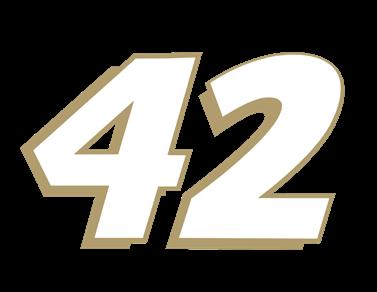



































Rheem & Christopher Bell setting up for Playoff Push. Congrats to Christopher Bell and the #20 Rheem® Racing Team for securing a spot in the Cup Series Playoffs! Here’s to continued success and a strong finish to 2023. Remember, whether it’s Christopher on the track or our products in homes and businesses everywhere—with Rheem’s quick installations and rapid energy savings, Fast Runs in the Family.












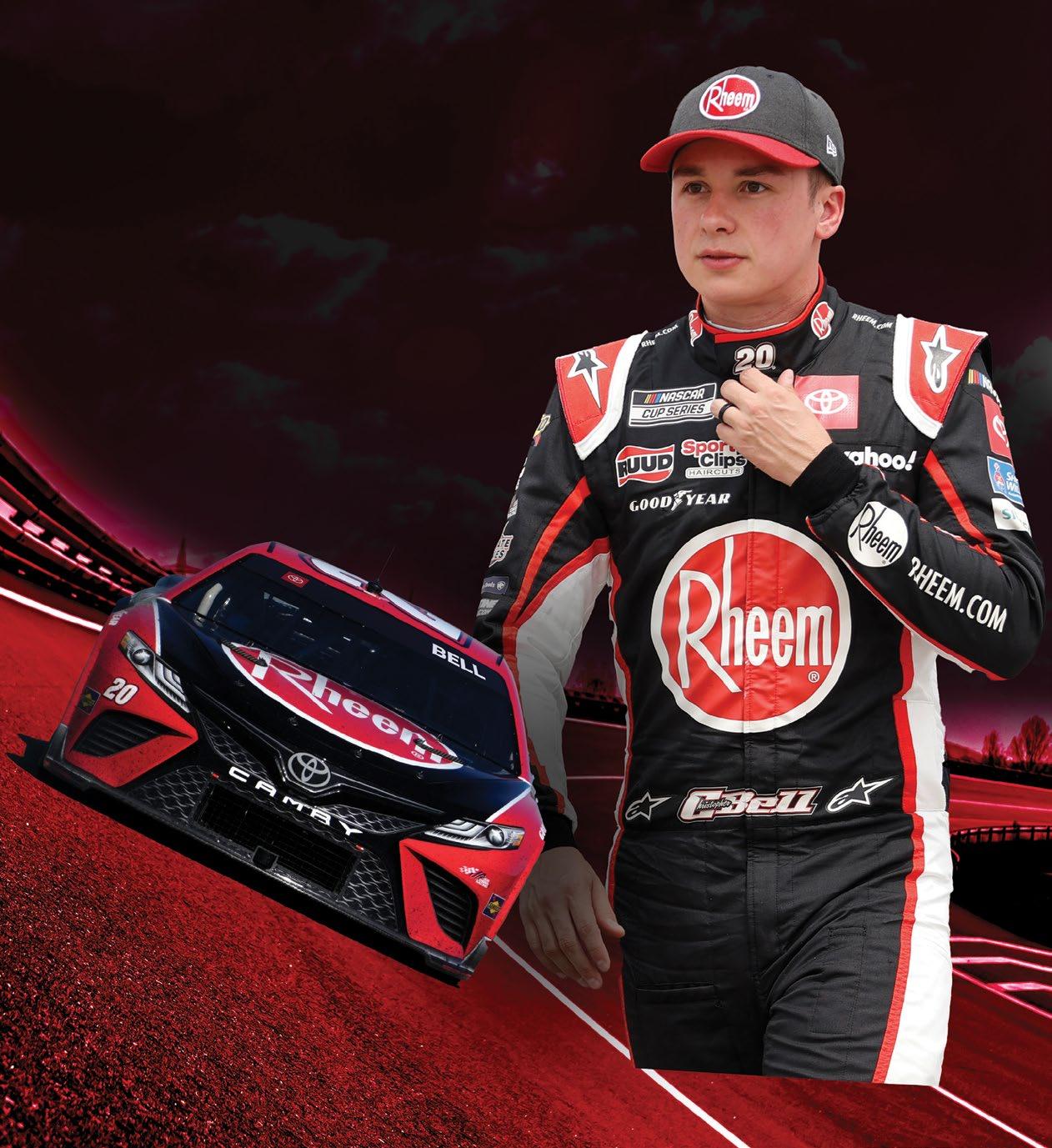
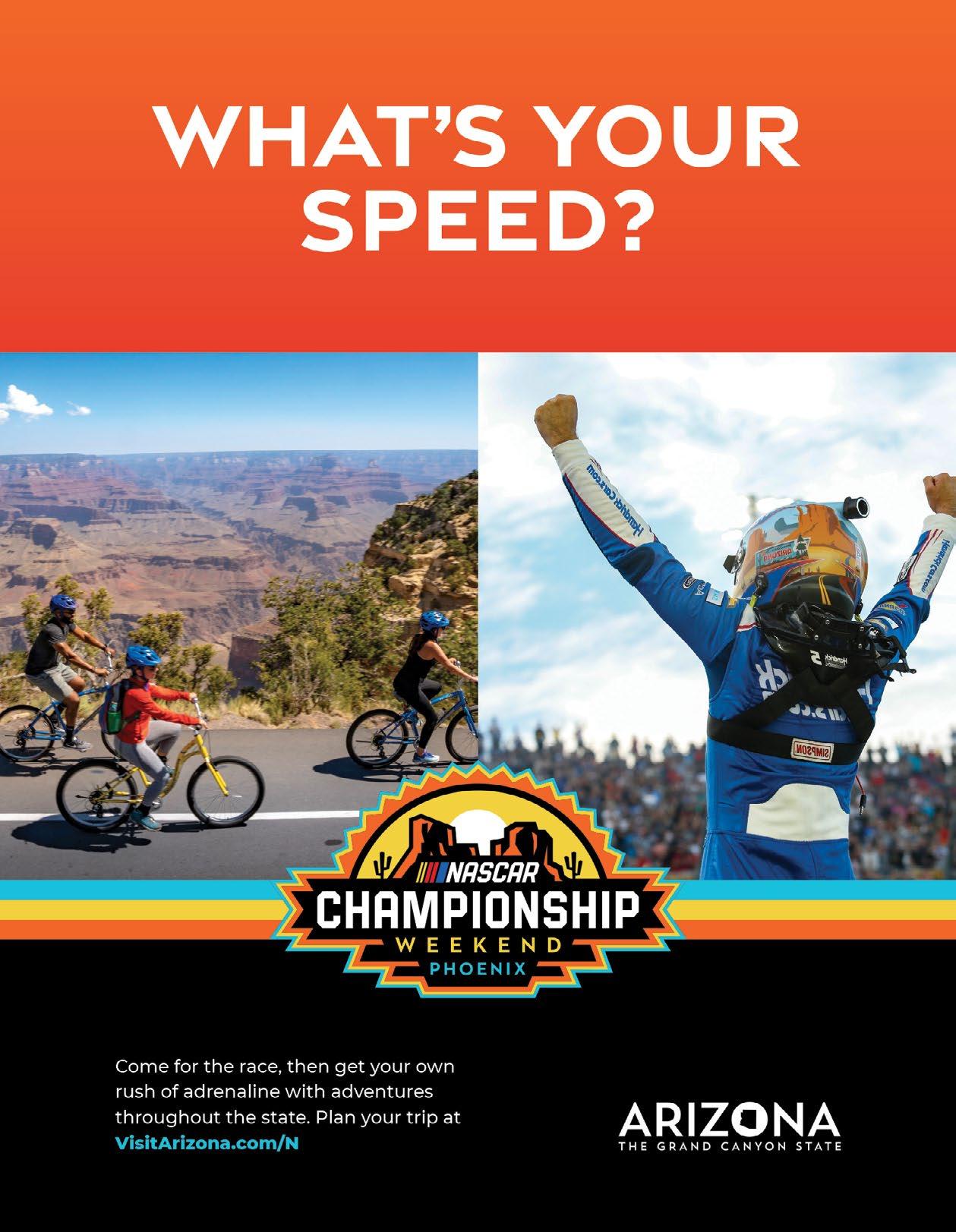






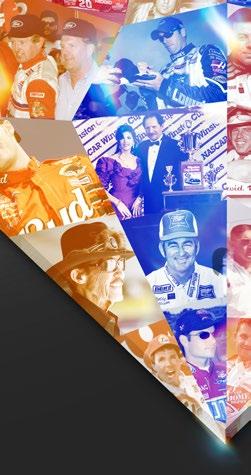

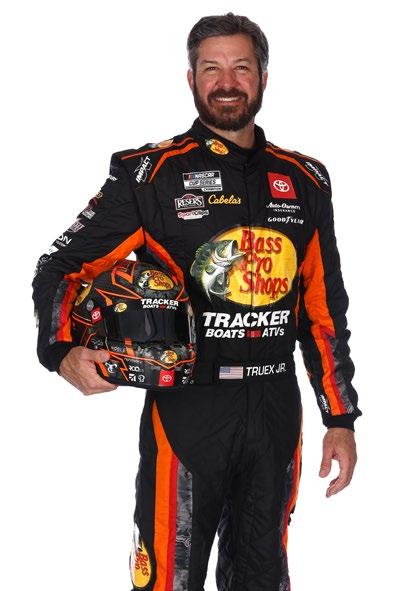



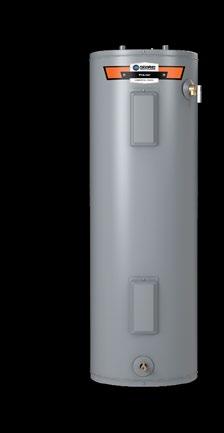
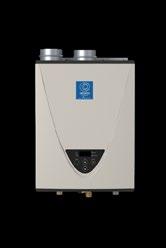



State Water Heaters is excited to partner with Jeb Burton on the race track and the whole Burton family on their outdoor TV show Crossroads with the Burtons. Just like Jeb Burton knows the value of high performing equipment on the track, we know the importance of high performing equipment in your home. Our ProLine® water heaters are designed to provide tough, commercialgrade performance that your family can rely on.
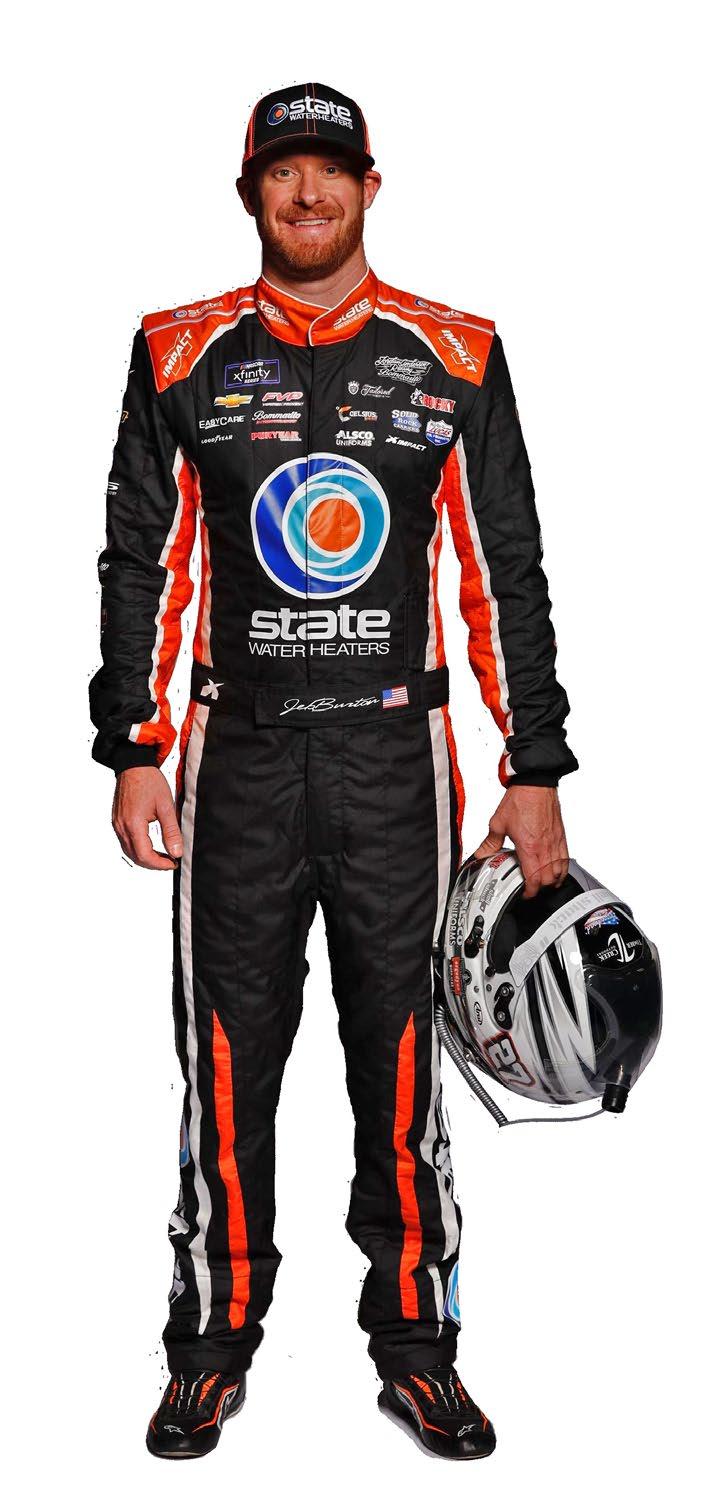




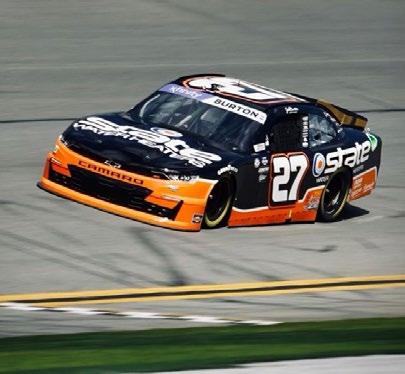 Jeb Burton
No. 27 State Water Heaters Chevrolet Camaro
Jeb Burton
No. 27 State Water Heaters Chevrolet Camaro
The OOTG Power Hour is a new video podcast hosted every month by YouTuber Eric Estepp and Xfinity Series driver Brennan Poole. Each episode, the two will cover the current events of NASCAR, interview a fan favorite driver, and host a special interactive segment where fans can have their voices heard.
ORDER THE LATEST NASCAR DIECAST CARS AT CIRCLEBDIECAST.COM
Chris Buescher has emerged as one of the most consistent drivers in the NASCAR Cup Series. The native of Prosper, Texas, roared onto the scene by capturing the 2012 ARCA Menards Series title and two years later became a full-time NASCAR Xfinity Series driver for team owner Jack Roush. With the 2015 Xfinity Series championship trophy on his shelf, Buescher’s rise to the top of the Cup Series pylon was a matter of when, not if. Now, the driver of the No. 17 Ford is enjoying his best season yet.
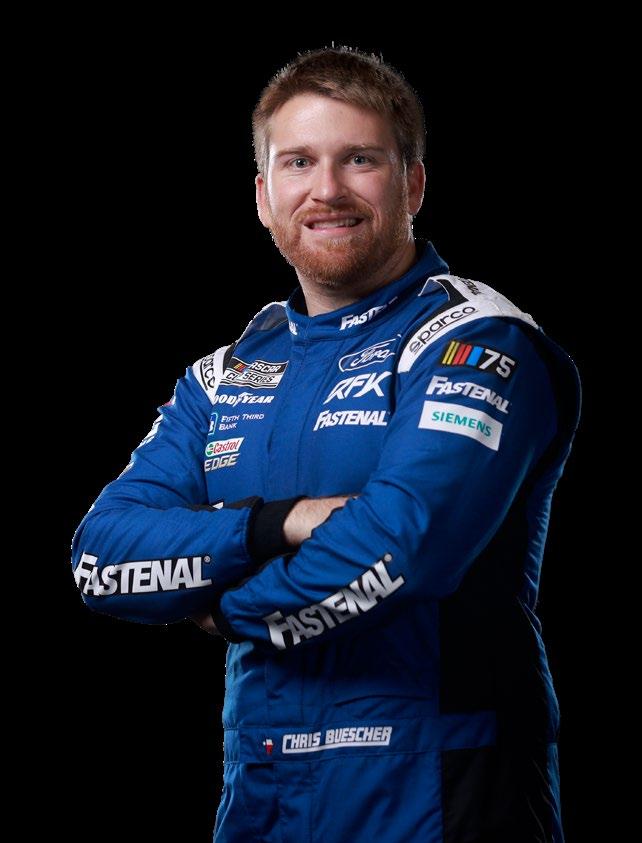
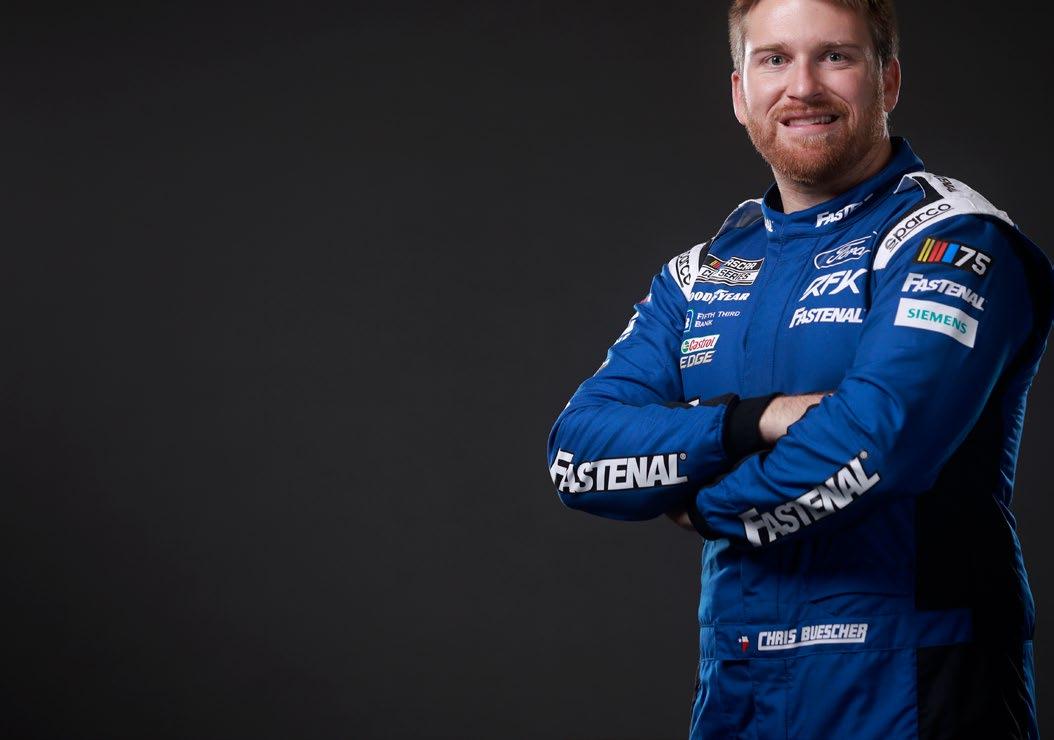 BY JOSEPH WOLKIN
BY JOSEPH WOLKIN
WHAT IS YOUR FAVORITE MOVIE?
“HAPPY GILMORE” because there are

WHAT IS YOUR FAVORITE WORKOUT?
I LIKE LIFT DAYS. I hate cardio, so we do lift days at the shop. I enjoy anything we do with the trainer
WHAT IS YOUR FAVORITE FOOD?
I LIKE BREAKFAST in general. I love me some eggs or French toast.

WHAT IS YOUR FAVORITE PIECE OF RACING MEMORABILIA?
I HAVE SO MUCH stuff stored up right now, and I’m getting stuff out and hanging it up on walls. I have some sheet metal from different cars that I’ve enjoyed and that I really like.
WHO IS YOUR FAVORITE ATHLETE OUTSIDE OF RACING?
PROBABLY, TRAVIS Pastrana. He likes to have a good time.

IF THERE WAS A MOVIE MADE ABOUT NASCAR, WHO WOULD PLAY YOU?
I THINK CHRIS Pratt. The look would be close enough and he’d have a good time. That would be a
 BY DUSTIN ALBINO
BY DUSTIN ALBINO
Throwback shirts, hats, die-cast cars, pins and more are the focal point of NASCAR collectibles. Some are valued much higher than others, but all vintage NASCAR gear is cool in its own right.
It’s not uncommon to see a NASCAR jacket enter pop culture, with celebrities often repping Jeff Gordon’s Rainbow Warriors jacket, or even a podcast host wearing a Davey Allison T-shirt. While all are collector’s items, some limited-edition memorabilia is much harder to find.
Other artifacts honor NASCAR in different ways.
There have been several marquee moments in the sport’s history, and looking back, people will do whatever it takes to secure memorabilia from a specific event. Think of the 1979 Daytona 500.

With a blizzard blanketing much of the eastern United States, additional eyeballs were on television sets that weekend. The Great American Race was being broadcast on CBS, and it happened to be the first live, flag-to-flag television coverage of a major NASCAR event.
Richard Petty won the Daytona 500 that year, which turned out to be the final of his seven Cup Series championship seasons. But the bigger story was the spectacular post-race fight. While battling for the lead coming to the checkered flag, Donnie Allison and Cale Yarborough traded paint for a chunk of the backstretch before wrecking in Turn 3.
When their cars came to rest on the apron, both drivers exited their respective vehicles and threw punches. The phrase, “And there’s a fight” from the legendary announcer Ken Squier was heard and is still played more than 40 years later. Donnie’s brother, Bobby Allison, also entered the fracas after getting hit in the nose by Yarborough’s helmet.
Earlier that week, at an event in Daytona Beach, Florida, Lamar Harris, a former car owner who raced against the Allisons before they got their start in NASCAR, was given pit passes for Speedweeks by Bill Gazaway, NASCAR’s director of racing operations at the time.
According to Harris’ grandson, Matt Harris, who wasn’t born for another three years, the package included pit passes to the 125-mile qualifying races, the NASCAR 200 modified race, the Daytona 300 and, most importantly, the Daytona 500. Harris also received paddock parking for the Daytona 500.
After a full day at the track that included time with Donnie Allison, Lamar returned to his hotel on the beach and suffered a heart attack. He died at just 54 years old.
The pit passes went unused as the Harris family packed up and returned to their hometown of Anniston, Alabama, a stone’s throw from Talladega Superspeedway.
It wasn’t until 2016, after Matt’s father Tim passed away, that Matt knew about the history that was sitting in his father’s dresser. And while Matt isn’t a huge collector of NASCAR memorabilia, these are items he will keep forever.
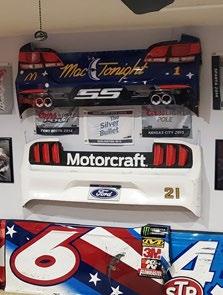

“I have a little bookshelf in my living room where I keep all of my cool little

(memorabilia),” Matt Harris said. “I display them and am proud of it. It’s a part of who I am. I have it out there for people to see.”
And that’s not all. Matt Harris owns more collector’s items, including old ticket stubs and multiple NASCAR rulebooks. He also has his grandfather’s NASCAR pins from the 1960s.
Meanwhile, Iowa native and now Texas resident Larry Newbrough collects just about anything and everything he can get his hands on.
In the late 1990s, Newbrough got hooked on NASCAR via the NASCAR Racing Papyrus computer game that he got at his school’s book fair. He wasn’t an avid collector prior to 2014, when he had roughly a dozen die-cast cars. Now, he owns north of 700 die-casts, all of which are 1:24 scale, with many custom pieces. He believes his total spent is between $30,000 and $40,000.
Off the top of his head, Newbrough’s favorite die-cast car in is collection is Dale Earnhardt’s wrecked car from the 1997 Daytona 500. While running among the contenders, Earnhardt flipped down the backstretch late in the race after contact from Dale Jarrett. After originally getting in an ambulance to head to the infield care center, Earnhardt jumped out and climbed back into his famed No. 3 Chevrolet to finish the race.
Over the years, Newbrough has had his share of favorite drivers, but currently it’s Brad Keselowski. He has a winning die-cast car from all 35 of Keselowski’s Cup Series victories; and even some from his Xfinity Series wins.


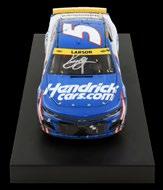
Aside from die-cast cars, Newbrough enjoys collecting sheet metal, with his first piece coming in 2007 off the center section of one of Carl Edwards’ noses in the Xfinity Series. His interest in collecting sheet metal stems back to 2002, when his family spent 11 days in Daytona for Speedweeks. And though he recalls it being hard to find sheet metal back then, when you did, it was “crazy cool.”




“They had all kinds of conferences going on with drivers going around at different places,” Newbrough said of his 2002 experience. “(My brother and I) went and saw they had auctions for sheet metal and they had Dale Earnhardt’s bumpers and everything like that. We just never in our lives thought we would be able to get any of it.
“Back then, it was so rare for things to get out because they didn’t scrap the body on every single car every week and hang a new body on it, so there wasn’t an abundance of sheet metal that got out. The stuff that did get out was crazy expensive. So we thought we would never get any of this stuff.
“Neither of us smoke or drink, so we’ve got to spend our money on something. There could be worse things. I play golf and collect memorabilia.”
Newbrough, who is a production manager and graphic designer at a Fast Signs in Texas, believes he’s spent roughly $80,000 on his sheet metal collection. He typically purchases the sheet metal through The Racing Warehouse or RaceDay Authentics in North Carolina. His favorites include rear bumpers from Tony Stewart, Jamie McMurray and Dale Earnhardt Jr., as well as the No. 55 door from when Mark Martin drove numbers that looked like a Boston Marathon bib in 2013.
Once Martin retired, Stewart became Newbrough’s favorite driver. And he has a whole section of Stewart collectibles, including a signed visor, gloves, a foam-padded headrest and one of the pit crew helmets from Stewart’s Bass Pro Shops car. Oh yeah, he also owns a pair of Stewart’s race-used shoes from the early 2000s, which is pretty high on his list of favorite items he owns.

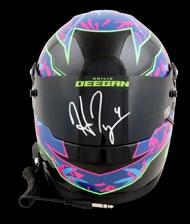
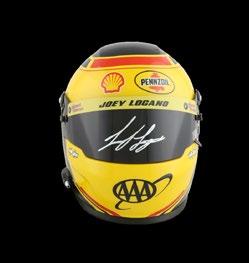
Recently, Newbrough purchased Michael McDowell’s pink window net from the 2022 Charlotte ROVAL race through Kurt Busch’s Window of Hope program. The program raised more than $100,000 for the second year in a row.

“The pink window net is pretty cool because I’ve had family members that have passed away from cancer,” Newbrough said. “So there’s more meaning with that one.”
Currently, he stores the majority of his purchases in what was a two-car garage. He also dubbed one of his rooms as the “American room” in his house, so anything that comes off a car that is red, white and blue goes in there.
NASCAR collectibles will always be a habit for many race fans. And some of them have fascinating stories behind them.

It’s hard to find many 53-year-old rookies competing in a NASCAR series.
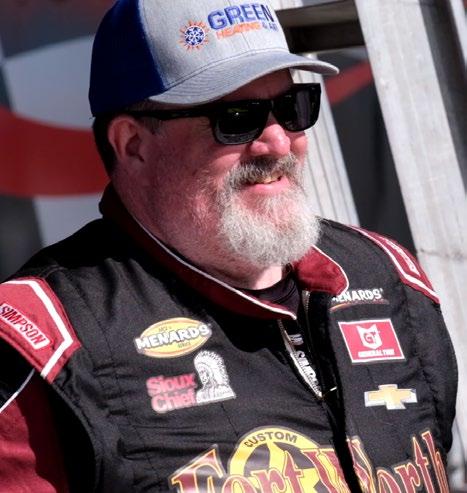
One notable exception is Jon Garrett, who this year is running his first season as a full-time ARCA Menards Series driver.
Garrett is able to race thanks in large part to longtime friend Lane Moore and Moore’s company, Venture Food Stores, although Garrett kicks in some sponsorship money from his own sister businesses — Fort Worth Screen Printing in Fort Worth, Texas, and Athens Screen Printing in Athens, Texas.
Garrett lives in the Athens area but has been away from his day job quite a bit this year while traveling the ARCA circuit. Not that he seems to mind.
“It’s pretty hectic but, luckily, I’ve got people at both my locations that take care of it when I’m not there, so it hasn’t been too bad,” Garrett said.
Garrett’s journey to full-time ARCA status has been an unconventional one, and that’s putting it mildly.
A local dirt-track racer in East Texas at the age of 24, Garrett captured numerous street stock victories before moving to the American Race Truck Series where he earned top rookie honors in 1999 and the series championship in 2002.
Garrett raced only sparingly over the next two decades, however, before jumping in an ARCA Menards Series car for the first time during a test at Daytona International Speedway in early 2022.
He went on to run three ARCA races last season, collecting one top-10 finish, before going fulltime racing in 2023.
Why did Garrett sit on the sidelines and forgo his racing aspirations for the better part of 20 years?
“Life, I guess, and funding,” he said. “I’d say probably 2005 is the last time I really raced trucks, and then I scattered a few races in between, around 2011ish, but not much. Kids became teenagers, and I lost some sponsorship, so I just didn’t have the opportunities to do the racing. I had other things going on.
“I’d say most people that race have the dream to make it to the big time. I had that, too, but I’d pretty much given up on it, and then things just kind of fell into place a couple years ago.”
It was actually 2019 when Garrett began to entertain the possibility of a return to competition. Upon seeing Bayley Currey’s name listed on an entry form for a NASCAR Craftsman Truck Series race, Garrett recalled how he once raced at the same Texas track where
Currey’s father competed. At this, Garrett contacted the Curreys, offered some sponsorship money and began occasionally joining them at the race track.
“I started going to the track, and that just kind of got the bug going again,” Garrett said. “So, I blame Bayley for all this, really. It just kind of progressed from there.”
Progressing, in Garrett’s case, meant connecting with Bayley’s longtime friend and mentor, Michael Harper, who encouraged him to show up for the ARCA test at Daytona last year. Garrett took his friend’s advice and arrived at The World Center of Racing hoping for the best.
“I got in the car and didn’t do anything stupid and held my line, and everything was good,” he said.
Although Garrett doesn’t consider himself a true contender to win most weeks this year, he’s been extremely competitive at times and moreover managed to steer clear of controversy.
“I always thought, ‘I can drive,’” Garrett said. “So, to this point, not making any major mistakes out there and being decently fast at some places makes me think that I have a little talent.”
Garrett admittedly endures some playful ribbing about being a 53-year-old rookie, but he doesn’t see his age as a hindrance.
“I get a little bit of the ‘old age’ stuff from people,” Garrett said. “I’m not the smallest guy, either; I’m 6-foot-3, high 200ish (in weight). I’m not your typical 18-year-old, 150-pound race car driver, but once I’m in the car, I can wheel it.”
Considering that it was at the age of 52 that former NASCAR Cup Series driver Harry Gant was still winning races at the sport’s highest level, it seems reasonable to think Garrett could do the same in ARCA if all the stars aligned.
Garrett could especially benefit from some additional sponsorship for his team — which he considers “probably a third-tier team” in the ARCA Menards Series. Some extra laps under his belt also won’t hurt.
“Everything’s basically new to me in these cars; I haven’t really raced anything like them,” Garrett said. “So, every race is a learning experience for me. I don’t really think my finishes are due to my age at this point. I feel plenty good at the end of the race. I ran 250 laps at Elko Speedway in late June, and I wasn’t fresh at the end, but I certainly didn’t fall out of the seat, either.”







































Toxic Waste® Hazardously Sour Candy® has quickly become the reigning champion of the sour candy category, o ering the most intensely sour experience on the market. It’s an enviable position that has allowed the company to ful ll a racing dream. Toxic Waste President Laura King explains, “We at Toxic Waste have been huge race fans for a very long time. We are so excited to team up with driver Brennan Poole to eld the JD Motorsports Toxic Waste Camaro at the Penzoil 150 at the Brickyard. We have dreamed of sponsoring a car for years. Now to see that dream come true in our hometown is a huge thrill for all of us.”


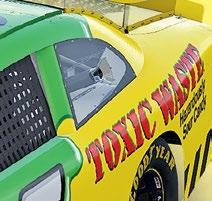
known for its super sour candies in an oozing yellow drum and the trending favorite Slime Licker sour rolling liquid candy.



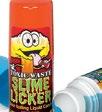























come true in our hometown is








Brennan, an avid fan of sour candies and an accomplished driver, will be relying on the power of Toxic Waste as he gears up for the Indianapolis X nity race on August 12th. Toxic Waste is
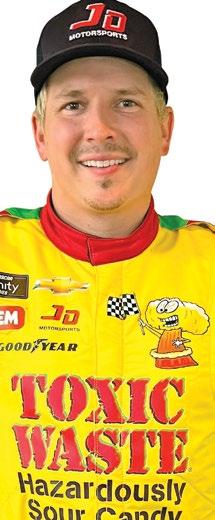




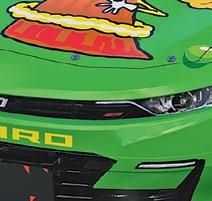
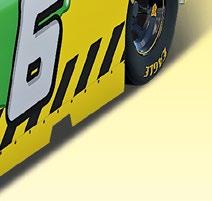
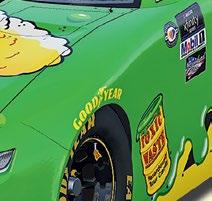

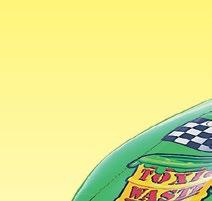

Brace yourself for an unforgettable sight as the striking Toxic Waste own a scale diecast version of this remarkable car. purchase!














Camaro rounds the track. Don’t miss your chance to own a scale diecast version of this remarkable car. Scan the code to purchase!









Follow Toxic Waste® Hazardously Sour Candy® on social media and shop online at ToxicWasteCandy.com
















There are a lot of important decisions to make on race day: How much time should you devote to driving to the track and finding parking? Which one of your favorite driver or team shirts should you wear? Where’s your lucky hat?
But there’s another critical choice to make before you get comfortable and await the green flag: How will you fuel your race-day experience? Whether your driver needs to gain some serious ground in the standings or you’re just there to have a good time, each track has its own unique blend of food vendors and choices to keep you full and focused.
While the options vary from track to track, here are some of the top categories of NASCAR track food to complement your race day.
Sitting amid dozens of people in the stands during a race doesn’t often lend itself well to eating foods that require utensils. With this in mind, many NASCAR food vendors serve brats or sausages that rival the traditional hot dog.

You can’t beat a good burger at a sporting event, and no matter what state you’re in, you can usually find some local flare that goes beyond your basic burger or cheeseburger. Some variations that are known to make cameos at race tracks are:
• Guacamole Burgers. A generous dollop of guac not only counts as a vegetable; it can also level up the average burger and sometimes add a little spice.
• Mushroom Burgers. Depending on where you are, sometimes this means a grilled portabella mushroom on top of a beef patty, and sometimes the patty is made completely out of mushrooms.
• Sloppy Joe Burgers. A staple of most American childhoods, adding Sloppy Joe mix to your burger can be a nice dose of nostalgia on race day.
• Colossal Burgers. In the mood for something bigger? Many track vendors also boast a double or, sometimes, triple patty experience for those with bigger appetites.
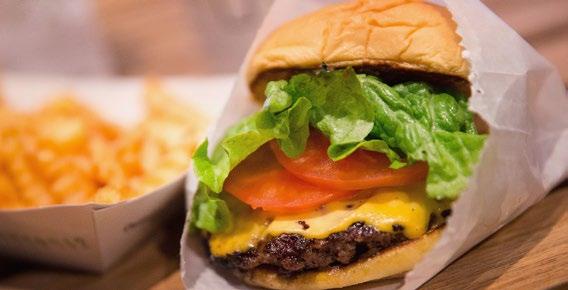
Whether the meat is local or store-brought, a juicy brat or sausage at the track is even better with these options:
• Peppers and other fixings. From grilled peppers and onions to coleslaw and crushed Fritos, many vendors have possibilities that satisfy whatever you’re craving.
• Hot mustard. There are typically plenty of condiment options beyond basic ketchup and relish.
• Hoagie roll. Because sometimes a regular hot dog bun just won’t do.
IT’S AN ADDED BONUS THAT SOME NASCAR TRACKS are in great barbecue states like Texas and North Carolina, and the presence of a hot grill at a race cannot be understated. With a range of mild, tangy and local sauces to match, some of the great barbecue staples you can take with you at the track are:
■ Pulled pork, Short ribs, Chicken, and Beef brisket. You can get your barbecue at many locations as a standalone meal, in a taco, in a sandwich or any way you prefer to enjoy it. Some vendors will even put it into grilled cheese.
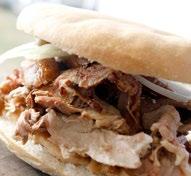
This is one of NASCAR’s best foods because, although one may not necessarily associate tacos with the track, each location does it differently. Some of the most common taco varieties you can find are:
• Street tacos. This option alone offers different varieties of beef, chicken and pork, and if there are warm tortillas on the menu? Even better.
• Walking tacos. Walking tacos lend all the fun and flavor of a regular taco in a more track-friendly format.

• Frito pie. Some locations combine the walking taco and Frito pie together or interchange the two names, but this heavenly amalgamation of Frito chips, seasoned beef, cheese and other fixings can hit the spot for a long race.
Bonus: If you’re looking for some Mexican flare but tacos aren’t it, several locations also offer burritos.
SAVORY EXPERIENCES HAVE THEIR place, but when you’ve got a sweet tooth – or if you need to celebrate a victory lap
– there are also NASCAR food vendors who specialize in sweets.



■ BROWNIE BITES. A warm brownie is one of life’s great comfort foods, and that’s no exception at an event as unpredictable as a NASCAR race.
■ CHURROS. A newcomer to the track vendor scene, these tube-shaped pastries come in a wide variety of flavors, from cinnamon sugar to chocolate drizzle.
■ MILKSHAKES. Another mainstay of American culture that offers a variety of flavors and local favorites.

While some race goers like to expand their flavor palettes while watching laps, others prefer to stick to the oldreliables that have been sold by food vendors for generations:
• Hot dogs. A plump frank with classic ketchup, mustard and relish is sometimes all you need to turn a good afternoon into a great one, regardless of where your driver is in the pack.
• Chicken fingers. If you’re at the track with a picky eater or need something simple, you can always find a vendor with chicken fingers on the menu.
• Fries. Smothered fries, loaded fries, fry cups or fries as a side with your burger or hot dog – you can always count on at least a few on the floor after a good race.
• Nachos. Easy, portable, filling and shareable if you need to feed multiple people.

• Pretzels. Warm, soft pretzels with cheese – either as a side or as the entire meal – is not only one of the simplest foods to eat, but it’s also one of the least messy.
• Popcorn and Peanuts. The true OGs of sporting events, these salty snacks can give you just the dose of nostalgia you need to fall back in love with Sunday afternoons at the track.
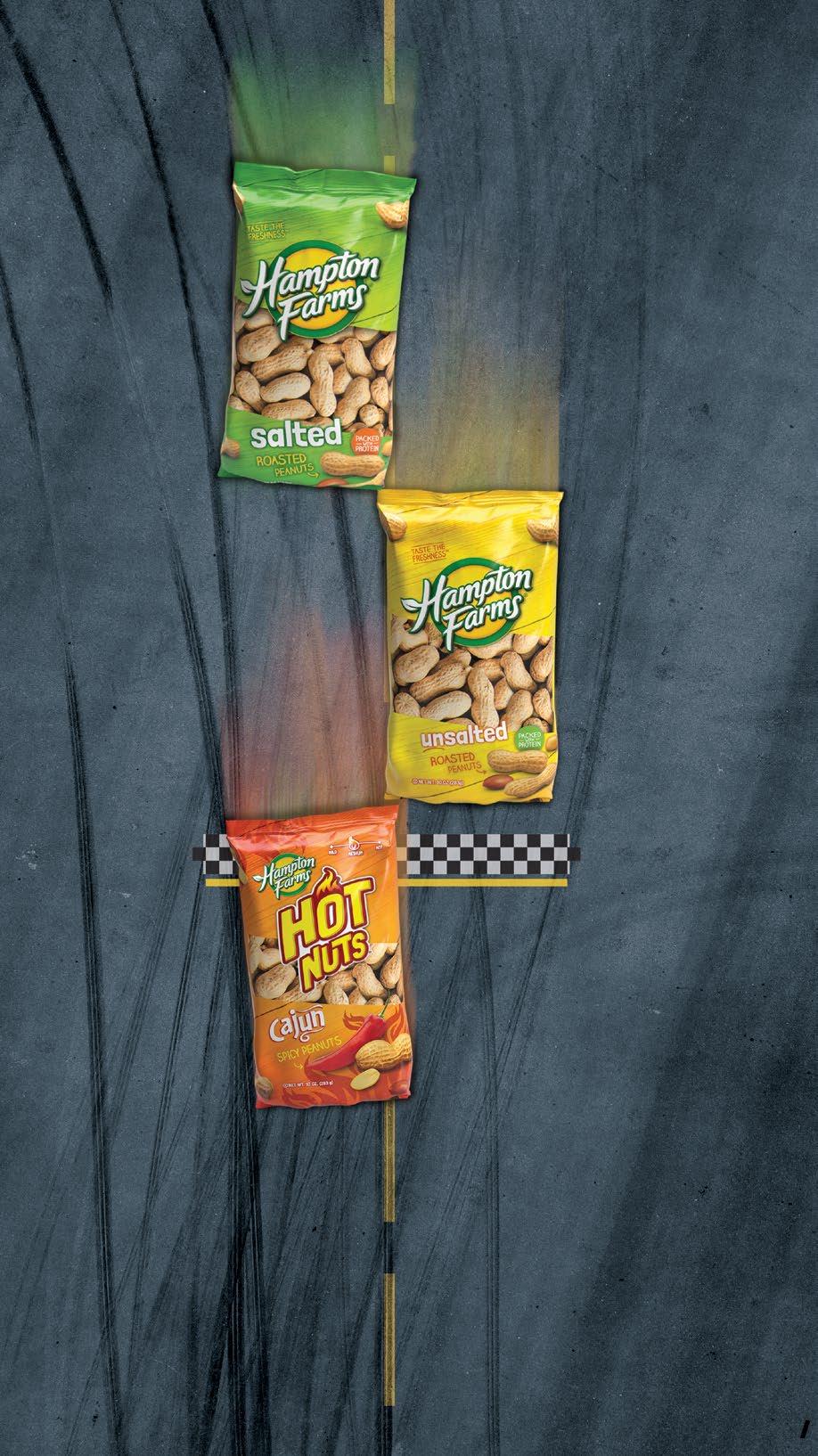
While it adds an element of anticipation to see new food options pop up at the race, there’s also something to be said for some of the reliable favorites that loyal race goers can always find:
• Talladega Superspeedway: “The Big One” meatball. The name is not ironic; this softball-sized meatball holds a delicious surprise – a blend of pulled pork, cheeses and barbecue sauce.
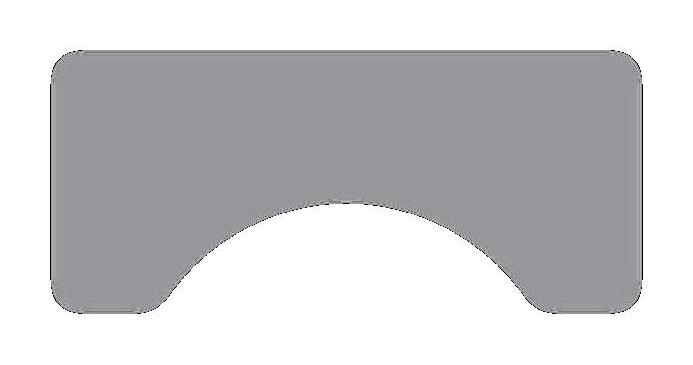



• Martinsville Speedway: The Martinsville hot dog. A tradition for more than 50 years, this Martinsville staple has become as important to the fans as the race itself, complete with a steamed bun, a steaming red hot dog, mustard, chili, onions and topped with vinegar-based slaw.
• Watkins Glen International: The Pierogi Burger. A newer addition to the menu at Watkins Glen, this rookie is already a hit with the fans. It features a pan-fried potato and cheese pierogi on top of a burger patty, accompanied by a secret sauce, lettuce and grilled onions.
A day of excitement at a NASCAR race doesn’t have to be limited to what’s happening on the track. No matter what track you’re at, you can also build a food experience full of flavor, fun, and maybe a little adventure.
Despite achieving great success as an actor on both the big and small screens, Frankie Muniz has long dreamed of being a professional race car driver.
At 37 years old and after becoming a household name through his performances in “Malcolm in the Middle” and “Agent Cody Banks,” Muniz has made a drastic career change and is finally living his dream by competing in the ARCA Menards Series.
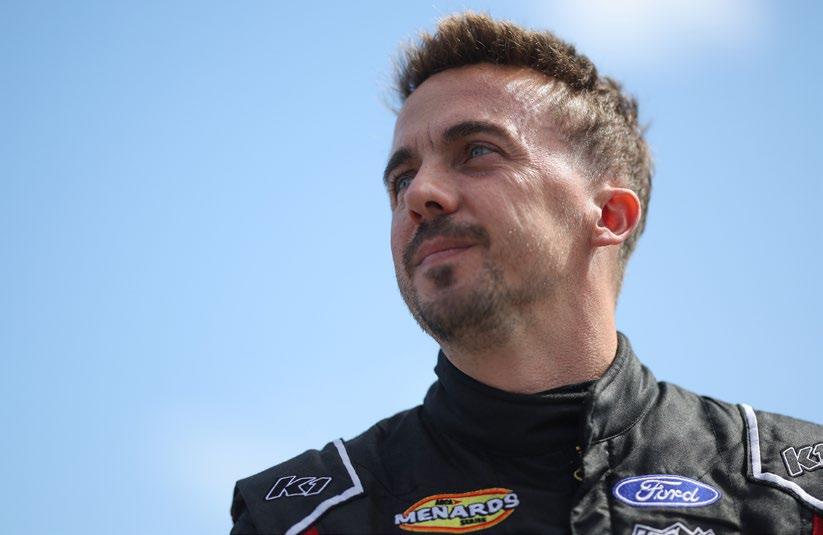
Driving the No. 30 Ford fielded by Rette Jones Racing, Muniz recorded five top-10 finishes in the series’ first seven races. The New Jersey native stood second in the series standings heading into summer.
HOW HAVE YOU ADJUSTED TO COMPETING IN THE ARCA MENARDS SERIES?
I knew going into it that it wasn’t going to be easy. I knew I was going to have to put in a lot of work. It’s been a roller coaster of emotions. Showing up at Daytona, we announced we were running the full season. Most people going into this would slide in under the radar and make sure it was going well before people started to notice. But I put pressure on myself to perform well, which I do anyway, especially knowing I have eyes on me.
It’s definitely been a crazy learning experience. I’ve been thrilled with how everything has gone so far. Every single time I’m in the car, it’s a learning experience. Unfortunately, because it’s such an expensive sport and I can’t be in the car all the time testing, the only times I’ve been in the car have been for race weekends. It’s hard to continue to get better unless you’re in the race car, which I’m trying to do. I’m excited for this part of the season, when we start going almost every weekend.
HOW ARE YOU PREPARING FOR RACES WITH SUCH LITTLE EXPERIENCE AND NO TESTING?
Obviously, I’m trying to train in the gym. It’s so much more physically demanding than I think people who don’t race anticipate.
Mentally, it’s exhausting. I’m trying to stay fit in the gym with lots of cardio and lifting. I’m watching all of the races from previous years to see if I can pick up on things people were doing or if they make a mistake, figure out what happened.
I look at my competitors and I feel that the only place I’m lacking in terms of preparation is time in race cars, which is a huge thing. Jesse Love is racing trucks, late models, etc. He’s always in race mode. For me, it’s just been racing on ARCA weekends, and it’s the only thing I wish I had more of. I hope by the later part of the season that I’ll be winning races.
YOU’RE RUNNING CONSISTENTLY IN THE TOP 10. WHAT ARE YOU MISSING BESIDES TRACK TIME TO COMPETE FOR WINS?
We struggled a little bit at Charlotte with setup stuff. We pitted three times during the race because it changed a lot from practice and qualifying. We finally got it solid toward the end of the race, and I was running the fastest or second fastest laps at the end.
The issue for me is race craft. I’ve never been in a situation where I get close to someone on the track, the car is going to do this or that. I’m learning as I’m doing it. It’s something that people perfect with years of doing it. I’m not too far off from a speed standpoint. When I have to lap cars, it takes me longer than it should and I hesitate because I don’t know if they’ll stay in their lane.
I was racing with Connor Mosack and I lost 10 car lengths by being too cautious. I’m learning every time I’m in the car. I know I still have a lot of room for improvement, so I’m happy with where I’ve been, but it’s not going to be where I end up. The small things that add up to finishing sixth or seventh will hopefully get smaller and I’ll keep closing that gap.
YOU’RE STILL ACTING, AS YOU MENTIONED. SO HOW ARE YOU MANAGING YOUR TIME?
When I went into the racing world, I said, “This is all I want to
I’ve been thrilled with how everything has gone so far. Every single time I’m in the car, it’s a learning experience.
focus on.” This movie, I was sent a year ago, and the script was phenomenal. In terms of acting, I don’t do much. I do things here and there – if the time permits this type of situation. We were supposed to film this movie after Daytona, when we had the five or six week break before Phoenix. It got postponed, and the last break I have for the whole year was the break between Charlotte and Berlin.
They fit it in where I left Charlotte after the race – it was filmed in North Carolina – drove up there, had a wardrobe Saturday and started filming on Sunday. This film was definitely one of the most challenging things I’ve ever done and in a good way. I’m really proud of what I did. It was so emotional. It was hard to switch off those feelings and the crazy schedule and go back to being a race car driver.
I know it’s a very lofty goal for me to set, but I want to race in the Cup Series. I’m pretty sure every driver probably says that, but I really do. I’m 37 years old, and I’m getting into the sport of stock car racing. I definitely plan on moving up, and the plan is to move up to Xfinity or the Truck Series next year. As of right now, it’s contingent on how the rest of this season goes. I don’t want to move up too fast. I don’t want to be a 30th-place guy; I want to show up and feel we have a chance.
It has to do with sponsorship, too. You need to be six months ahead. We’re trying to figure everything out. I’m fortunate to have an amazing relationship with Ford, and they want me to be in a Ford next year. We’re having meetings to figure everything out and get ahead of the ball. We went into this not knowing what to expect. For potential sponsors and partners, they probably thought, “Is he going to run 35th?” People didn’t know what to expect, and people are accepting the fact that I belong in the series and that I can be competitive. I’m the only person who’s finished every lap this season, so that in of itself is a positive.
I’m doing what I can to be the best racer I can be, and we’re trying to raise the funds to show up every week. It’s a never ending journey of a race car driver.


FROM “AGENT CODY BANKS” AND “MALCOLM IN THE MIDDLE” TO BEING A RACE CAR DRIVER, HOW DID THIS HAPPEN?
I was always a massive fan of racing,
but I didn’t grow up in a family that was around racing. Most people I’m racing started when they were 5, 6 or 7 years old. I got an opportunity when I was 18 or 19 to do the Pro Celebrity Race in Long Beach. The greatest feeling in my life was winning that race. I knew I was hooked, but how do you become a race car driver?
One Champ Car team was like come down to Houston, we’ll do a test and it’ll be fun. I was pretty fast, so they signed me to a two-year development deal. The next thing I knew, I was racing a Formula BMW in 2006 and I jumped up to the Champ Car Atlantic Championship, which I drove in 2007, 2008 and 2009 until I got hurt.
I have a decent amount of racing experience, albeit not in stock cars. I always knew – even back then – that I wanted to go stock car racing. I got pretty badly hurt in 2009. I broke my back, broke a bunch of ribs and had pins in my hand, and it took me a long time to heal. That temporarily stopped my racing.
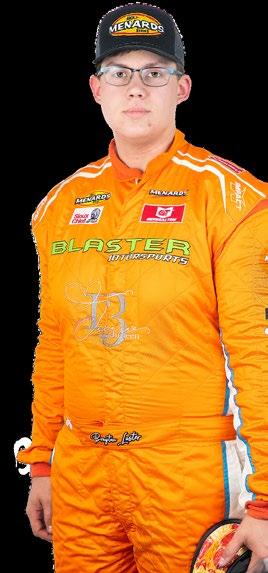
It’s been the most incredible experience so far, and I don’t want it to end. We have to find some partners to keep the ball rolling.” WHAT WOULD IT MEAN FOR YOU TO WIN A RACE?
I actually can’t even imagine the emotion that I would feel. One of my favorite things about being a race car driver is that it’s not subjective. As an actor, I can go in – like I just did – work so hard, put every ounce of my effort and being into this role, and people can go, “Eh, it’s OK.”
As a race car driver, if I put in the work, you see the results in black and white. If I’m good and if I’m fast, I’m at the top. If I’m not, I’m at the bottom. It’s not subjective.
I would cry. This is something I want so badly, and it’s something I’m working really hard for. This is a huge challenge for me. I am stepping out of my comfort zone. I could just continue being an actor and continue doing other things that are easier, but I want this and I want to prove this to myself and everybody. This isn’t a fluke. Hopefully, people are starting to realize that with what we’ve done so far. I’m not just there and in the way. I can be competitive. To win would be insane.
I’m sure you’ll see some of the names in the ARCA Series in the Cup garage eventually. I’ve been fortunate enough to get to do a lot of cool things, but that would be the coolest.
Scott Deans, founder and CEO of Houston-based sports-technology company BeONE Sports, is a former scholarship student-athlete for the Division 1 Portland State University Vikings football team on which he was a place kicker and punter in the late 1990s.
During his high school days in Redwood City, California, Deans was a multi-sport athlete and in 1994, he was selected to the Cal-Hi all-state football team alongside the likes of legendary NFL quarterback Tom Brady.
“I actually tried out for the NFL and didn’t make it,” Deans said. “I didn’t make a team. That was 24 years ago – and ever since then, I’ve been fascinated with performance capability and the importance of specialized training in order to get to the next level.”
It’s with this background and subsequent decades in design, data and analytics that Deans and his small, but high-powered team at BeONE Sports are the innovators and masterminds of what they’ve coined “comparative analysis,” a concept that involves athletes at all levels harnessing the power of artificial intelligence to compare their body mechanics and positioning against the mechanics and positioning of highly accomplished collegiate and professional athletes.
Through this advanced athletic training and performance analysis – available via the recently launched BeONE Sports phone app – amateur athletes, or nonamateurs simply looking to get better, can
experience career-changing performance gains at virtually no cost.
“You can essentially record yourself doing an action, and then we will have digitized other accomplished athletes doing that action, and you can quickly visualize and learn from calculations,” said Deans, who launched BeONE Sports in June 2021. “So, you’re getting real-time feedback and visual error identification to improve your very next rep, while essentially emulating a professional athlete. We can apply this across all sports, or any human movement, for that matter.”
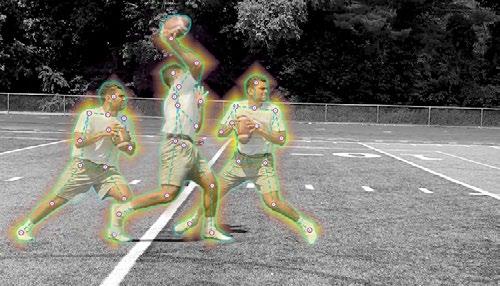
NASCAR, where highly skilled pit crew members go over the pit wall with the goal of servicing their vehicle in as little time as possible, is no exception.
“You have five or more people jumping the wall, running to a spot, doing a series of movements exactly the same over and over and over to find the fastest possible outcome,” Deans said. “That’s exactly what comparative training is meant to do, because we can now track the tire guy or gasman or jackman and basically train them in what we call isolated actions. The goal is to use the technology to tell an athlete, ‘Hey, we’ve recognized your left elbow is 76 percent of the time going higher than is optimal, and if we get you to look at professionals from Hendrick Motorsports and some of the other top teams, these guys are the best and his elbow is down.’
“So, let’s try to train to that, and we’re creating a product that lets any team – with very little funds – be able to make that analysis with nothing but a mobile device. And that’s the aha moment.”
JD Motorsports, a NASCAR Xfinity Series team with limited resources compared to the sport’s mega teams, had that aha moment earlier this year when it decided to partner with BeONE Sports to find speed and increased performance using the company’s computer vision algorithms and patent-pending comparative training technology.
Seeking to narrow the performance gap to the bigger teams, JD Motorsports recognizes that the difference between a 12-second pit stop and a 14-second pit stop, for example, is the difference between its driver, Brennan Poole, gaining multiple positions on the race track or losing multiple positions. And precious seconds gained or lost on pit road can ultimately be the difference between winning and losing.
This is where BeONE Sports’ cutting-edge, results-oriented technology can help in a big way.

“Our mission as a company – to globalize access to specialized training – means this is the most affordable and accessible solution,” Deans said. “It’s like $3 or $4 a month to participate using any mobile device. So that means regardless of your sponsorship or regardless of your team size, you can start to apply this technology, and that’s the kind of big potential it has if other teams got interested in trying to test it out.
“So, that’s how I got connected with JD Motorsports. The forward thinking, innovation and pursuit of performance from Tony Priscaro, VP of sales and marketing, he was like, ‘I love this. Let’s go, let’s do it.’
An unlikely intersection of college athletics and NASCAR will take place Sept. 9 at Kansas Speedway where Brennan Poole, driver of the No. 6 Chevrolet Camaro for JD Motorsports owned by Johnny Davis, will pilot a car clad in University of Kansas colors in the Kansas Lottery 300.
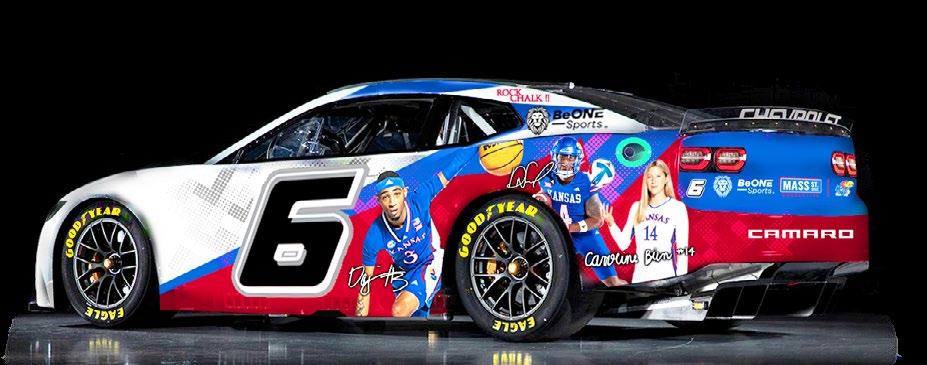
Drenched in Jayhawk colors, the race car is the product of a multipronged, carefully crafted collaboration among JD Motorsports, BeONE Sports and Mass St. Collective – the NIL collective founded in 2021 to help KU student-athletes build their personal brand and legally profit from their name, image and likeness.
Poole’s vehicle will prominently feature the name, image and likeness of 11 KU student-athletes who include members of the university’s football team, men’s and women’s basketball and volleyball teams.
Bringing the various parties together for this first-of-its-kind effort is BeONE Sports, a Houston-based startup company that at Kansas will serve as the primary sponsor on Poole’s No. 6 car for the second time this season (the first occasion was the NASCAR Xfinity Series race in March at Circuit of The Americas in Austin, Texas).
“True innovation is what is moving the needle. People who are not worried about the old constructs and are trying to find the best opportunity for student-athletes, are the ones that are doing amazing things like this,”
BeONE Sports CEO Scott Deans said. “The reason I’m able to do this is because we found JD Motorsports, who was willing to look beyond what’s next and kind of roll the dice with us and do this.”
And Mass St. Collective, an innovator in NIL, recognized that, “This is an amazing opportunity, and we want to find the most signature and unique opportunities for our student-athletes to build their brands in new and meaningful ways,” said Dan Beckler, coowner and president of Mass St. Collective.
“Dan and I quickly realized the potential of this collaboration, and it was like, ‘Oh my gosh, yes. Let’s figure out how to do this. This is impossible right now, but let’s figure out how to do it.’ And here we are. This is the result of months of work, brainstorming and thinking outside the box.”
BeONE Sports – developers of a platform where accomplished athletes’ movements are digitized into a phone app with the goal of creating a training paradigm for others to follow – is not only sponsoring JD Motorsports but sharing its innovative approach with the small team headquartered in Gaffney, South Carolina.
Utilizing the technology available from BeONE
Sports, JD Motorsports hopes to become more competitive with the NASCAR Xfinity Series’ top teams and is exploring a variety of applications of comparative training within the team.
“The partnership with JD Motorsports is a real testament to their forward thinking and relentless pursuit to find improved performance,” Deans said.
Deans, who founded BeONE Sports just over two years ago in the same month (June 2021) that the NCAA formally commissioned the NIL, couldn’t be more excited about the partnership or seeing the University of Kansas-themed car – which he anticipates being “heavily celebrated” – on the race track. Appropriately, Kansas Speedway is located less than 45 minutes down the road from the University of Kansas in Lawrence.
“Scott and I were on a Zoom call talking about random business ideas and he mentioned working with NASCAR. The first race I went to was at Kansas Speedway and the light went on for both of us! It was an aha moment that is rewarding to see come to fruition to build the brands of these 11 KU student-athletes in a new way.” Beckler said.
Deans expects several of the studentathletes who appear on Poole’s car to be in attendance for the Xfinity Series race at Kansas. Among the student-athletes who agreed to participate in the project is 7-foot-1 center Hunter Dickinson, a highly coveted recent transfer to the KU men’s basketball team after starring at the University of Michigan last season.
The KU men’s basketball program is, of course, one of the most storied programs in college basketball history, having won four Division 1 national championships, including most recently in April 2022 when the Jayhawks defeated the University of North Carolina at Chapel Hill.
Members of the KU football team displayed on the car will be sporting newly designed jerseys that are set to debut in the upcoming fall season.
“As the founder of a fairly young start-up, I would have never imagined that we’d have the opportunity to be working with such a revered university, much less be running around on a NASCAR stock car. That’s wild to me,” said Deans, who was a place kicker and punter at Portland State University over two decades ago. “But I believe in being bold but curious all the time and trying to make things happen that nobody’s ever done. This is literally a case where it’s unprecedented.”
This is an amazing opportunity, and we want to find the most signature and unique opportunities for our student-athletes to build their brands in new and meaningful ways.
DAN BECKLER CO-OWNER AND PRESIDENT OF MASS ST. COLLECTIVE
Dale Earnhardt posted 11 wins and 24 top-10 finishes as he dominated the 1987 season en route to his third NASCAR Cup Series championship and his second straight behind the wheel of the No. 3 Richard Childress Racing Chevrolet.
BY BEN WHITEAfter a very successful 1986 season that included Earnhardt claiming his second NASCAR Cup Series crown, the aggressive, second-generation racer from Kannapolis, North Carolina, was poised to repeat his effort as the 1987 season dawned.
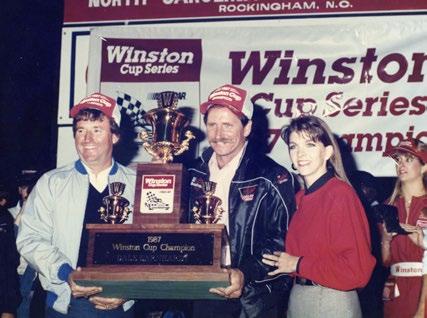
Earnhardt and team owner Richard Childress were building a union that most everyone envied. Both driver and team owner were very much alike. They had driven against each other in the Cup Series before Childress’ retirement in 1981 to make way for Earnhardt to drive his cars, and they came from similar personal backgrounds. Now, they were winning races and championships together and showing their closest competition how it was done.
Together, they were laying the groundwork for an incredible dynasty that would be strong well into the 1990s.
Earnhardt was successful on short tracks and superspeedways alike. He was on top of his game behind the wheel and he had a lightning-fast pit crew led by crew chief Kirk Shelmerdine. Their chemistry was magical, especially on the toughest tracks where Earnhardt shined brightest.
Bill Elliott, driver of the No. 9 Melling Racing Ford, proved to be Earnhardt’s closest rival but could not keep up with the championship pace of the RCR organization. Elliott’s six victories and 16 top-five finishes simply weren’t enough to mount a solid title challenge.
In the end, Earnhardt finished 489 points ahead of the popular driver from Dawsonville, Georgia.
DALE EARNHARDT, driving the No.3 Richard Childress Racing Chevrolet, recorded 11 NASCAR Cup Series victories and 24 top-10 finishes. Earnhardt enjoyed a solid season from the opener at Daytona, finishing fifth. From there, he established himself as a winner and championship contender in all 29 events on the schedule. He held the point lead from the second race of the year at Rockingham Speedway and topped Bill Elliott in the final standings.
DARRELL WALTRIP, driver of the No. 17 Hendrick Motorsports Chevrolet, went from third to first in the final turn and scored an upset victory in the Sept. 27 race at Virginia’s Martinsville Speedway. Dale Earnhardt, Terry Labonte and Waltrip were running 1-2-3 when they tangled entering Turn 3 on the final lap. Earnhardt and Labonte both crashed while Waltrip cruised to the checkered flag for his only win of the season.
DALE EARNHARDT’S No. 3 Richard Childress Racing Chevrolet claimed 11 wins and had 24 top10 results in 29 starts.
Driving the No. 9 Melling Racing Ford, Bill Elliott won six times and posted 20 top-10 finishes in 29 races.
Feb. 15 Daytona International Speedway Bill Elliott
March 1 Rockingham Speedway Dale Earnhardt
March 8 Richmond Raceway Dale Earnhardt
March 15 Atlanta Motor Speedway Ricky Rudd
March 29 Darlington Raceway Dale Earnhardt
April 5 North Wilkesboro Speedway Dale Earnhardt
Apr. 12 Bristol Motor Speedway Dale Earnhardt
Apr. 26 Martinsville Speedway Dale Earnhardt
May 3 Talladega Superspeedway Davey Allison
May 24 Charlotte Motor Speedway Kyle Petty
May 31 Dover Motor Speedway Davey Allison
June 14 Pocono Raceway Tim Richmond
June 21 Riverside International Raceway Tim Richmond
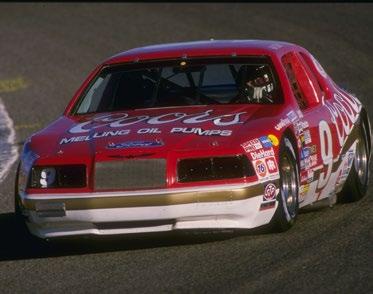
June 28 Michigan International Speedway Dale Earnhardt
July 4 Daytona International Speedway Bobby Allison
July 19 Pocono Raceway Dale Earnhardt
July 26 Talladega Superspeedway Bill Elliott
Aug. 10 Watkins Glen International Rusty Wallace
Aug. 16 Michigan International Speedway Bill Elliott
Aug. 22 Bristol Motor Speedway Dale Earnhardt
Sept. 6 Darlington Raceway Dale Earnhardt
Sept. 13 Richmond Raceway Dale Earnhardt
Sept. 20 Dover Motor Speedway Ricky Rudd
Sept. 27 Martinsville Speedway Darrell Waltrip
Oct. 4 North Wilkesboro Speedway Terry Labonte
Oct. 11 Charlotte Motor Speedway Bill Elliott
Oct. 25 Rockingham Speedway Bill Elliott
Nov. 8 Riverside International Raceway Rusty Wallace
Nov. 22 Atlanta Motor Speedway Bill Elliott
PRESIDENT Ronald Reagan
NO. 1 AT THE BOX OFFICE Beverly Hills Cop II
NO. 1 SONG
“Walk Like An Egyptian” by The Bangles
POP CULTURE
The first “The Simpsons” cartoon short was shown on the Tracey Ullman Show.
GALLON OF GAS $1.87
1987
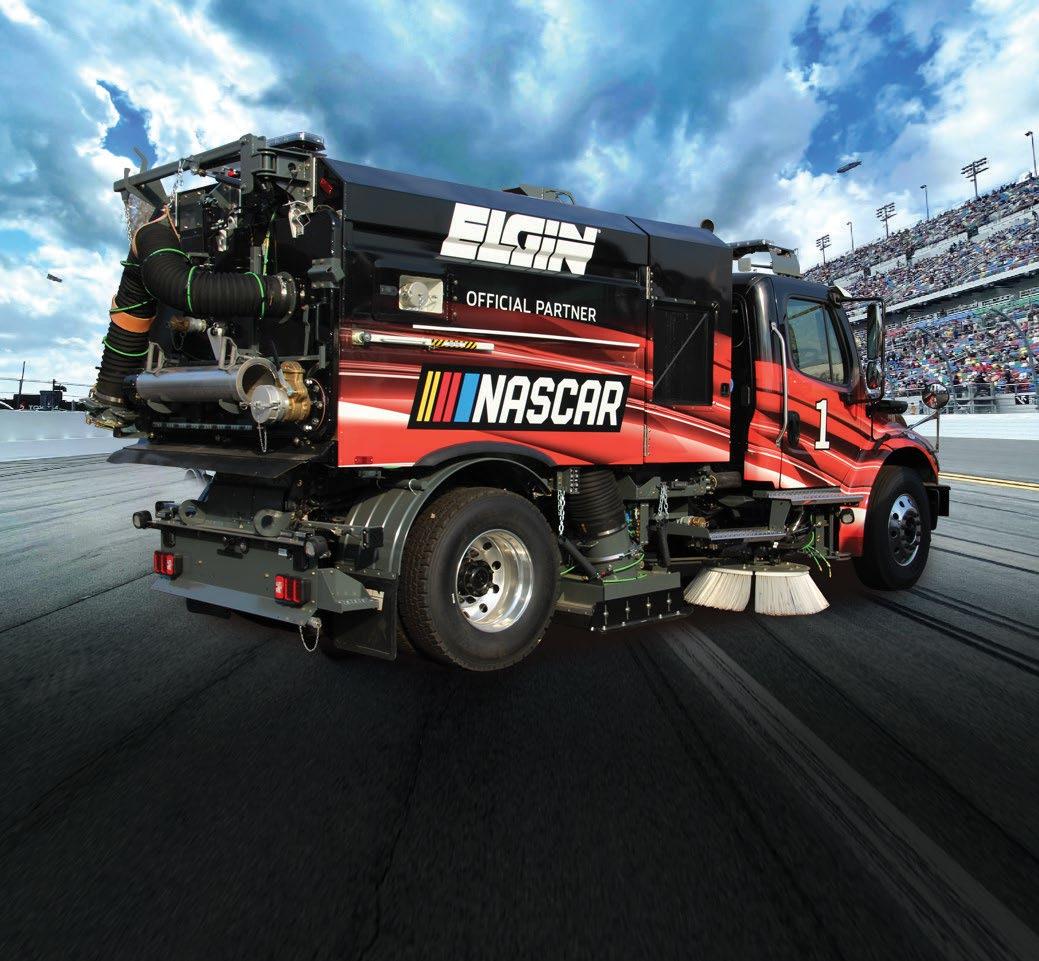
Whether

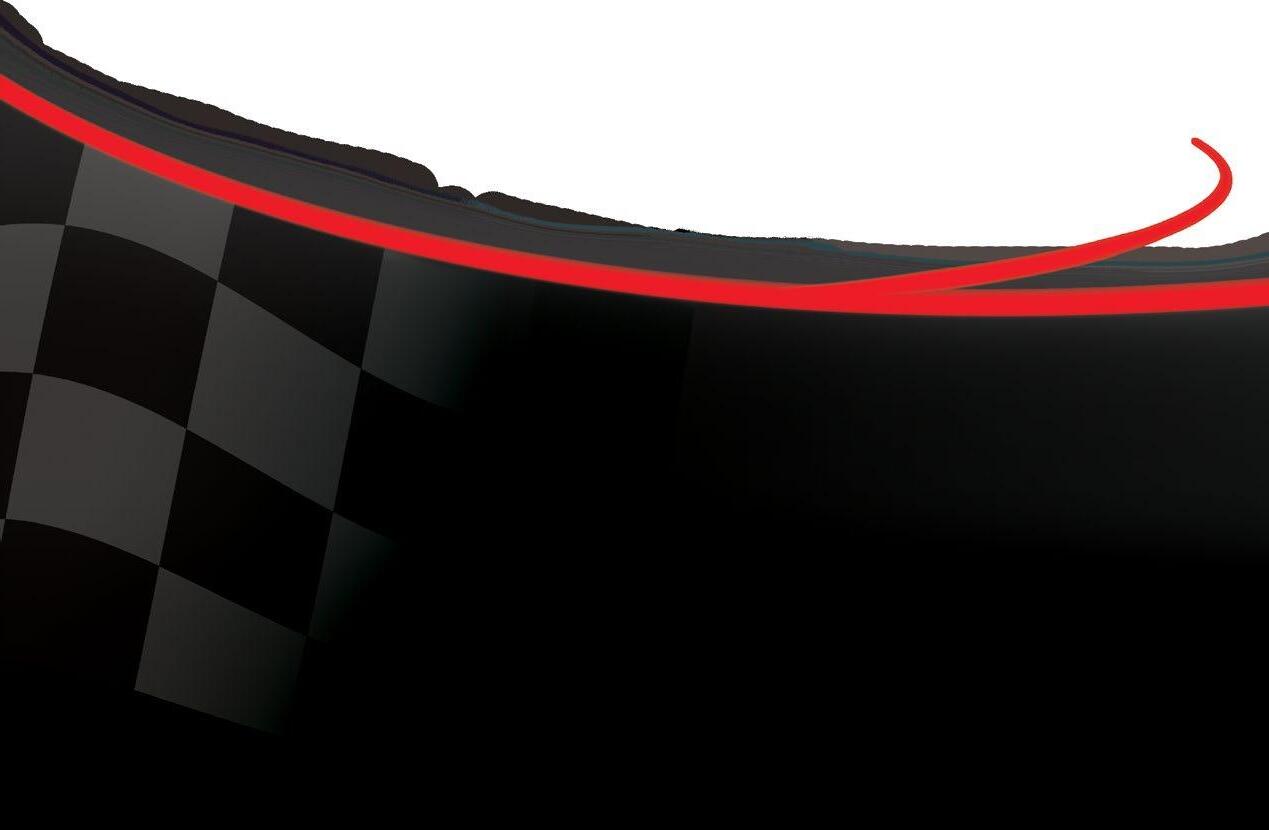
Anative of Taylorsville, North Carolina, Rex White came to stock car racing’s elite arena in 1956 after building a successful short-track career around the state of Maryland during the early 1950s. He retired from NASCAR racing in 1964 with 28 Cup Series victories.
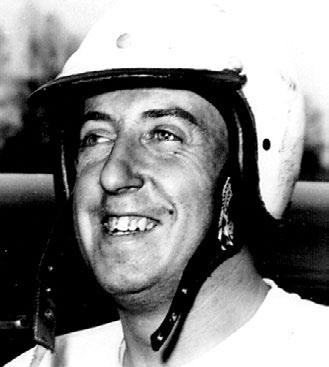
Two years later, White returned to short-track Sportsman competition to shake off some remaining desire. Over one four-day weekend, he collected five consecutive victories at tracks in Columbia, South Carolina, on Thursday night; Asheville, North Carolina, on Friday night; North Wilkesboro, North Carolina, on Saturday afternoon; Shelby, North Carolina, on Saturday night; and Spartanburg, South Carolina; on Sunday afternoon. White operated a successful business for decades and returned to NASCAR after being inducted into the NASCAR Hall of Fame in 2015. Now, at age 94, he enjoys reflecting on the days when he was a top competitor in NASCAR’s premier stock car series.
I always liked the gold color. I had never taken the time to paint that color on any of my Sportsman cars. When I got to the Grand National Series, what’s now the Cup Series, I decided it was time to do that. A guy named Wally Campbell had a car that was painted gold. That’s really how I picked gold for my car. Mine was gold on the sides and white on the hood, top and trunk or deck lid. We also had red No. 4s on the doors and roof.
WHO WAS THE DRIVER YOU RESPECTED THE MOST DURING YOUR CAREER?
I respected a guy named Frankie Schneider the most. He ran in NASCAR from 1949 to 1958. After that, I didn’t get to communicate with him much. As far as other drivers, I liked Marvin Panch really well. We got along very well together during my years as a driver in NASCAR.
WHO DID YOU HAVE THE MOST RUN-INS WITH?
Guess that would have to be Lee Petty. We bent fenders on our cars and got in each other’s way from time to time.
TALK ABOUT THE CHEMISTRY YOU HAD WITH YOUR CREW CHIEF, LOUIS CLEMENTS. YOU TWO WON SOME RACES TOGETHER.
Oh, yes. Louis and I got along great. With Louis, it didn’t matter what you were working on, he was good at doing anything. He had a great mind for building engines and working on the car. We worked very well together. Chevrolet had race teams and both he and his brother, Crawford, went to work with them and were a great help for them.
WHAT DID YOU ENJOY MOST ABOUT YOUR CAREER IN NASCAR?
That’s a real simple answer: winning races. Also, winning the 1960 championship. That year, everything came together for us. We won six times (along with 25 top-five finishes and 35 top-10 results). We worked hard for it. That was a great year. Winning the 1960 NASCAR championship meant everything to me. It really did. In those days, the previous year’s champion received money over what was won the next year and that really came in handy.





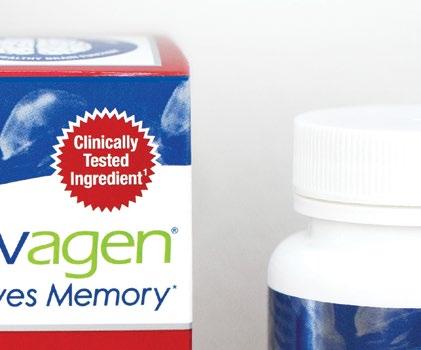

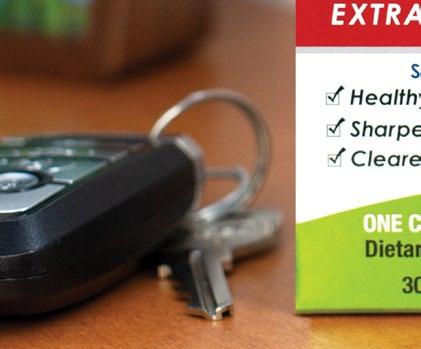





WHAT WAS RACING LIKE DURING YOUR CAREER?
I started off racing at West Lanham (Maryland) Speedway outside Washington, D.C. That was a tough track to drive. It was a good race track and where I got my first win. I would say that was pretty much the toughest track of anywhere I raced.
WHAT WAS DRIVING ON THE SUPERSPEEDWAYS LIKE DURING YOUR ERA?
They weren’t too bad for me. Back in 1958, I drove around Daytona International Speedway with Billy France (Bill France Jr.) in a 1958 Pontiac before it was ever paved. A lot of people drove through the entrance tunnel (after its completion in February 1959) and looked at that race track and they were scared of it. I didn’t ever have a problem with the race track at all. I really started learning the draft and got used to it pretty quickly.
In 1963, the new Chevrolet that year had a 348 cubic-inch engine. Then, we had the 428 cubic-inch engine and I got around the place a lot better.
COMPETING IN NASCAR DURING THAT ERA WAS HARD WORK FOR EVERY DRIVER AND TEAM BUT IT WAS ALSO VERY REWARDING, WOULD YOU AGREE?
Oh, yeah. You bet. It was very, very rewarding for me. I really enjoyed my time in NASCAR.

WHAT WOULD YOU CONSIDER YOUR GREATEST VICTORY IN NASCAR?
The 1962 Dixie 400 at Atlanta was the biggest race that I won. Marvin Panch was leading in the Wood Brothers Ford at the end of the race. We were different on gas than everyone else and Louis kept flashing to me “Gas” and a question
mark on our pit board. We figured we’d have to pit before the end anyway. I really didn’t try to race Marvin there with the laps winding down. I drafted him and saved all the gas that I could. He ran out of gas and I won the race.
HOW DID THE CARS DRIVE IN THAT ERA OF RACING? THEY WERE PRETTY MUCH STOCK, OTHER THAN A FEW SAFETY MODIFICATIONS?
You had to work on the car so you could get the springs working right. You had to make sure the tires you picked out were working. You had to do a lot to get your car to work right on the track. The key was to get your car to work throughout the race and not to be that far off as the finish approached. Then, you would adjust the car near the end, and go out and try to win.
DESCRIBE HOW IT FELT TO WIN THE 1960 NASCAR CUP SERIES CHAMPIONSHIP.
It was definitely the biggest thrill of my life, other than being inducted into the NASCAR Hall of Fame in 2015. When I won the championship in 1960, it was the biggest accomplishment I ever achieved.
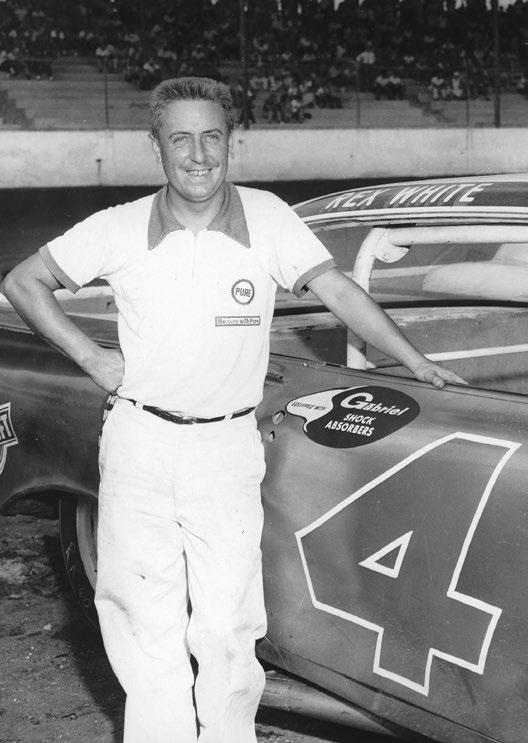











AMERICAN-ASIAN-GERMAN CLASSICS


Vehicles not eligible include purchase value of less than $10,000; Race Cars, Drag Cars, Funny Cars, Diesel Engines, and vehicles with more than 775HP. Call for exceptions.


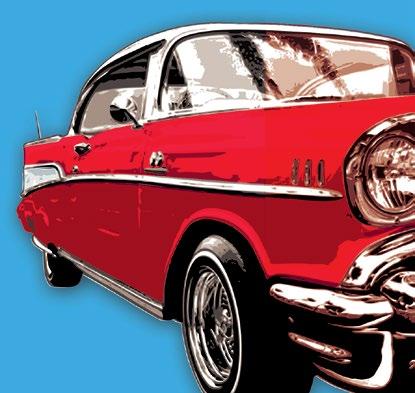



f you own a classic car you give it special care and attention. Maybe it’s the first car you ever drove, or the first you ever bought with your own money. For many classic car owners it was our high school dream ride. Whatever the reason, you love your classic. Freedom Warranty loves classics, too. We are one of the very few companies that offer mechanical protection extended service contracts. Our coverage covers your classic so that you will never pay for another covered repair. Learn more at www.FreedomWarrrantyClassic.com
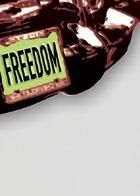
 BY BEN WHITE
BY BEN WHITE
An icon is defined as “a person or thing widely admired, especially for having great influence or significance in a particular sphere.”
Two-time NASCAR Cup Series champion Ned Jarrett perfectly fits that description.

A native of Conover, North Carolina, Jarrett entered his first NASCAR Cup Series race on April 29, 1953, at Hickory Motor Speedway, driving a Ford owned by Mellie Bernard. He finished 11th in the 200-lap affair and quickly realized auto racing was his calling.
Less than a year earlier in May 1952, Jarrett ran his first stock car race at the Hickory oval and finished 10th in a Sportsman event using an assumed name. He drove in more races using an alias until his father discovered the truth. The Jarretts were church-going people and his parents didn’t believe the local race track was a desirable location for their son on Saturday nights. But they eventually approved of his chosen occupation.
Winning a national Sportsman championship in 1956 started Jarrett down the road toward a full-time effort in NASCAR’s premier division. He achieved his goal in 1959 but it required writing a bad check to purchase a proven race car. Jarrett had to win back-to-back races in Myrtle Beach, South Carolina, and Charlotte, North Carolina, to earn enough money to cover the check when the bank opened on Monday morning.
Miraculously, he did it.
Jarrett was victorious only once during the 1961 NASCAR Cup Series schedule but logged 23 top-five finishes in 46 races. In so doing, he claimed his first Cup Series title over defending champion Rex White.
The 1964 NASCAR season saw Jarrett record 15 victories and earn 45 top-10 finishes in 59 starts.
Then in 1965, he gained superstar status with 13 wins and a second premier series championship on the strength of 42 top-five results in 54 races.
Jarrett retired from driving in 1966 with 50-career wins and dabbled in real estate while also working as a racing analyst for both radio and television.
Ned Jarrett was inducted into the NASCAR Hall of Fame in 2011

“Absolutely, icon is a great word to describe my dad, but I think the word that comes to mind for me would be amazing,” said 1999 Cup Series champion Dale Jarrett. “He enjoyed a successful Cup Series career, in what was called the Grand National division when he was driving. Then, he built a second career as a very successful broadcaster in both radio and television until retiring from that (in 2009).
“Not only was he a great professional in whatever he decided to do, but he continues to be a great dad. He’s a pretty special guy, to say the least. I’ve learned an incredible amount from him throughout my life about how to be a driver and most importantly, how to be the best person I can be.”


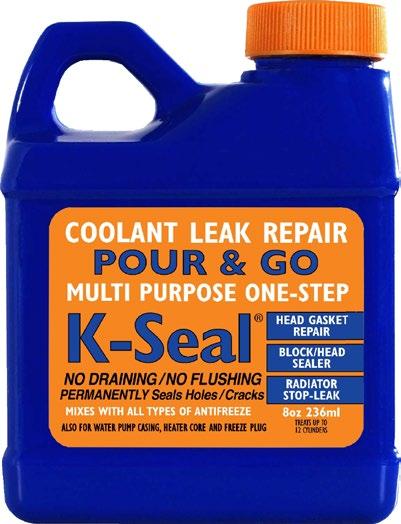
From the time of her earliest NASCAR memories, Emily Butler has looked at the world with a creative mindset.
One of those memories involves Butler, who had yet to celebrate her 5th birthday, watching the 1999 Bristol Night Race on TV with her Mema (grandmother) while her PoohPa (grandfather) attended the infamous NASCAR event. You know, the race where Dale Earnhardt rattled Terry Labonte’s cage on his way to victory. That didn’t sit well with the youngster.
“I was a big Terry Labonte fan because I think I was born with a design eye and an appreciation for branding,” Butler recalled. “You go to the store and there’s Kellogg’s. You turn on the TV and there’s Kellogg’s – I loved the consistency. I was not OK with the black No. 3 car taking out my Kellogg’s car.”
Butler also recalls yearly camping trips to Watkins Glen, where she rode in the family truck while her father drove laps around the legendary road course in upstate New York.
In middle school, Butler spent a considerable amount of time in her school’s computer lab during the early days of Photoshop and Adobe Creative Suite. She didn’t enjoy drawing still figures and became enamored with digital design. After graduating from the Rochester Institute of Technology, Butler moved to Charlotte. There, she couldn’t hide from racing. It became her life, particularly after meeting another creative guru, Harris Lue. Originally, Butler thought, “Oh, he’s a designer. Great. Friends.” But the two hit it off and began dating, as Lue was working for NASCAR.
Butler didn’t attend her first NASCAR race until the 2017 Coca Cola 600 at Charlotte Motor Speedway. That same year was Butler’s introduction to the sport’s creative side, when she designed her first shirt for Martin Truex Jr.’s No. 78 Bass Pro Shops Toyota.
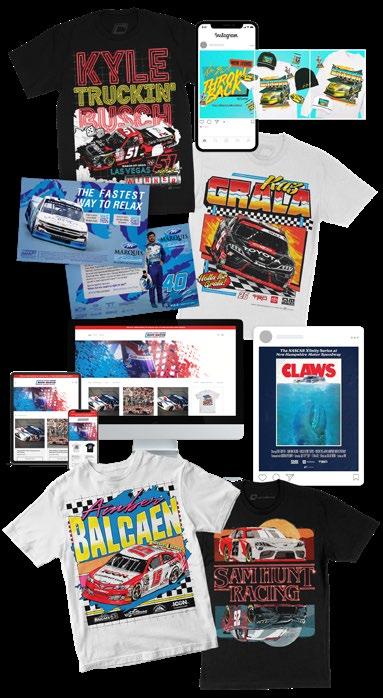
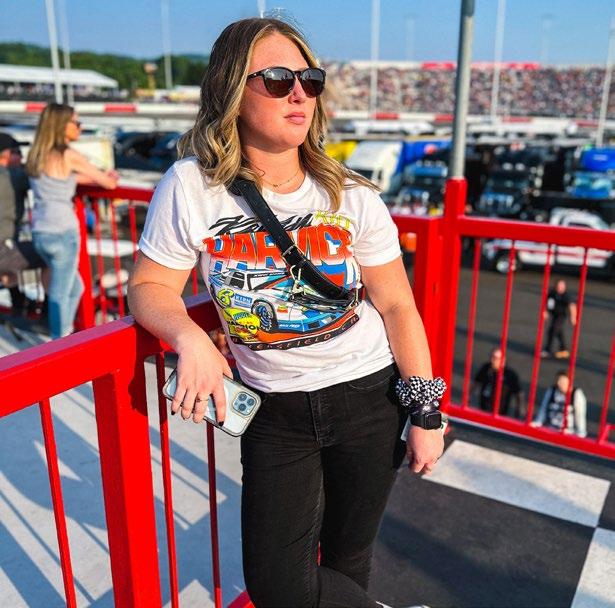
“Looking back, I think I could have done it better – as with any design.” Butler said. “But it wasn’t bad for being my first illustrated stock car. I’m thankful that I had (Lue) to keep me in check – making sure the windshield reflections were right and learning about changing NASCAR elements that, if you’re not designing in racing all the time, you may not realize could be inaccurate.”
Now that Butler has some say in the game – as co-owner of LUE Creative –she’s proud to be one of a few female designers in motorsports. “There’s always some added pressure because it’s more of a guy’s world,” Butler noted. “It’s a huge honor to have had my designs on track in all of the top-three NASCAR national series, especially as a female. To be able to put a different spin on motorsports design, or work with brands that are more feminine and maybe a little softer. I work with brands that are more masculine too, but to have a separate view and approach is important because it sets me apart.”
Some of Butler’s most notable projects were designed while working with driver Ryan Truex. When Truex had a collaboration with Marquis Spas in 2019-2021, Butler oversaw the creative and marketing initiatives. One of her favorite creative victories was getting an entire design catalog of merchandise approved by Florida Georgia Line during a pitch meeting in Nashville, Tennessee.
“They approved it on the spot,” she said. “That’s something that I will always have as one of the coolest things that I have ever done.”
While working with clients such as Racing America, Kevin Harvick Inc., John Hunter Nemechek, Sam Hunt Racing and multiple others, Butler has been dedicated to solidifying LUE Creative’s position in the NASCAR industry. “Our goal is to provide and excel at any kind of creative,” Butler stressed.
“Whether it’s a fire suit design, livery, pitch deck, photography, marketing strategy, full ad buildout, merchandise, whatever the need, we want to deliver creative solutions and specialize in the motorsport side of it. That’s a completely different animal than if you were to go to a standard advertising, marketing, or creative agency.”
Over the past handful of years, NASCAR fans may have seen the name “Lefty” on social media. The man behind the “Lefty” nickname is Noah Sweet, a 22-yearold paint scheme designer from Michigan.
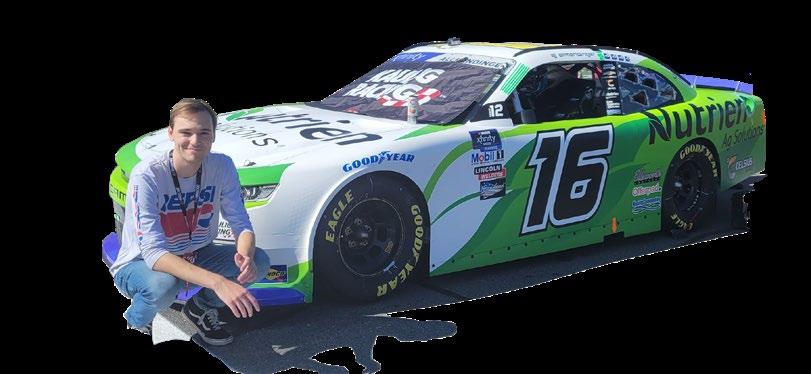
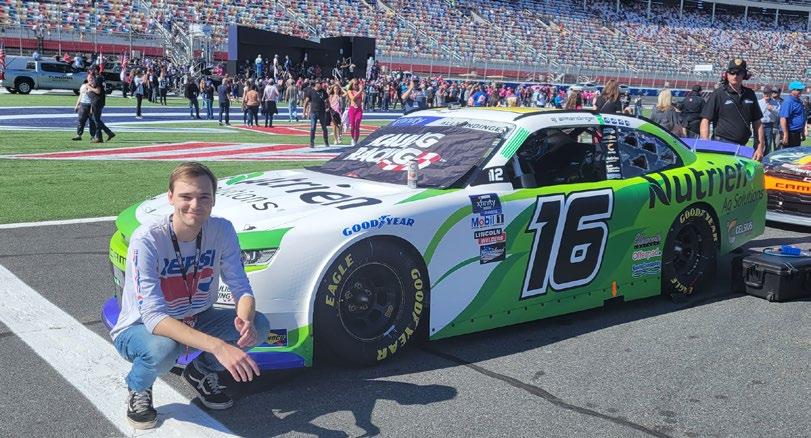
For as long as Sweet can remember, he’s been enthralled with NASCAR. His family was originally into drag racing, so one would assume he would have gone the NHRA route with his creative touch. However, when he went to big box stores, such as Walmart or Lowe’s, as a youngster he was drawn to the NASCAR die-cast cars.
“I remember seeing the silver paint on one of the Jimmie Johnson cars and thought this was cool,” Sweet recalled. “It looked a lot cooler than the Hot Wheels.”
Sweet loves to design paint schemes. What began as a hobby while playing “NASCAR Thunder” on PlayStation soon became a passion.
Sweet’s desire to design paint schemes came to a head in 2017, when there were reports of William Byron moving to the Cup Series to compete for Hendrick Motorsports. Sweet’s first professional design on a computer came with an outline of a potential rendering for Byron’s rookie campaign.
When NASCAR on Fox began televising the iRacing Pro Invitational Series during the COVID-19 pandemic in 2020, Sweet’s first paint scheme to hit television screens was for Landon Cassill, who was driving the No. 89 Morgan Shepherd car sponsored by Blu-Emu.
Finally, in the fall of 2020, Sweet was selected by Ally Financial to design one of Johnson’s paint schemes for Texas Motor
Speedway. Johnson happened to be Sweet’s hero, so getting an opportunity like that was once in a lifetime. Unfortunately, the No. 48 car blew an engine and finished 36th.
“That one holds a special place in my heart,” Sweet said of the design. “I have two of them sitting here on my dresser. I look at it and think I would have done this, this or that or do that instead of this. I often look back on some of my old work and think I would have done something differently.
Sweet’s first paid paint scheme was for Blue Emu at the 2021 Craftsman Truck Series season opener at Daytona International Speedway. That same Blue-Emu scheme from the Pro Invitational was on Cassill’s car as he returned to JD Motorsports. Sweet considers that his first true scheme to hit the track because the Ally partnership was a fan opportunity.
Currently, Sweet has a working relationship with Team Dillon Management, a full-service marketing agency led by driver Austin Dillon. He has a special relationship with TDM Xfinity Series driver Anthony Alfredo, designing multiple schemes for his cars.
Sweet’s best work, he believes, was designing Alfredo’s Pit Boss Grills scheme in 2022, which was the first time he implemented flames on a race car. Pit Boss liked it so much that it returned this season.
Sweet has lost track of how many schemes he’s had approved, but some of his biggest clients include Hooter’s with Chase Elliott and Axalta with William Byron, which has used its RAPTOR scheme more times than not this season.

Let’s face it – NASCAR is an easy sport to follow, but it still raises many questions about the drivers, race setup and more. Here are five questions we know everyone’s asked before –out loud, into a search engine or both.
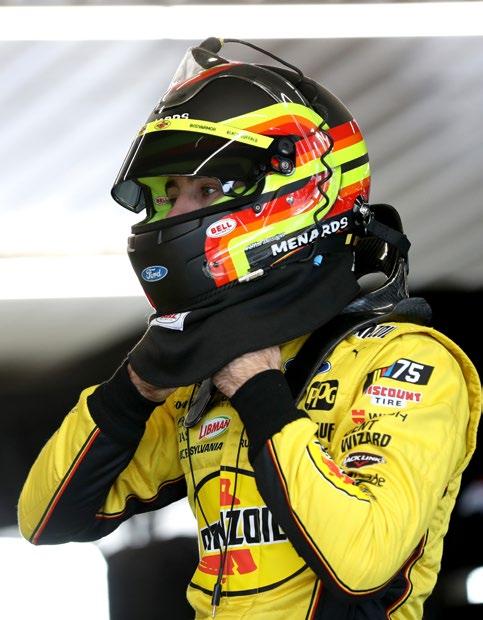
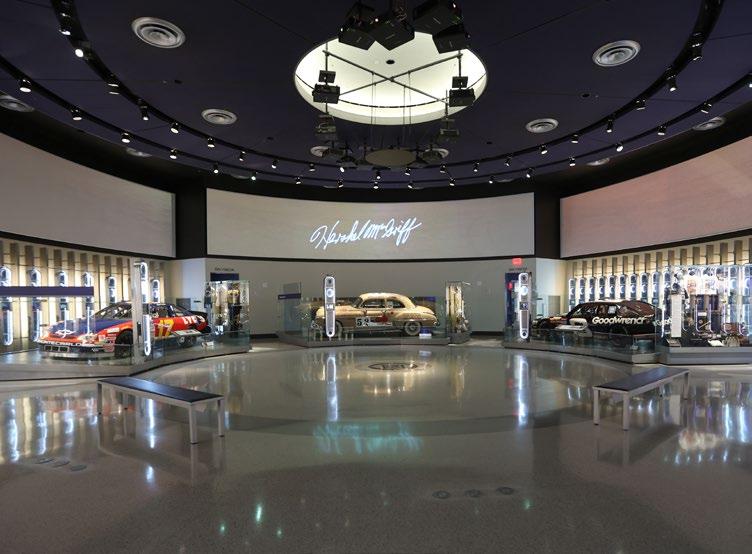

 BY BECKY GREINER
BY BECKY GREINER
Face it; every NASCAR fan has probably thought about this question at least once, especially after you watch a few races and realize that a pit stop has nothing to do with taking a bathroom break.
As for what drivers do when they feel the urge, typically, one of these two scenarios occurs:
• They hold it. Having to be well-hydrated and sit in a fast car for three to four hours doesn’t always go hand-in-hand, but focusing so much on how the car is driving and what the other drivers are doing often helps distract drivers from having full bladders. The amount that drivers sweat during a race also helps them from having to “go” as often.
• They just go. When drivers feel that urge to the point of distraction, and their fire suits are wet with sweat anyway, many have admitted to simply letting it go.
The old joke that NASCAR drivers “can only turn left” isn’t entirely true. Race cars are designed to turn both ways, but the counterclockwise direction of NASCAR races is in place for a few different reasons:
• The driver’s seat being on the left side.
• The oval design of most tracks.
• Racing counterclockwise has a long history dating back to horse races.
With all of this in mind, it made logical sense to have the drivers only turn left during races, but they can still turn right during road course events.
LIKE ALL ATHLETES, NASCAR drivers must eat a protein-rich meal to keep them full and comfortable during a race. But they also have to be cognizant of a meal weighing them down too much so they can stay at peak performance. All drivers have their favorites for pre-race meals, but some common foods are:
■ Oatmeal.
■ Eggs and bacon.
■ Avocado toast.
■ Poached eggs and tomatoes.
■ Grilled chicken and salad.
■ Bland foods, such as turkey and rice.
It’s critical for drivers to stay hydrated during a race, so although it’s not convenient, drinking during a race is a must. But with the focus they have to maintain while driving, they have to be careful about how they take in their liquids. Some helmets are equipped with hydration devices, and other drivers will ask for a quick snack or beverage during a pit stop.
Currently, NASCAR sanctions races at 42 tracks throughout the U.S. and Canada, but search engine data shows North Carolina as having the highest concentration of NASCAR fans. The state has a search volume of 1,457 per 100,000, reflecting the NASCAR culture in North Carolina and the love of Charlotte Motor Speedway.
Other states with high numbers of NASCAR fans are:
• West Virginia.
• South Carolina.
NASCAR is especially popular in the Southeast because this area is where the first races were organized – the first NASCAR race was run in Daytona Beach, Florida, during 1948, and the first NASCAR Cup Series race ran in North Carolina during 1949.
Although temperatures inside a race car exceed 100 degrees Fahrenheit, no air conditioning exists. Air-conditioning units would add weight, which is not ideal while trying to maximize speed.
However, it’s important for drivers to at least get a little relief during a race, but different drivers have different preferences, including:
• Built-in ventilation systems that blow cool air on their seats and feet.
• Helmets with attachments for circulating cool air.
• Racing suits or clothing that utilize a cooling gel. Without air conditioning, drivers can only cool the inside of their cars by about 10 degrees, but during a long afternoon of racing, every little bit of relief helps.


While every race on the NASCAR Cup Series schedule awards the same number of points to win, not all races are equal in notoriety, prestige and fanfare. In fact, only three of the 36 annual points races for NASCAR’s premier division are universally considered “crown jewels” of the sport. What makes these events stand tall above all the rest? Let’s explore:


 BY JARED TURNER
BY JARED TURNER
Since its inaugural running in 1959, the Daytona 500 has been the biggest and most important race on the NASCAR Cup Series schedule. Although it didn’t become the season opener until 1982, the 500 – long known as The Great American Race – gained immediate prominence because it was the first NASCAR race run on a true superspeedway.
And this superspeedway – 2.5 miles in length and featuring wide, high-banked corners and unprecedented speeds – was the brainchild of NASCAR founder William H.G. “Big Bill” France, who started the sport upon commencing a meeting with fellow visionaries at Daytona’s Streamline Hotel in December 1947.
So, in addition to being the first house of speed that Bill France built, Daytona International Speedway is just down the road from the birthplace of NASCAR. No wonder it’s the race everyone dreams of winning but many drivers never do because it’s so incredibly hard.
“There’s a lot of great drivers that have
For the fragrance obsessed. Indulge in 18.21 Man Made legendary scents with Spirits Spritzers, an all-over body spray. Long lasting, medium bodied blends of 18.21’s luxurious Sweet Tobacco, Spiced Vanilla, Absolute Mahogany, and Noble Oud scents.
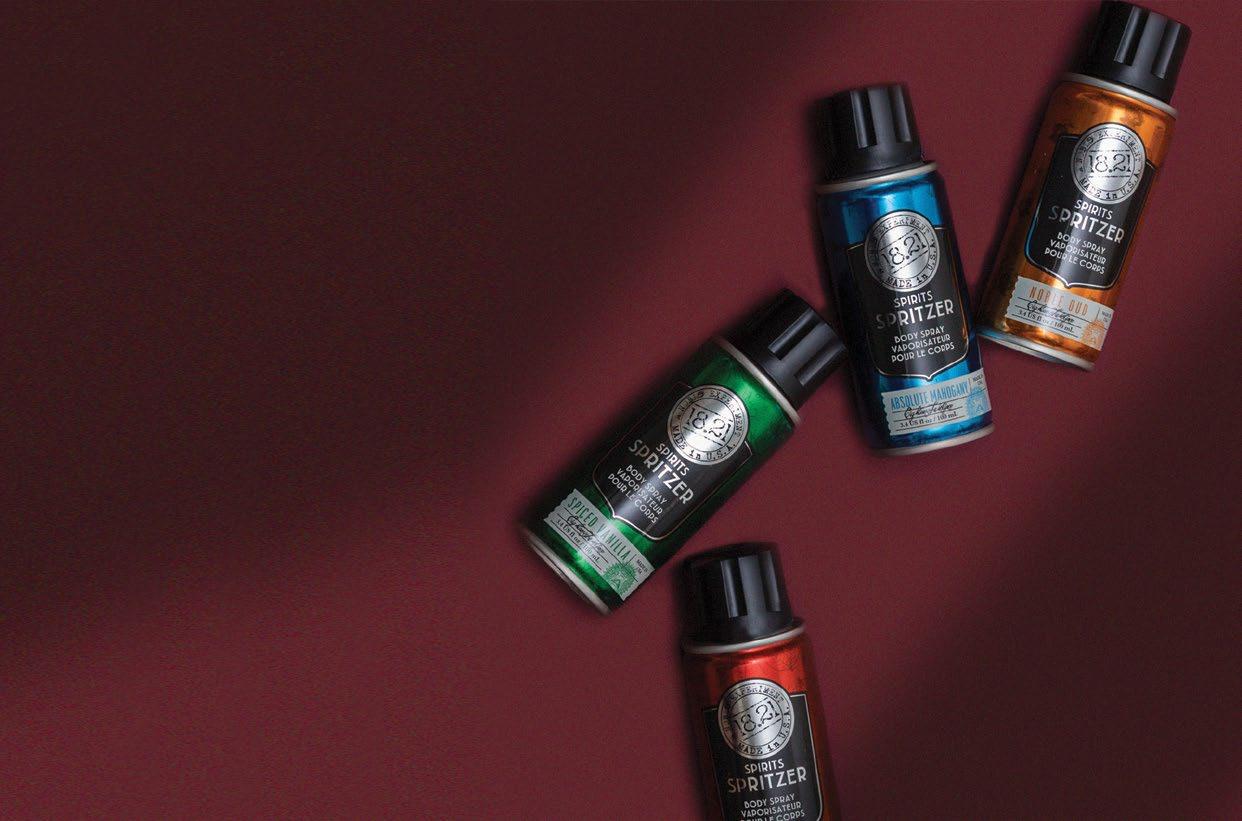
had great careers in the sport that have not won this race,” said 2020 Cup Series champion Chase Elliott, who is 0-for-8 in attempts to capture the Daytona 500 – an event his father, Bill Elliott, won twice. “You look at Tony Stewart never having won this race, right? Tony never won it. Look at Kyle Busch, a guy that has not won it, either. The list goes on from there, too.
“It’s a difficult race to win. You have to have a lot of things go your way. You can do everything perfect and still not win this race. It’s a tough one. I would love to check the Daytona 500 box, no doubt.”

It took the late seven-time Cup Series champion Dale Earnhardt 20 tries to finally leave Daytona International Speedway – appropriately dubbed “The World Center of Racing” – with the coveted Harley J. Earl Daytona 500 winner’s trophy in hand. It took three-time Cup Series champion and fellow NASCAR Hall of Famer Darrell Waltrip 17 attempts.
As Chase Elliott pointed out, three-time Cup champion Stewart never claimed the sport’s most-sought-after hardware. Neither did Rusty Wallace nor Mark Martin nor Terry Labonte. Among active drivers, only eight have managed to triumph on the sport’s grandest stage. Active drivers who’ve yet to experience a taste of Daytona 500 glory include former Cup Series champions Elliott, Busch, Martin Truex Jr., Kyle Larson and Brad Keselowski.
“It’s the Super Bowl of our sport, and it’s hard to accomplish this one,” Busch said. “It’s a race where you rely on a lot of different factors than you do just yourself. A lot of your result can be in the hands of the other drivers around you and the circumstances around you. That’s just the nature of it, but you know, we all have the same race to go out there and run in.”
25% off with code: 1821nascar
A fixture of the NASCAR Cup Series schedule since 1960 and located in the proverbial backyard of virtually every major NASCAR team’s headquarters, Charlotte Motor Speedway is special for a lot of reasons.
One of the biggest is the fact that CMS –the historic 1.5-mile quad-oval, not the CMS ROVAL that’s only been on the Cup Series schedule since 2018 – is home to the longest race on the Cup Series tour. That race is the Coca-Cola 600, held every Memorial Day weekend.
The 600, which consists of 600 miles or 400 laps on the 1.5-mile track, is regarded as one of NASCAR’s “crown jewel” events because it’s the ultimate test of man and machine. More specifically, it’s the only race with four stages – each at 100 laps – and it’s the only race out of 36 featuring more than 500 miles.
Winning the 600 requires a unique combination of physical and mental fitness along with a car that can hold up for 600
The oldest race on today’s NASCAR Cup Series schedule, the Southern 500 at Darlington Race way marked the first 500-mile race in NAS CAR history and the first Cup Series race on an asphalt surface.
First run on Sept. 4, 1950, this race – now formally known as the Cook Out Southern 500 – was a staple of Labor Day weekend through 2003 but spent the next 11 years in various spots on the Cup Series calendar before eventually returning to Labor Day weekend in 2015.
Featuring a rustic charm fans won’t find anywhere else on the NASCAR tour other than perhaps Martinsville Speedway and North Wilkesboro Speedway, Darlington is a racer’s race track in every sense of the phrase.
The fabled facility’s one-a-kind 1.366-mile, egg-shaped layout presents a test for drivers that’s unlike any other they face all year. Throw in the fact that the Southern 500 is one of only a few 500-mile races left on the Cup Series schedule, and
miles and get better – not worse or even remain the same –as day turns into night.

This year’s Coke 600 – won by Ryan Blaney of Team Penske – marked the 64th installment of the marathonstyle affair, which assumed its present name in 1985 after Coca-Cola became its title sponsor. Prior to that, it was known as the World 600.
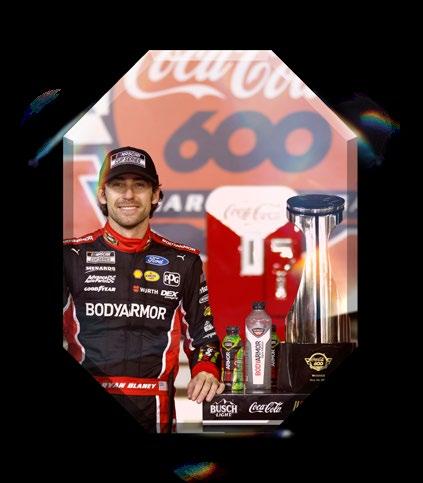
Among the tracks that have hosted Cup Series races over the course of NASCAR’s 75-year history, only Daytona, Martinsville Speedway and Richmond Raceway have been the site of more events than Charlotte.
Given the unique place that Charlotte Motor Speedway, and the Coca-Cola 600 in particular, holds in the sport, it’s no wonder that finishing atop the leaderboard in NASCAR’s longest race is considered such a monumental achievement and a feather in the cap of anyone who manages to pull off the feat.
“When you win the 600, you get to go upstairs in the Speedway Club and get the jacket – you get a ring and a jacket – and it’s a big deal,” two-time Coke 600 kingpin Martin Truex Jr. said. “It’s not like winning a normal race. Anytime you get to do those things it’s really special, and you definitely savor the moment.”

you’ve got an event with all the makings of a “crown jewel.”
Striking the perfect balance between going fast and steering clear of the concrete poses a clear challenge for drivers past and present, who almost unanimously stand behind Darlington’s long-held nickname as the track “Too Tough to Tame.”
“That’s a real fitting slogan,” said 1989 Cup Series champion Rusty Wallace, who was denied a victory in 43 starts at Darlington. “It’s one that’s been around forever, and ever and it was too tough for me to tame. I couldn’t tame it. I fought it and played with it. A great way to describe my career there was sporadic success.”
Ricky Craven, who edged Kurt Busch at Darlington in a 2003 race that will forever stand as one of the greatest finishes in NASCAR history, believes one of the main keys to success here is not getting so caught up in battling with other drivers that you let your guard down and fail to race the track itself.
“When you become preoccupied with racing somebody, when you become overly occupied with the guy that’s in front of you that’s holding you up, the guy that should have yielded but he won’t, you try to find a way to get by and then you get a little anxious and say, ‘Oh my gosh,’ and then the next thing is ‘Wham,’ you’ve hit the wall,” Craven said. “Why? Because you forgot where you were. You forgot that you were at Darlington. And Darlington doesn’t allow you to do that.”











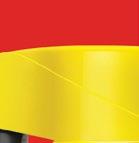

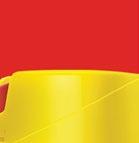




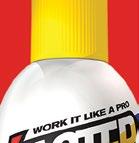


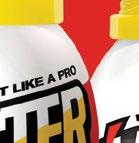
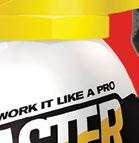
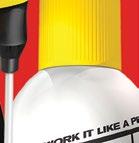



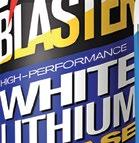



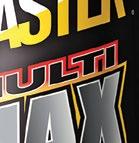
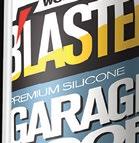




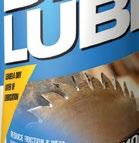
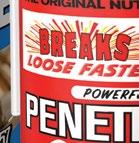
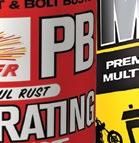
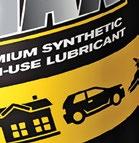

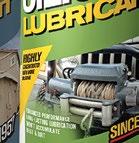





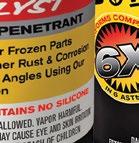

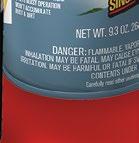
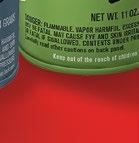




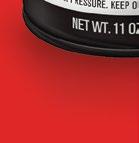
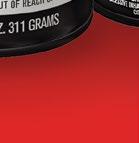
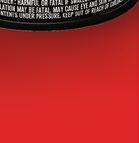




















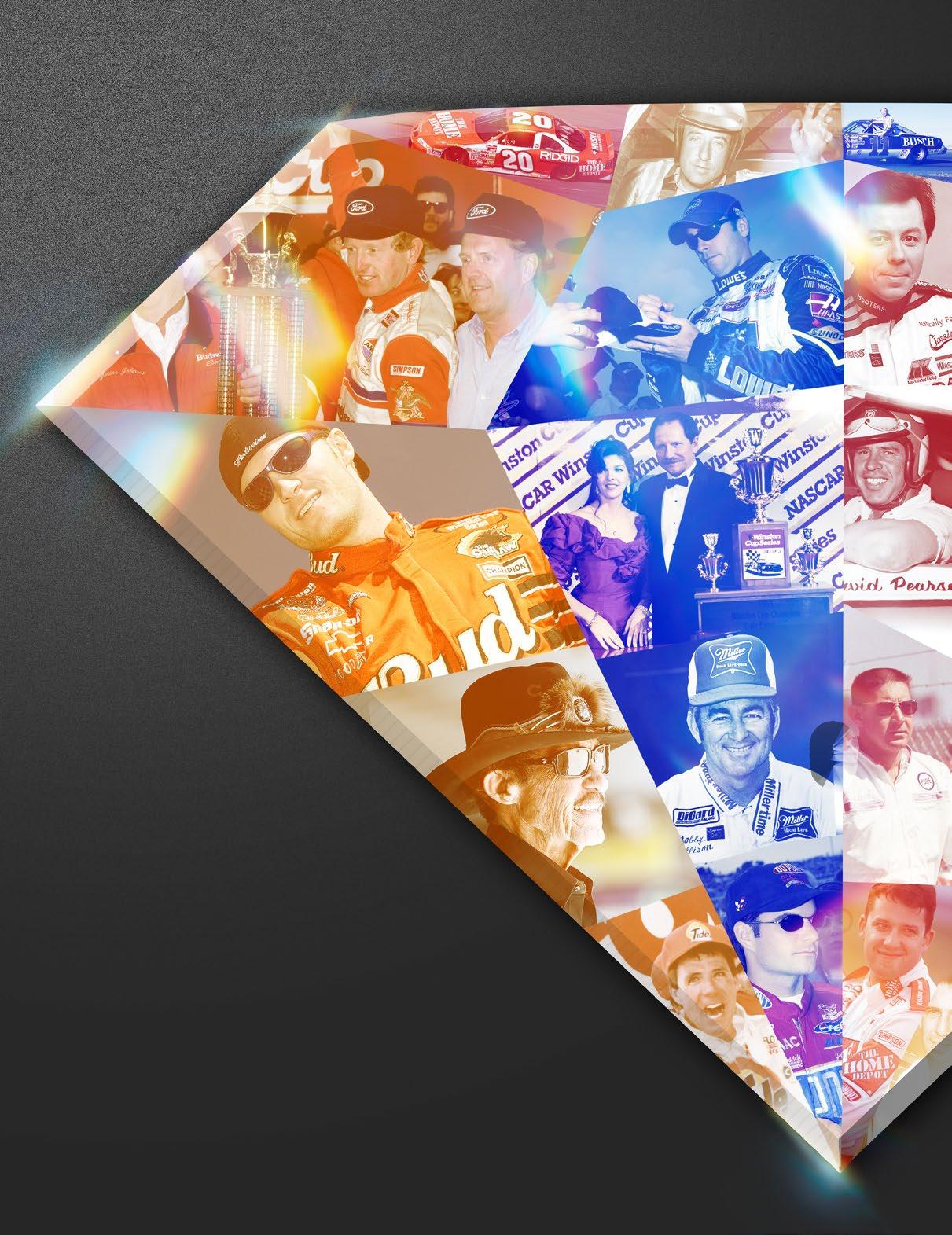 WRITTEN BY RACING HISTORIAN BEN WHITE
WRITTEN BY RACING HISTORIAN BEN WHITE

 EDITED BY KEITH WALTZ
EDITED BY KEITH WALTZ

Richard Petty entered his first NASCAR race at Canadian Exposition Stadium in Toronto, Ontario, on July 18, 1958, at age 20. Over 35 seasons, the seven-time NASCAR Sprint Cup Series champion recorded an incredible 200 career victories.
Born in Level Cross, North Carolina, on July 2, 1937, Petty is the older of Lee and Elizabeth Petty’s two sons. His father worked in the mills, farmed cotton and even sold moonshine before discovering NASCAR at age 35 in 1949. He was the first racer to make a living driving in NASCAR competition.
Young Richard and his cousin, Dale Inman, serviced Lee Petty’s Plymouth as teenagers after school. During many late nights, they turned wrenches on the family’s racing machine while Petty’s brother, Maurice, kept the engines running at full song.
Richard Petty helped his father win NASCAR championships in 1954, 1958 and 1959 before focusing on his own driving career. The second-generation speedster scored his first NASCAR victory on Feb. 28, 1960, at the Southern States Fairgrounds in Charlotte, North Carolina. In 1964, he won his first of seven Daytona 500s and first of seven championships. Other titles followed in 1967, 1971, 1972, 1974, 1975 and 1979.

Petty’s final victory came at Daytona International Speedway on July 4, 1984. All told, his 555 top-five finishes, 712 top-10 results and 123 pole positions chronicle the greatest success story in NASCAR history.
Petty’s 1,184th and final start came at Atlanta Motor Speedway on Nov. 15, 1992, where he finished 35th after being caught up in a crash.
Since then, Petty has fielded cars for many of the sport’s top drivers while also serving as NASCAR’s greatest ambassador. He is one of the most recognized icons in all of professional sports.
IN 1967, PETTY ENJOYED HIS GREATEST SEASON with 27 victories in 48 Cup Series starts. Driving the famed 1966 Petty blue No. 43 Plymouth, his triumphs included a string of 10 in a row that began on Aug. 12 at Bowman Gray Stadium in Winston-Salem, North Carolina, and continued through Oct. 1 at North Carolina’s North Wilkesboro Speedway.
PETTY’S SEVEN DAYTONA 500 VICTORIES AND seven championships as a NASCAR driver and team owner best define his career. Many of his accomplishments still stand as records and it is widely believed that no one will ever reach the 200-win milestone that tops his list of untouchable records.
THROUGHOUT A CAREER THAT SPANNED FROM 1958 to 1992, Petty was one of the NASCAR’s most popular drivers, winning the Most Popular Driver Award from the National Motorsports Press Association nine times. He had a reputation for signing autographs for every fan requesting one, even after winning 500-mile races.
My name is beside all those wins, but it’s not just about Richard Petty. So many people have worked countless hours and contributed so much to all that success. It’s not about me.
–RICHARD PETTY
Lee Petty drove his own Oldsmobiles and Plymouths to NASCAR championships in 1954, 1958 and 1959 and recorded 54 victories throughout a 16-year career. His accomplishments include 332 top-10 finishes and 18 pole positions.
Born March 14, 1914, in Randleman, North Carolina, Petty spent time working in local mills around Randolph County to support his wife and two sons. However, he longed to drive race cars and eventually became the first NASCAR racer to make a living as a stock car driver.
His winnings of $7,695 in 1950 would be equivalent to more than $83,000 today. Still, there were cars and equipment to buy as well as travel expenses for himself and his crew.
Petty’s biggest victory came in the inaugural Daytona 500 in February 1959 after a three-day review of the finish. Johnny Beauchamp was initially crowned the race winner, but NASCAR officials later determined Petty had crossed the finish line first. He received his trophy and check in his living room days after the race had ended.
Petty was severely injured at Daytona in 1961, leaving him hospitalized for two months. After his recovery, he ran sporadically on short tracks before his retirement from driving in 1964.
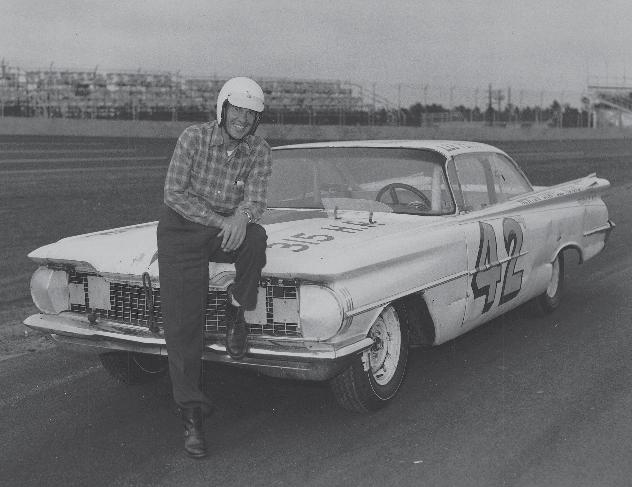
From there, Petty turned his attention to building Petty Enterprises. The team eventually earned 11 championships and 268 NASCAR Cup Series victories.
Lee Petty passed away in 2000 at age 86 due to an abdominal aneurysm.
DURING THE 1959 NASCAR CUP SERIES SEASON, Lee Petty won 11 of the 42 races he entered. Of those wins, 10 came on short tracks with one lone superspeedway win coming in the prestigious Daytona 500. Petty amassed 27 top-five results while failing to finish only eight races that year.
ASIDE FROM HIS ABILITY TO WIN ON ALL TYPES OF track configurations, Petty enjoyed a reputation for getting the most performance out of his race cars. His career average start of ninth and average finish of seventh made him one of the most consistent NASCAR drivers during the 1950s.
KNOWN FOR
ASIDE FROM A SUCCESSFUL CAREER AS A THREEtime NASCAR champion, Petty was able to build a powerhouse organization utilizing the talents of iconic drivers and mechanics that led to 11 championships and 268 victories. Son Richard Petty logged 198 of his 200 victories under Lee Petty’s steady guidance and direction.
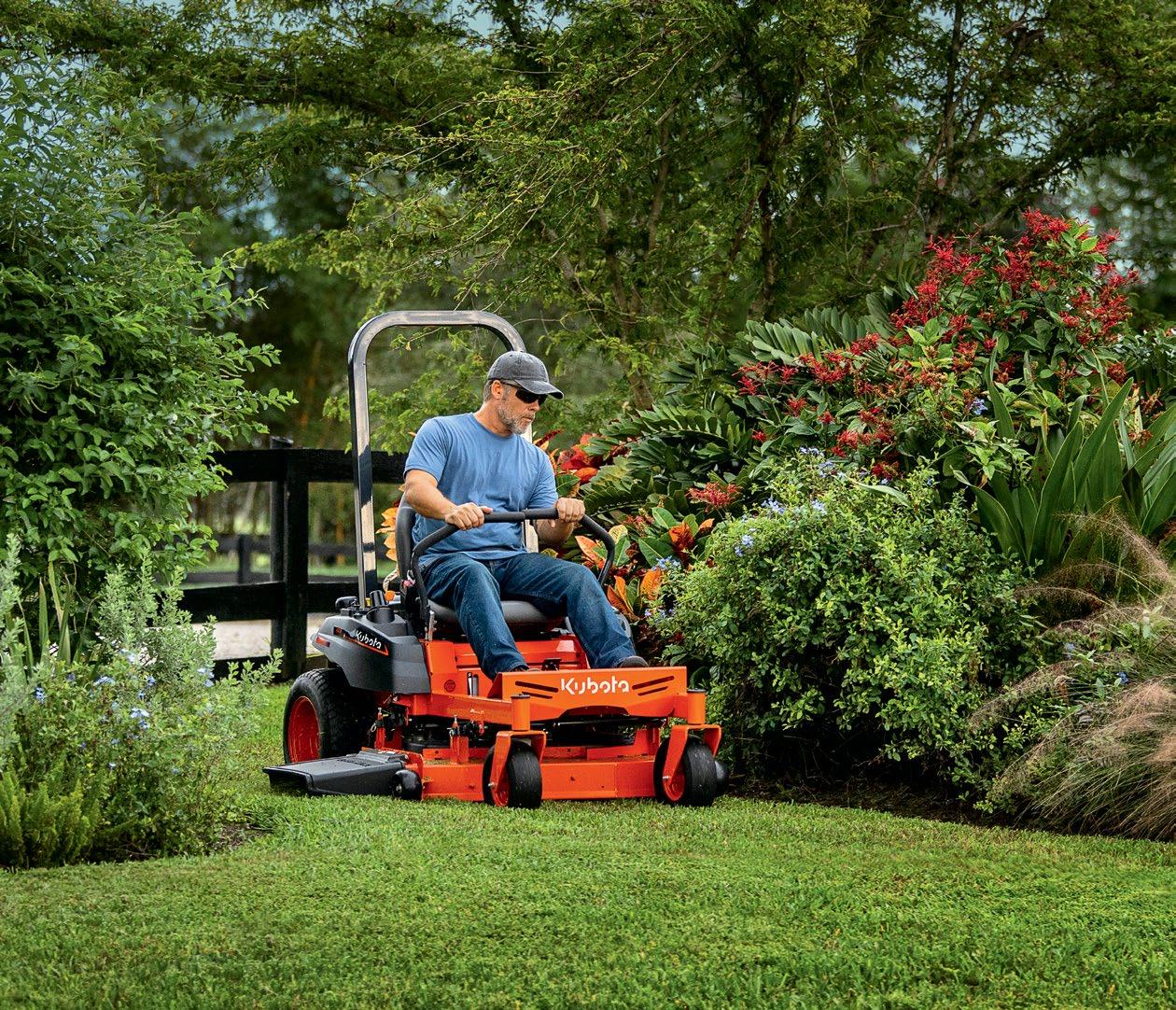

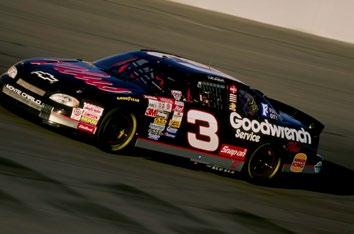
Dale Earnhardt was determined to follow the driving career of his father, 1956 NASCAR Sportsman champion Ralph Earnhardt. The seemingly impossible career path he set in motion is one of the greatest success stories in all of professional sports.

While racing on some of North Carolina’s most noted short tracks following his father’s death in 1973, Earnhardt struggled mightily to fund his racing operation. He often borrowed money from a local bank on Thursday to race that weekend. Payments had to be made the following Monday without fail. So Earnhardt had to race hard and had to win. Drivers were often left fuming when the checkered flag fell.
Beginning in 1975, four NASCAR Cup Series starts for Ed Negre, Johnny Ray and Walter Ballard helped Earnhardt make an impression at stock car racing’s highest level. His best ride materialized with five events for team owner Rod Osterlund in 1978 and a full schedule of races for the California businessman in 1979, the year he won Rookie of the Year honors with a victory at Bristol, 11 top-five finishes and 17 top-10 results. The next season, Earnhardt stunned the racing community by winning his first of seven Cup Series championships in Osterlund’s Chevrolet. When the team was sold to J.D. Stacy in 1981, Earnhardt exited with 10 races remaining and joined former Cup Series driver Richard Childress.
After parting ways for two seasons, they reunited in 1984 and created one of the greatest dynasties in NASCAR history. Six of Earnhardt’s seven Cup Series titles and 67 of his 76 victories came while driving for Childress, including the 1995 Brickyard 400 at Indianapolis Motor Speedway and the 1998 Daytona 500.
Earnhardt lost his life in a crash on the final lap of the 2001 Daytona 500. His contributions to the sport he so dearly loved are considered immeasurable.
THE YEAR (1987) EARNHARDT won his third Cup Series championship, the Kannapolis, N.C., native logged 11 victories, 21 top-five finishes, 24 top-10 results and one pole position for team owner Richard Childress. Earnhardt led 3,354 of 9,043 total laps that season with an average finish of 5.9 during the 29-race schedule.
EARNHARDT IS THE ONLY driver to win the Cup Series Rookie of the Year title and the Cup Series championship in successive years (1979 and 1980). A second championship came in 1986, followed by five more titles in 1987, 1990. 1991, 1993 and 1994. Earnhardt finished second in points during his final full season in 2000.
KNOWN FOR DURING A CAREER THAT spanned from 1975 to the season-opening Daytona 500 in 2001, Earnhardt was one of the most aggressive drivers in NASCAR history. A member of the inaugural NASCAR Hall of Fame Class in 2010, he is recognized as an icon among the sport’s greatest drivers.
ANYTIME YOU GET THE OPPORTUNITY TO WIN A RACE, YOU’RE GOING TO WIN THE RACE.
I AM NEVER GOING TO BACK OFF. I NEVER WANT TO RUN SECOND.

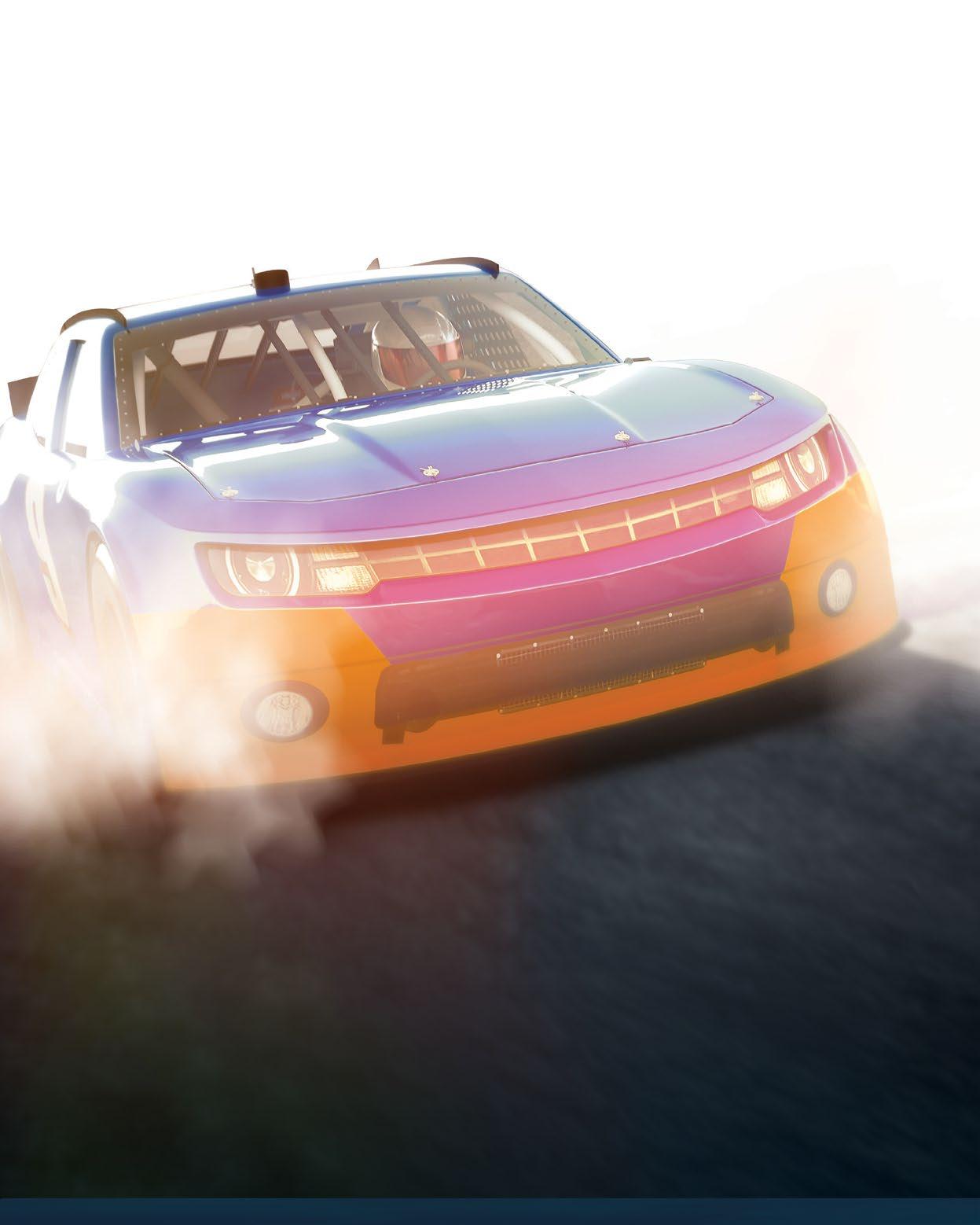
No pit crew? No problem. Choosing the right filters for your vehicle is essential to maintain its performance and protect it from potential damage. FRAM® makes it easy by offering a wide range of innovative air, cabin and oil filters that are designed to meet the needs of modern vehicles. By using FRAM® filters, you can have peace of mind knowing that your engine is protected from harmful particles and operating at its best on any terrain. Drive confidently and explore new destinations by trusting FRAM® for the best possible performance and protection for your vehicle!
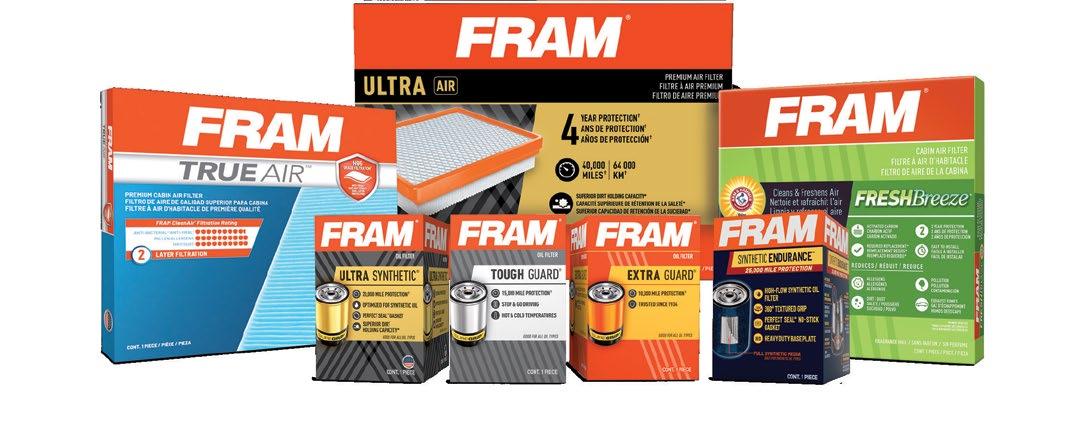
Junior Johnson won 50 NASCAR Cup Series races, the most by any driver who never claimed a series title. The biggest victory of his Hall of Fame career came in the 1960 Daytona 500.
Born June 28, 1931, in Ronda, North Carolina, the fourth of seven children, Johnson’s family was known for being heavily involved in the illegal whiskey business since the 1800s.
His father, Glenn Johnson, was a lifelong bootlegger and spent more than half his life in prison for making and selling moonshine. The Johnson homeplace was frequently raided by revenue agents.
Junior Johnson began helping with the family business as a youngster. He also spent one year in an Ohio prison in 1956 for having an illegal still but was never caught hauling moonshine on mountain roads throughout North Carolina.
Johnson’s racing career was just beginning when he went to prison. During his first full season in 1955, he won five races and finished sixth in points. Over the next 10 years, Johnson logged 45 additional victories, including the 1960 Daytona 500, which he won driving a car owned by John Masoni and prepared by Raymond Fox.
Johnson’s victories included 11 superspeedway triumphs and 39 short-track wins. He retired from driving in 1966 and forged a second career as a car owner at NASCAR’s highest level.
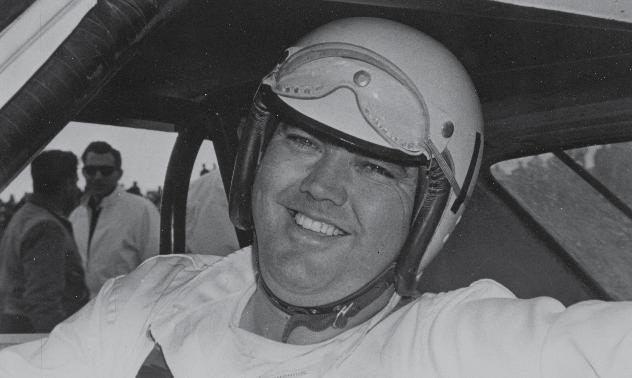
Johnson was instrumental in bringing R.J. Reynolds Tobacco Co. to NASCAR as a series sponsor, saving the sport in 1971.
From 1967 through 1995, Johnson’s teams earned six NASCAR Cup Series championships with drivers Cale Yarborough and Darrell Waltrip, as well as 132 Cup Series victories over a 30-year period with a variety of drivers. Johnson died on Dec. 19, 2019, at the age of 88.
JOHNSON LOGGED 13 OF HIS 50 NASCAR CUP Series wins during the 1965 season. His biggest victory that year came on May 8 at Darlington Raceway. Johnson was the driver to beat during the 54-race season, notching 18 top-five finishes while driving a Ford he fielded himself.
AS A DRIVER IN NASCAR, JOHNSON COMPLETED 51,988 laps and led 13,021 of them. His highest rank in the points was seventh in 1955, his third year of NASCAR competition. His highest season in winnings came in 1960 – the year he won the Daytona 500 – when he banked $38,989.
KNOWN FOR
HIS PAST LIFE AS A MOONSHINE RUNNER IN Wilkes County, North Carolina, added to the lore of outlaw turned racer and drew fans to the tracks to watch him drive. When Johnson retired from driving and became a car owner, he looked for wheelmen who were as fearless as he was.
“I certainly feel that I gave a lot more to stock car racing than I took away from it.”
–JUNIOR JOHNSON
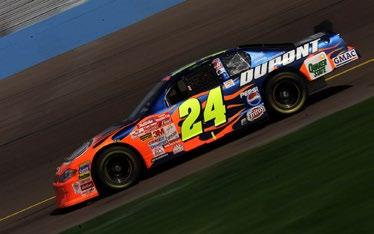
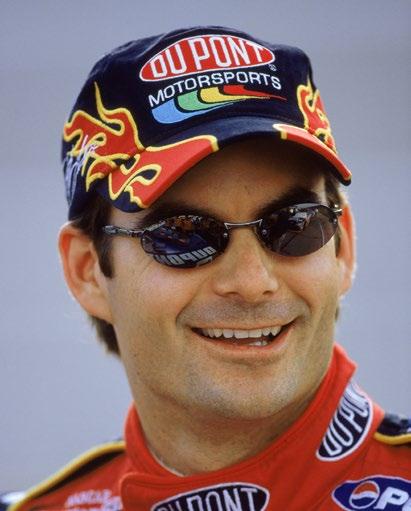
Jeff Gordon entered his first NASCAR Cup Series event on Nov. 15, 1992, at Atlanta Motor Speedway. It was the beginning of a career that featured some of the greatest accomplishments in NASCAR’s modern era.
Born Aug. 4, 1971, in Vallejo, California, Gordon’s formative years were spent building a very successful career as an open-wheel Midget and Sprint Car driver. Even though he dreamed of joining the Indy Car ranks, an opportunity to drive in NASCAR proved to be a fateful decision.
The rising star came to stock car racing in 1990 in what is now the NASCAR Xfinity Series. During the 1992 season, he claimed three victories and a fourthplace finish in the series standings while driving a Ford owned by Bill Davis.
That same year, Gordon joined team owner Rick Hendrick in NASCAR’s premier series, making his debut during the season finale. He earned rookieof-the-year honors in 1993 and two years later, in 1995, Gordon became the youngest driver in the modern era to claim a championship at the age of 24. He went on to win three more titles in 1997, ’98 and 2001.
Gordon currently sits third on NASCAR’s list of all-time winners with 93 Cup Series victories. His stats show 325 top-five finishes, 477 top-10 results and 81 poles in 805 starts. Among his victories are three Daytona 500s and five in the prestigious Brickyard 400 at Indianapolis Motor Speedway.
After his retirement from driving, the 2019 NASCAR Hall of Fame inductee turned his attention to co-ownership of Jimmie Johnson’s No. 48 Chevrolet at Hendrick Motorsports, as well as a promising career as a television broadcaster. Gordon remains one of NASCAR’s most popular personalities.
DRIVING FOR RICK HENDRICK
THROUGHOUT MY ENTIRE CUP SERIES
CAREER WAS ONE OF MY GREATEST REWARDS. THE PHENOMENAL PEOPLE AROUND ME THROUGHOUT MY CAREER ARE WHAT MADE IT SO GREAT.
DURING THE 1998 NASCAR Cup Series season, Gordon and crew chief Ray Evernham amassed a modernera record 13 victories in 29 starts. Also that year, Gordon posted 26-top five finishes, 28 top-10 results and seven poles. Those incredible numbers led to him winning his second of four championships.
GORDON’S AVERAGE start of 10.5 and average finish of 12.5 are considered impressive statistics. From 1992 to 2016, he completed 231,223 laps and led 24,936.
Fifteen of his 93 victories came on short tracks with nine on road courses and the remainder on tracks of one mile or more in length.
KNOWN FOR GORDON IS KNOWN FOR his respect for fans, his team members and the media. His amazing ability as an open-wheel race car driver at times helped him to make moves in stock cars that were nothing short of miraculous. He was named one of NASCAR’s 50 Greatest Drivers in 1998.
THE NO. 24 CARBill Elliott began his driving career on the north Georgia dirt tracks near his home in Dawsonville. He won 44 Cup Series races from 1976 to 2012, logging 320 top-10 finishes and 55 pole positions.
Born Oct. 8, 1955, Elliott began driving makeshift race cars in his father’s junkyard against the likes of his brothers, Ernie and Dan. Of the three siblings, Bill emerged with the most desire and talent to drive cars on a local level.
Success on short tracks in the Southeast led to an eight-race NASCAR Cup Series effort in 1976 aboard a Ford owned by his father, George. Over the next seven seasons, the fledgling family team entered 71 races, recording eight top-five finishes, nine top-10 results and earning one pole.
At the start of the 1983 season, the Elliott family sold its team to Michigan businessman Harry Melling and collected their first Cup Series victory in the season finale at California’s Riverside International Raceway. Three wins in 1984 set the stage for a phenomenal 1985 season that featured 11 victories, including the 1985 Daytona 500 as well as the Winston Million bonus paid by R. J. Reynolds Tobacco Co. for winning three of the four premier races on the schedule.
Elliott collected 18 additional victories as well as the 1988 Cup Series championship before leaving Melling Racing in 1991 to join Junior Johnson and Associates. After seven victories and a second-place finish in points through 1995, Elliott started his own team but did not break into the win column.
Elliott eventually joined forces with former crew chief and upstart team owner Ray Evernham. Together, they won three times, including the 2001 Brickyard 400. Elliott retired from the Cup Series in 2012.
DURING THE 1985 SEASON, ELLIOTT ENTERED 28 Cup Series races and won 11 times, with superspeedway victories coming at Daytona, Talladega, Dover, Atlanta (2), Darlington (2), Pocono (2) and Michigan (2). Elliott logged 16 top-five finishes and 18 top-10 results with an average start of 4.9 and average finish of 8.7.
IN QUALIFYING FOR THE 1985 DAYTONA 500, Elliott posted a record pole speed of 205.114 mph. Then, on May 5, 1985, he turned another record lap of 209.398 mph at Talladega Superspeedway. Finally, on May 3, 1987, Elliott ran 212.809 mph at Talladega, a record that may never be broken.

THROUGHOUT HIS NASCAR CAREER, ELLIOTT enjoyed a tremendous fan following. Even though he hasn’t driven in NASCAR competition for 10 years, he was part of last summer’s six-race Camping World SRX Series. He occasionally works as a spotter for his son, 2020 Cup Series champion Chase Elliott.
I feel the experience that I gained working on the race cars helped me immensely and really made me understand them a lot more.
–BILL ELLIOTT
Liberty University is proud to sponsor William Byron and the LU24 Chevy Camaro, and we’re not only his sponsor — we’re also his school.


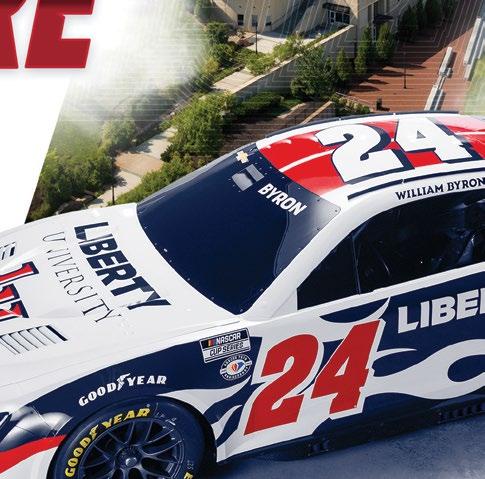
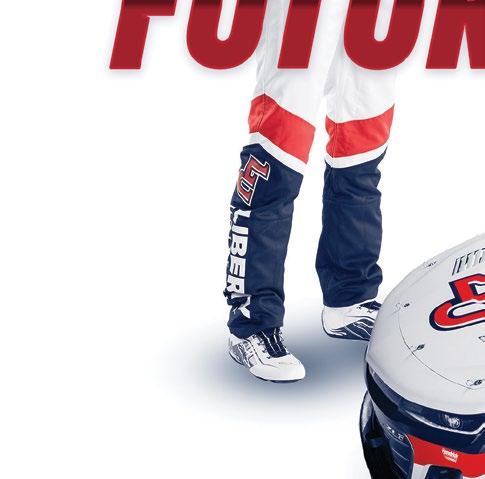

Liberty University Online Programs has given William the freedom and exibility to earn a degree while pursuing his NASCAR career. Liberty University o ers more than 700 programs of study on campus and online, from the certi cate to the doctoral level. Liberty also o ers exible, a ordable, and accredited online K-12 education at Liberty University Online Academy.
Whatever your educational need, Liberty has it all. Your future starts today.



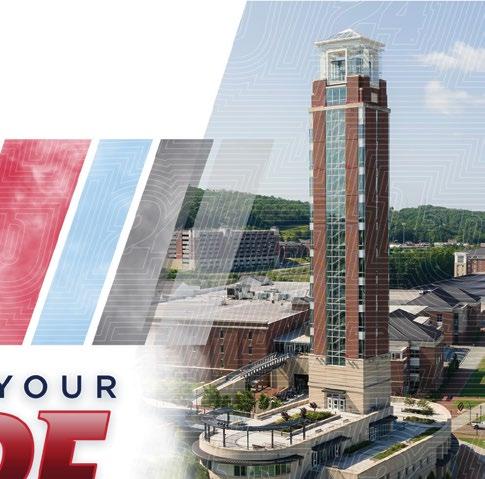

David Pearson ran his first race in NASCAR’s premier series in February 1960. He eventually claimed three Cup Series titles and amassed 105 victories in 574 series starts, second only to Richard Petty (200) in the win column.

Born in Whitney, South Carolina, in 1934, Pearson’s first race came in a 1952 Hobby Stock event at a track in nearby Woodruff. He earned $13.
In February 1960, Pearson built a Ford for Late Model competition and hauled it to Daytona International Speedway. The next year, he collected major Cup Series victories at Daytona International Speedway, Charlotte Motor Speedway and Atlanta Motor Speedway en route to rookie-of-the-year honors.
By 1966, Pearson had joined team owner and fellow South Carolinian Cotton Owens and logged 15 victories and his first Cup Series championship. Two more titles came with Ford’s powerhouse Holman-Moody organization in 1968 and 1969.
In 1970 and 1971, Pearson began racing a limited schedule of Cup Series races for Holman-Moody and car owner Ray Nichels. He enjoyed his best years with Wood Brothers Racing from 1972 to 1979 as he won 43 races with the Virginia-based team, including 11 of 18 starts in 1973.
Pearson and team owner Glen Wood parted ways in April 1979 after a pit road miscue at Darlington Raceway. Pearson returned to the track that September to win as a substitute driver for the injured Dale Earnhardt. Pearson’s final Cup Series victory came at Darlington in April 1980 in Hoss Ellington’s Chevrolet, while his final start was six years later at Michigan International Speedway.
Throughout his career, Pearson’s reputation for laying back and striking late unnerved his rivals. Of those, he and Richard Petty finished first and second 63 times with Pearson winning 33 and Petty coming out on top 30 times.
BEST SEASON
PEARSON WON HIS second of three NASCAR premier series championships in 1968 with 16 victories, 36 top-five finishes, 38 top-10 results and 12 pole positions for team owners John Holman and Ralph Moody. Pearson led 3,950 of 13,907 laps that season with an average finish of 5.8 over the 48-race schedule.
THE NO. 17 CAR RECORD-SETTER
ONE OF PEARSON’S greatest victories came in the 1976 Daytona 500 at just 20 mph after a last-lap crash with Richard Petty. Pearson was chosen Driver of the (20th) Century by a select group of NASCAR media members who covered the sport in that era.
KNOWN FOR DURING A 26-YEAR career, Pearson was considered to be one of the smartest, yet elusive drivers in NASCAR’s long and storied history. Even his own crew members and team owners didn’t know his strategies for the closing laps of races. He was known for saving his cars until the final 50 laps.
I ENJOYED BEING WITH THE WOOD BROTHERS. WHEN WE WERE AT THE RACE TRACK, WE WERE ALWAYS JOKING AND KIDDING EACH OTHER. IT WAS THE JOY AND HIGHLIGHT OF MY LIFE.
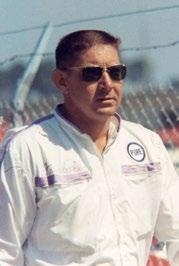
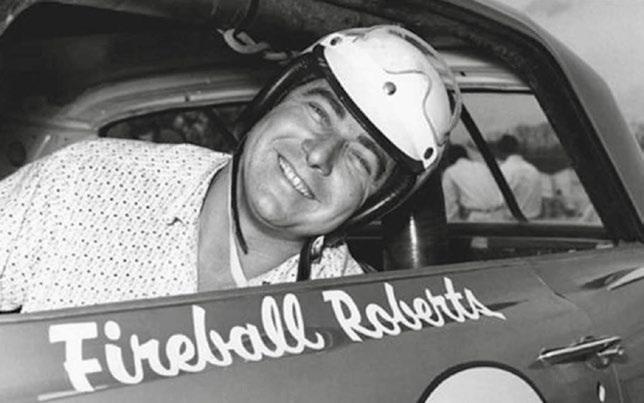
Glenn “Fireball” Roberts won 33 NASCAR Cup Series races from 1950 through May 1964. His biggest victories came in the 1958 Southern 500 at Darlington Raceway and the 1962 Daytona 500 at Daytona International Speedway.
Born in Tavares, Florida, on Jan. 29, 1929, Roberts was raised in the small town of Apopka, Florida. As a teenager, he became interested in playing baseball. He tried out for the position of pitcher for the Zellwood Mud Hens, an American Legion baseball team, and easily made the squad. His ability for throwing fast earned him the nickname, “Fireball.”
With World War II ending in 1945, many men sought ways to find adventure when they returned home. A new pastime known as stock car racing sprang up around the South among moonshiners and mechanics, and Roberts felt the sport was definitely for him.
He attended the University of Florida in 1947 and began racing on small dirt bullrings on weekends. He won a 150-mile race on the Beach and Road Course in Daytona Beach, Florida, during 1948, his first victory in NASCAR competition.
When the newly built Darlington Raceway opened for the Labor Day running of the inaugural Southern 500 in 1950, Roberts finished a surprising second among 70 drivers behind race winner Johnny Mantz. He had already won a 100-mile NASCAR Strictly Stock race, the equivalent of today’s Cup Series, two weeks earlier on Aug. 13 in Hillsborough, North Carolina.
Roberts went on to become a superstar and drove for the top car owners of the 1950s and early 1960s, such as Pete DePaolo, Smokey Yunick, Jim Stephens and Holman Moody.
Roberts died on July 2, 1964, from injuries suffered in a multi-car crash at Charlotte Motor Speedway on May 24.
IN 1957, ROBERTS WON EIGHT NASCAR CUP SERIES races while driving for team owner Pete DePaolo. Roberts recorded 27 top-10 finishes in his famed redand-white No. 22 Ford. He also logged four pole positions in 52 starts that season and led 1,414 laps.
OVER A PERIOD OF 13-AND-A-HALF SEASONS in NASCAR’s premier division, Roberts entered 206 races and won 33 times, recording 93 top-five finishes, 122 top-10 results and 32 pole positions. His average start was 7.8 with an average finish of 13.2. He was considered a top contender throughout his illustrious driving career.
ROBERTS WAS ONE OF THE MOST POPULAR drivers of the 1950s and early 1960s. Many NASCAR fans who saw him race compare his allure to the late Dale Earnhardt. When Roberts passed away in 1964, the sport was deeply shaken just as it was when Earnhardt died in 2001.
“He was a man first, competitor second and teacher third.”
–RICHARD PETTY
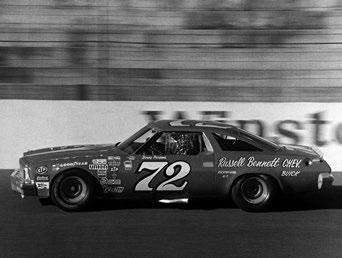
The 1973 NASCAR Cup Series champion went on to amass 21 premier series victories in 565 career starts.
Born on July 12, 1941, Parsons spent his formative years in the Blue Ridge Mountains of North Carolina. At age 18, he moved to Detroit, Michigan, to work with his father in the taxi cab business. In 1963, he worked at a gas station, the place where he was accidentally introduced to stock car racing. A patron needing gas for his race car hauler invited Parsons to go along to nearby Mt. Clemens Speedway. The team’s regular driver didn’t show up, giving Parsons his first ride.
In a short time, Parsons gained a reputation for winning races. Enough so that Ford’s powerful Holman-Moody factory team found a place for him within its fleet of drivers. Still, he only ran that one race – at Asheville-Weaverville Speedway – in NASCAR’s premier series until 1968. He joined the ARCA Racing Series that year, winning championships in 1968 and 1969. He also logged three top-10 finishes in four Cup Series starts in 1969.
Parsons’ best season came in 1973 when he won the NASCAR Cup Series championship while driving for team owner L.G. Dewitt. His near impossible return to the track after a car-crippling crash at North Carolina’s Rockingham Speedway to claim the title is considered the most miraculous comeback in the sport’s 69-year history. Parsons is still the only driver to win both the ARCA and NASCAR championships. In 1975, Parsons won the Daytona 500, putting him among the sport’s elite drivers. He retired from driving in 1988 and went into broadcasting. Parsons died of lung cancer on Jan. 16, 2007.
DURING THE 1977 NASCAR Cup Series season, Parsons collected a season high four victories – Nashville, Pocono, Dover and Charlotte – in L.G. Dewitt’s Chevrolet. He also collected 20 top-five finishes and 22 top-10 results along with poles at Nashville, Talladega and Richmond. His average start that season was 4.7 while his average finish was 7.8.
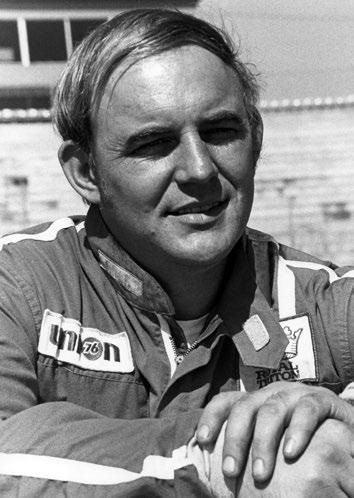
IN QUALIFYING FOR THE 1982 Winston 500 at Talladega Superspeedway, Parsons became the first man to qualify for a NASCAR event at over 200 mph (200.176). He was driving a Pontiac Le Mans for team owner Harry Ranier. Parsons logged 20-career poles during his 24-year career.
KNOWN FOR
THROUGHOUT HIS incredible NASCAR career, Parsons was a quiet competitor and often didn’t show his hand until the closing laps of races. Most of his 21 victories and 283 top-five finishes came after watching the competition battle for position as he saved his car for the final push to the checkered flag.
BENNY PARSONS WAS THE KINDEST, SWEETEST, MOST CONSIDERATE PERSON I HAVE EVER KNOWN. HE WAS ALMOST TOO NICE TO BE A RACE CAR DRIVER AND I SAY THAT AS A COMPLIMENT.
–DARRELL WALTRIP

Born Sept. 17, 1975, in El Cajun, California., Johnson began racing motorcycles when he was 5 years old. Offroad racing followed and led to a chance meeting with Herb Fishel, head of motorsports at General Motors during the early 1990s.
Johnson’s short-track success opened the door for him to eventually drive for Cup Series team owner Rick Hendrick.
Johnson began racing in the American Speed Association series in 1998, having made only six starts in a full-bodied race car before taking on his new role. He was fourth in points by season’s end and was crowned rookie of the year.
From there, the aspiring star joined the NASCAR Xfinity Series. In 2000, Johnson raced the full Xfinity Series for Herzog Motorsports, finishing 10th in points. He notched his first and only Xfinity Series victory in 2001 at Chicagoland Speedway.
That same season, Johnson joined Hendrick Motorsports for three Cup Series races after becoming friends with four-time NASCAR champion Jeff Gordon.
Johnson was then paired with crew chief Chad Knaus and they developed a magical chemistry for success. Starting in 2002, their on-track success established Johnson as one of NASCAR’s greatest drivers.
He retired from Cup Series competition in 2020.
DURING THE 2007 SEASON, JOHNSON LOGGED 10 victories with six coming on superspeedways and four on short tracks, including four in a row near season’s end. His second Cup Series championship season also featured 24 top-10 finishes in 36 starts. He held the championship point lead through the final three races.
JOHNSON WILL BE BEST KNOWN FOR COLLECTING seven NASCAR Cup Series championships while competing under several different championship point systems. Even though he didn’t make the playoffs in his final season (2020), he will be remembered as one of the sport’s most talented racers in its most competitive era.
THROUGHOUT 20 YEARS OF CUP SERIES RACING, Johnson was known as a smooth driver who rarely became agitated in the heat of battle. His ability to perform quietly under extreme pressure gave the impression of having a soft nature. Still, success through seven championships and 83 Cup Series victories tells his story.
Jimmie Johnson excelled throughout a 20-year NASCAR Cup Series career that included 83 victories. He also joined Richard Petty and Dale Earnhardt as the series’ only seven-time champions.
My bucket is full. NASCAR has been so wonderful for me. This journey has been more than I could have ever dreamed of or expected or hoped for.
–JIMMIE JOHNSON
 BY QUINN SWEETMAN
BY QUINN SWEETMAN
■ Welding machine capable of welding ¼” thick material (Forney 190 MP)
■ Plasma cutter capable of cutting 16 gauge (Forney Flex 30)

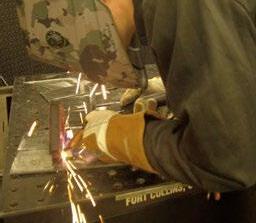
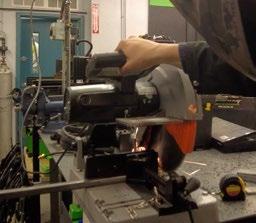
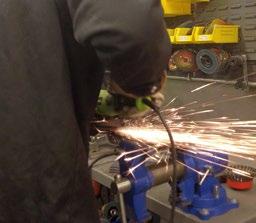
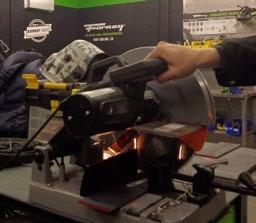
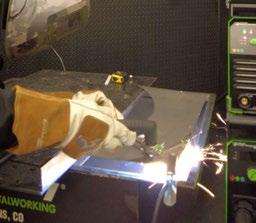
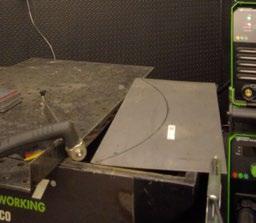
■ Chop saw with metal blade
■ 5 large magnets (Forney ITEM# 70715)
■ 5 4” x 12” ¼” thick plate (Forney ITEM# 49620)
■ 1 16 gauge sheet metal (Forney ITEM# 49575)
■ Angle grinder with flap disc (Forney ITEM# 1905 & 71923)
■ 6 inches of ½” square tube (Forney ITEM# 49520)
■ Circle cutting guide (Forney ITEM# 85683)
■ Personal protective equipment
1 Start by cutting out the base. Attach the plasma cutter to the circle cutting guide. Line up the circle cutting guide so the plasma cutter’s nozzle radius hits each corner.
2 Cut the radius out of the sheet metal.Move the sheet backward so the same radius can be cut out of the rear of the sheet metal. Use a tape measure to ensure an even cut on each side.
3 Build the car platform. Using the chop saw and metal cutting blade, remove 2” off one side of each ¼” plate. This will now make the plates 4”x10”.
4 Clean up the plates for a detailed finish. Remove the mill scale from the ¼” plates using a flap disc.
5 Create the bases for the tiered platform. Cut 3 sections of tubing 1½” tall, 2” tall and 3” tall. Using a chop saw or angle grinder, cut 30-degree angles directly in the center of the of the 1½” and 3” tall sections and on the very top of the 2” section. These pieces (once inverted) will create the perfect angles for viewing the top of the car.
6 Attach angled post to the car podiums. Using weld magnets to align the posts, tack weld them to the center of each of the plates.
7 Align the plates with the posts facing down, using the magnets to hold them up from the rear. Take your time to really align the podiums for the most uniform and best-looking orientation.
8 Tack weld the car podiums. Find a way that works for your cars to keep them from rolling off. You can leave this blank, use small magnets or weld a bar to the plate under the wheels. You can paint the podium, add flags or keep it simple with a clear coat.
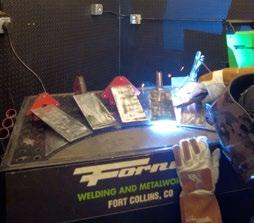

Campers and RVs lined up inside or outside of a NASCAR race track are one of the things people think of when they think of a NASCAR race – and some tracks know how to do camping quite well.
What do these race tracks have to offer when it comes to camping and, most importantly, which race tracks are the best at it?
Here are the five best race tracks on the NASCAR Cup Series schedule for camping and RVing:

They say everything is bigger in Texas, and camping at Texas Motor Speedway is a fun time. Texas offers both luxury experiences and more traditional options for camping at the 1.5-mile track.
For Texas’ infield camping, the biggest thing they hype is the view of Big Hoss, the giant TV on the backstretch. This makes watching the race from the infield even better.
Only two campgrounds offer full electric hookups, including Burnout Alley on the backstretch and the VIP campground outside of Turns 1 and 2. The VIP campground is $650 for the race weekend.
Outside of the race track, Texas offers unreserved ($75) and reserved ($200) camping spots outside of Turns 3 and 4. If you do not have an RV, then no problem, as Texas even offers a program where you can rent an entire RV and have it set up for you on a race weekend.
Despite the lack of hookups at most spots, Texas does allow generators to be run even past the 1 a.m. curfew. Meaning that, if needed, a generator can be used to keep the RV powered on.
This year, Texas is even hosting the Wild Asphalt BBQ Showdown presented by PitBoss. The winner gets a VIP experience. Talk about a tremendous way to ring in a race weekend, especially for those who love barbecuing.
Texas offers some unique experiences for those who want to camp for a race weekend, and the big TV makes watching the race a great experience for those on the infield. Texas knows how to do RVing right.
location of Michigan International Speedway is remote, yet in quite the picturesque place. As opposed to being surrounded by flat land, some of the track’s campgrounds have trees and ponds.
The Tree Farm campground ($185-$205 per weekend) is located just outside of Turn 3 and features a secluded location and campsites as big as 20 by 55. The Graves Family campground ($195-$325 per weekend) is located just across the street from the track, and it has things such as a fishing pond, a hiking trail and a playground.
Michigan International Speedway is a fun place to camp for multiple reasons. There are campgrounds for those looking for a luxurious stay, or for those who want a more traditional camping experience.
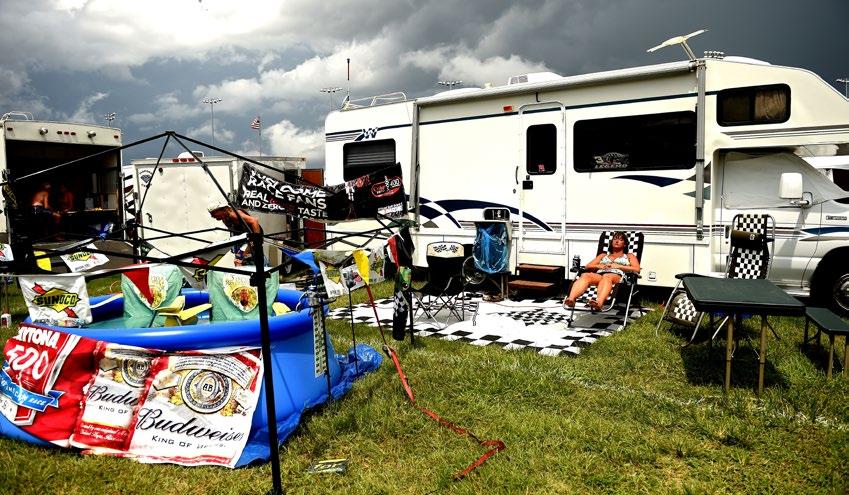
For those looking for a luxury experience, multiple campgrounds overlook the race track. The new Turn 1 Resort, Turn 2 Retreat and apex campgrounds overlook the racing surface.
The campgrounds outside of the race track offer some more traditional camping. Being nestled in the Irish Hills, the
Hayes State Park is less than 10 minutes down route 12. If you want to camp or RV there, and commute to the track for the races, that is an option. The biggest thing Michigan offers is a more traditional camping experience for those who want it.
The track also has a couple of cool programs for campers, including a weekend camping package that includes grandstand tickets for the full weekend and two pre-race passes for Sunday. They also offer a program where you can rent an RV from the race track and have it set up for you for the weekend.
Michigan is truly a track for the more traditional campers, but it offers some luxury options as well. Being in the Irish Hills makes the surroundings pretty cool, too.

Charlotte is a track that offers multiple options for campers. There are premium, full-hookup RV campgrounds with great views of the race track, a family campground and even yearround camping.
Charlotte has a few premium options with hookups, including two just outside of the race track. In the middle of Turns 1 and 2, there is the 600 Terrace in which passes cost between $6,500 and $7,500. The Overlook is also another place that has a perfect view of the track just outside of Turn 1.
The Camping World Racing Resort is a premium option during race weekends, and it features full hook-ups for $650 during the ROVAL weekend. This is located across the street from the oval track, next to Z-MAX Dragway. One of the coolest things this place offers is year-round camping.
For between $45-$50 per night year round aside from race weeks, the Camping World Racing Resort allows people to camp near the race track. A cool option if visiting Charlotte for a week to tour the various race shops of check out the NASCAR Hall of Fame.
If bringing the family, the GEICO Family campground offers 20 x 45 spots for $150 on the upcoming ROVAL weekend. It is worth noting that this campground is a dry campground. Power generators are allowed, but they must be turned off during “quiet hours.”
For most campgrounds, the check-in is on Monday, but the exception is the infield campgrounds, where check-in is on Wednesday of race week. Check out is the Monday after the race for all campgrounds.
Charlotte offers options if someone wants a luxury experience or to bring their family for a fun weekend. This is always awesome for campers, and Charlotte offers a lot outside the track to do as well. There is nothing quite like race weekend at Charlotte Motor Speedway.

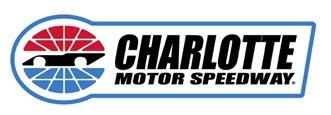
Daytona and camping – they just seem to go together. The sheer amount of space at the facility allows for some great camping opportunities, and there is even Lake Lloyd.
Imagine being able to camp right next to a lake, looking across and see the Daytona backstretch. That is exactly what camping at Lake Lloyd offers on Gecko Shores, even if a camping spot there can be difficult to obtain.
According to the track’s website, 50 amp hookups are available at every premium campsite. There is free Wi-Fi available as well. Therefore, if you want to camp in luxury or style, Daytona offers that.
With a great experience, however, comes great expense. As of June 28, the


Whether you’re looking for utility, recreation or fun, Aluma has the perfect trailer for you! Aluma offers a complete line of durable, lightweight and maintenance free aluminum trailers.

IN the

cheapest camping spot available at Daytona for the Coke Zero 400 weekend is outside of Turn 1 in the GEICO West campground at $220.

Compared to some other tracks on the schedule, that is quite expensive. If you want to camp at Daytona, be prepared to shell out some cash. That being said, it is Daytona after all. Even if the expense is high, the idea of camping at the World Center of Racing during some of NASCAR’s biggest and most exciting events could well be worth the price of admission. On top of that, who could beat Florida warmth in February on Daytona 500 race weekend? Being at the track is a fun experience, and camping is a fun experience at one of the most iconic race tracks in the sport.
Talladega has a wealth of options depending on what type of camping experience you desire.



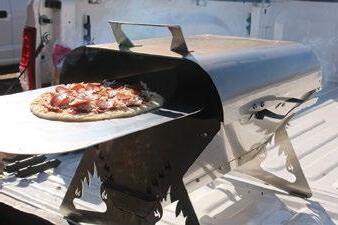
If you are not interested in the infield party scene, then a few Talladega campgrounds feature designated “quiet time” during the late night hours. Talladega also offers free camping as well in three different campgrounds outside of the race track on a firstcome, first-served basis. As long as you show them your ticket for the Sunday Cup Series race, then you are good to go!
As for where the best party scene is, the Boulevard is the place to be, but good luck getting a reserved spot. Not only are the spots expensive, but they go quickly as they are not even currently listed for sale on Talladega’s website for the fall race weekend. However, there are many other places with no designated “quiet time” where partying happens well into the night.

Depending on the campground, camping can start as early as Monday of race week, so there is definitely the ability to have fun in any way you want to. Add to that the mix of affordable options, party options, more relaxing options, tent camping and RV camping, and it means Talladega has a little something for everybody. There is a reason why Talladega has the most iconic campgrounds in NASCAR.
Is it really a surprise that Talladega is No. 1? The infield party scene at Talladega is the stuff of legends, but that is far from the only thing that Talladega’s campgrounds offer.
Camping at a NASCAR race is a top-notch experience, and these race tracks take it to an entirely different level. If camping at any of these five places, expect to have a great time.
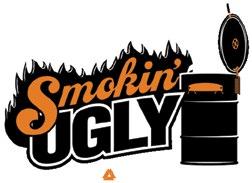

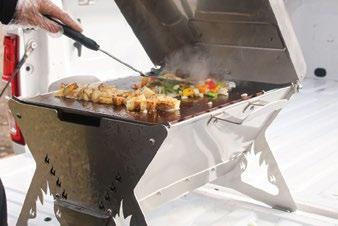

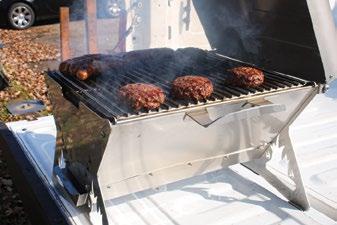



Love attending NASCAR races but not so in love with sitting in traffic, staying in a hotel room and eating high-dollar food from the concession stands all weekend?
You’re undoubtedly not alone. It’s safe to say that most NASCAR fans would prefer not to deal with these inconveniences when they’re at the track or in town for a race weekend.
Many fans do, however, out of nothing more than sheer ignorance to the kind of experience that bringing an RV to the track could afford them. As for those who’ve gone the RV route and enjoyed all the comforts and amenities that come with it, they wouldn’t travel to a race track any other way.
But what advantages exactly does having your RV at the track provide?
“First of all, you are there,” said Todd Leiser, a retired longtime RV owner who’s traveled to numerous races from his Florida home with one of the two RVs he’s owned in the past 10 years. “You don’t have to deal with the traffic in and out on race days. You can take your time leaving, as most tracks allow RVs to stay overnight after the Sunday race and leave by noon or so on Monday. Next is the normal benefit of RVing; you don’t have to pack and unpack your clothes like you would in a hotel room.

“Plus, you have all your stuff and you know where it is. There is also the benefit of being at the track when it’s quiet. Mornings with either your own or your neighbor’s bacon, eggs, etc. breakfast aroma, with the backdrop of the track, is a great experience.”
Tony Ennis, a 64-year-old NASCAR fan from Spartanburg, South Carolina, has a similar take on life as a NASCAR RVer. Ennis has purchased three Class A RVs since 2005, and it’s a rarity for him not to bring his RV to the track.
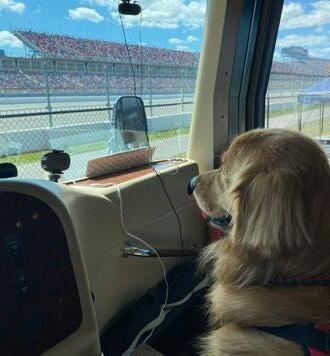
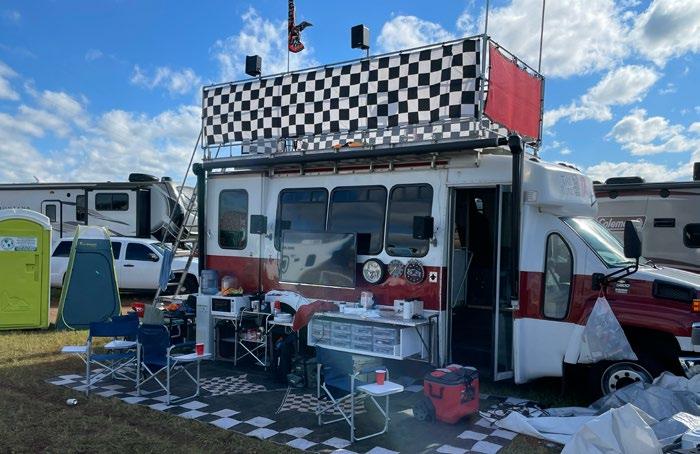
“There has been only three times in the last five years that I attended a NASCAR race without the RV,” said Ennis, who typically travels to 12-14 NASCAR race weekends each season with family and friends. “By not having the RV, you need to balance early arrival and either leaving early or sitting in traffic. The overall experience is not as enjoyable.
“In fact, I find myself bringing the RV to the local short-track races that are having a big show.”
It’s no wonder that Ennis and other RV owners feel this way. Most modern-day RVs provide so much more than a place for one to lay their head at night.
“A lot of the RVs now have outside kitchens,” said Stephen Paulin, the sales manager for a Camping World RV dealership in Concord, North Carolina. “So, you’ve going to have a refrigerator, a griddle, a cooktop, a sink – all outside. A lot of them are equipped with TVs outside, so it’s more or less a tailgating machine that you can take, and at night, you can sleep inside, and it’s going to have all your amenities. But on the outside, you can do anything you want. You can hook up exterior grills and TVs, you can stream, you can have satellite, electric awnings, screened-in porches on some of these things. The possibilities are endless.”
Especially in this post-COVID-19 world when many people are more concerned about germs than ever before, RVing at the race track seems to be growing in popularity.
“The sanitation of an RV makes it much, much cleaner than going to a hotel,” Paulin said. “You know that you’re sleeping in your own bed. At our dealership, every preowned unit that we sell, we put brand new mattresses in, and we do full sanitation and disinfecting and all of that. It’s a lot better. You’re sleeping in your own bed, you have your own sheets and blankets and all that. It’s definitely a cleaner, safer way to travel – and a lot more affordable.”
The Camping World dealer where Paulin is stationed was the top-ranked RV dealer in North Carolina in 2022 – no doubt in no small part because it’s located a quarter of a mile from Charlotte Motor Speedway, the host of two annual NASCAR Cup Series race weekends and one of the most popular tracks on the Cup Series schedule.
“The biggest thing I’ve seen around here is just the camaraderie and the fellowship that you get at the campgrounds of the NASCAR RVer community is just phenomenal,” Paulin said. “It’s everybody being together and hanging out and barbecuing and just having a good time. It turns a four- or five-hour race into a whole weeklong event for some of these folks that come down and travel from all over just to come to these races.”
Over the past decade, Leiser and his wife have visited numerous race tracks – Daytona, Talladega, Kentucky, Eldora, Michigan, Texas, Homestead, Bristol and Darlington – in one of two Class A RVs they’ve owned: a 32-foot 2015 Jayco Precept and a 43-foot 2017 Entegra Aspire Diesel.
Unlike some RVers, however, the Leisers prefer a more simplistic setup. For them, the main purpose of taking their RV to the race track is relaxation and being as comfortable as possible.
“Our RV lifestyle at the track typically is not focused on spending as much time outside our RV with the various accoutrements that are available: expansive grill and socializing setups, inflatable swimming pools, flags and banners, etc.,” Leiser said. “We enjoy being at the track, setting up some basic chairs and a mat, then walking our dogs around the campground and midways, people watching and taking advantage of pit passes and access we may have bought or been able to obtain.
“Otherwise, we watch the pre-race coverage and a fair amount of the actual races on our TVs either inside in the air conditioning – think Daytona in August – or outside on the TV built into the side of the RV. We typically don’t go into the grandstand to sit in seats for the race.”
Ennis has a similar approach with his 39-foot 2021 Thor Miramar model, which features three slides, a king-size bed, 1.5 baths, a fireplace, a 100-gallon water tank and a 5.5-kilowatt onboard generator with solar panels. Sophisticated as his Class A RV might be, one of his
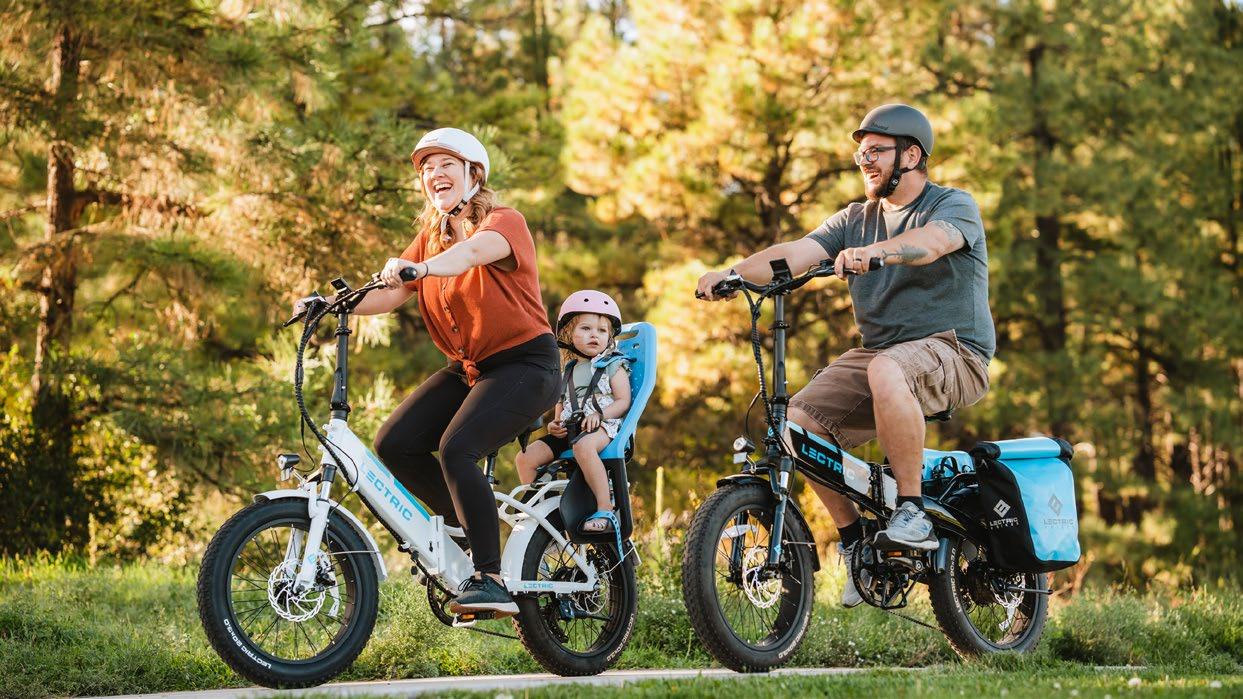
favorite parts of the NASCAR RVing experience is the opportunity it allows he and his wife to connect with other NASCAR fans who are RV users.
“Besides the cost and time savings, the best part is the people you meet. In most cases, friendships are built,” Ennis said. “We have friends from all over the country, Canada and Australia. At each of the tracks there are different friends. We stay in touch with friends throughout the year.”
As for any suggestions or advice Ennis would give someone planning to bring an RV to track for the first time, it’s all pretty basic but important, nevertheless.
“Know your campground info,” he said. “This includes your arrival time, lot size, facilities – water, dump stations and security – and be camper-friendly to your neighbors when it comes to generators, loud music, dogs and safety like generator exhaust. Lots of people are close together, and we need to make sure all have an enjoyable time. Also, ask questions of your neighbors – almost all are willing to help in time of need.”
Eight years after claiming the NASCAR Xfinity Series championship, Chris Buescher appears poised to enjoy his best season as a NASCAR Cup Series competitor.
Brad Keselowski’s first year as part of the ownership at RFK Racing was a challenge for the two-car operation. While the 2012 Cup Series champion and his No. 6 team never found their stride, Buescher and his group were only a tick better.
Showing steady improvement as the season progressed, Buescher snapped a 222-race winless streak when he drove the No. 17 Ford Mustang to victory at Bristol Motor Speedway. In the end, he tallied a career-high 10 top-10 finishes, with half of those coming on road courses.

This year, both RFK Racing cars have been more competitive on a variety of race tracks, and Buescher is on pace to set new personal bests in several statistical categories.
The 30-year-old racer from Prosper, Texas, recently sat down with Pole Position and addressed a variety of topics, including his new role as a father:
TELL

It has been a strong year for RFK. I’m proud of our group and the progress we’ve made with both of our race cars. That goes back to everyone at the shop who has worked hard and adapted to all these changes and given us fast race cars at all kinds of different styles of race tracks. We’re not talking about us being good at road courses and superspeedways; we’ve also been able to compete at short tracks and mile-and-a-halves.
There’s a definite readable progress that we’ve all seen. The points show the overall picture, but we look at our finishes week-in and week-out and we’ve been close to contending for a lot of wins. We need a little more, but definite progress.
To a certain extent, yes. However, I have a really hard time getting caught up in points. I can always tell you what could have been better for us in a points situation and how it could make our position feel different, but so can everyone else. When you look at our finishes and read over our top-five results and top 10s, that’s more representative of our season because you’re always going to have bad weeks, too. You will have a week or two where you get wiped out and that kills your points position. It’s more about the finishes and what we’re able to accomplish versus that side of things.
I’ll sit here and tell you that we were stronger this year at Sonoma compared to last year. Were we closer to the win last year? We appeared to be, but competitively, I think we were better this year. Cautions didn’t fall perfectly for us, but there is some form of measurement to me that I can pull up and say we were a bigger contender this time around.
It’s good progress and nice to be in the hunt at many different styles of race tracks. For a lot of years, being in an underdog situation, it’s not a mystery on the RFK side and going through some of our woes and difficult years. It’s hard to overperform on days like that when, as a whole, we’re all trying to find something better. I would have liked to go into race weekends and consistently raise the bar and do it with everyone on the team within the shops. We are with our (No.) 17 team, and it’s awesome for me to be able to say that. I’ve been able to do it everywhere that I’ve been to over the last seven years of my entire Cup career.
DO YOU LIKE TO BE LABELED AS AN UNDERDOG?
I don’t think we are anymore, and that’s mostly because RFK is strong. Now that we have good equipment, it’s time to keep up with it. I got used to the term growing up ARCA racing, Legends Car racing, whatever. We never showed up with the stacker rigs and we never had the people behind it. We worked hard, scraped by and did everything we could to make sure we showed up with fast race cars and outperformed what was expected of us.
We drove around in ARCA for four years with white race cars and black door numbers with David Ragan Fan Club on the side of it. We worked hard to outperform what was expected. The term doesn’t bother me because I’m used to it, but I don’t think it’s suitable now.
WHEN DID YOU BEGIN SEEING AN UPTICK IN PERFORMANCE?
I think it was Dover last year when we got the pole and ran
well during that race. Sonoma, we ran really well and were in the hunt for the win. Richmond, we were in the hunt. We went to a lot of different styles of race tracks and were competitive. That was the turning point last year.
We got into the playoff stretch and I don’t think we were as competitive after Bristol through the end of the year. But we’ve been able to turn that around at the beginning of this year.
WHAT’S BRAD KESELOWSKI LIKE AS A TEAM OWNER?
It’s been neat to see his way, his knowledge and the sense he has around the work he puts into it. To see it all show up in results, that’s always been hard. I’ve been around Roush for a long time, and have seen people work harder, turn more hours and see minute progress through all of that; and it gets frustrating. You always hope that the work and the effort does not come without results.
We’ve been able to see that and it’s a huge part of Brad, his style and some of the people that he’s brought in and changes within the organization.

I’ve seen Jack happier than I’ve seen him in a long time. To see him cutting up and joking with people and laughing, it’s been a lot of fun being around him. A lot of that comes from strong races.
WHY HAS THERE BEEN INSTANT CHEMISTRY WITH SCOTT GRAVES AS YOUR CREW CHIEF?
Scott has been on the pit box for a lot of my career and we’ve been able to have a good understanding of each other from the get-go in the Xfinity Series days. We had strong races, won races, won a championship. We went our separate ways for a while, but the crew change we did at the end of 2021, we clicked back in quickly. We thought it was going to click and we could fire off where we left off, or close to it. That’s what led us to being able to run competitively quicker.
During the first half of last year, the No. 17 team was able to find our way a little bit quicker and I think that’s because there was some known chemistry between Scott and I. We both have relationships with people within the RFK organization and I think that goes a long way. It’s hard from Brad’s side of things, because not only was he taking on an ownership role, but having a new crew chief he had never worked with. The only continuity that he had was he was still driving a Ford. That’s difficult and I think that’s a big reason why we were able to get going quicker last year.
It’s been a blast. I can’t tell you how fortunate we were to have her (Charley) in the offseason because I had a lot of time and it was the holidays, the family was all around. I got a lot of advice on what in the world I need to try and do here. It’s been a challenge and learning experience every day. It’s been awesome watching her grow up and start developing a little personality.
Sparco sent her a fire suit (in June). It’s Fastenal blue, just in case she decides to go that route. We’ll see how that plays out, but she’s a daredevil already. She loves to fly around the farm on side-by-sides and loves to ride anytime she’s in a vehicle with her hands on the steering wheel. Doesn’t care about toys, just wants her hands on the steering wheel, so I’m in trouble.
One of the top NASCAR Xfinity Series drivers this season, John Hunter Nemechek has followed an unconventional path to where he is today.
Unlike many young drivers who make it to the Camping World Truck Series from NASCAR’s lower levels and work their way up to the Xfinity Series and ultimately land a ride in the NASCAR Cup Series, 26-year-old Nemechek has gone from the bottom to the top and back down again.
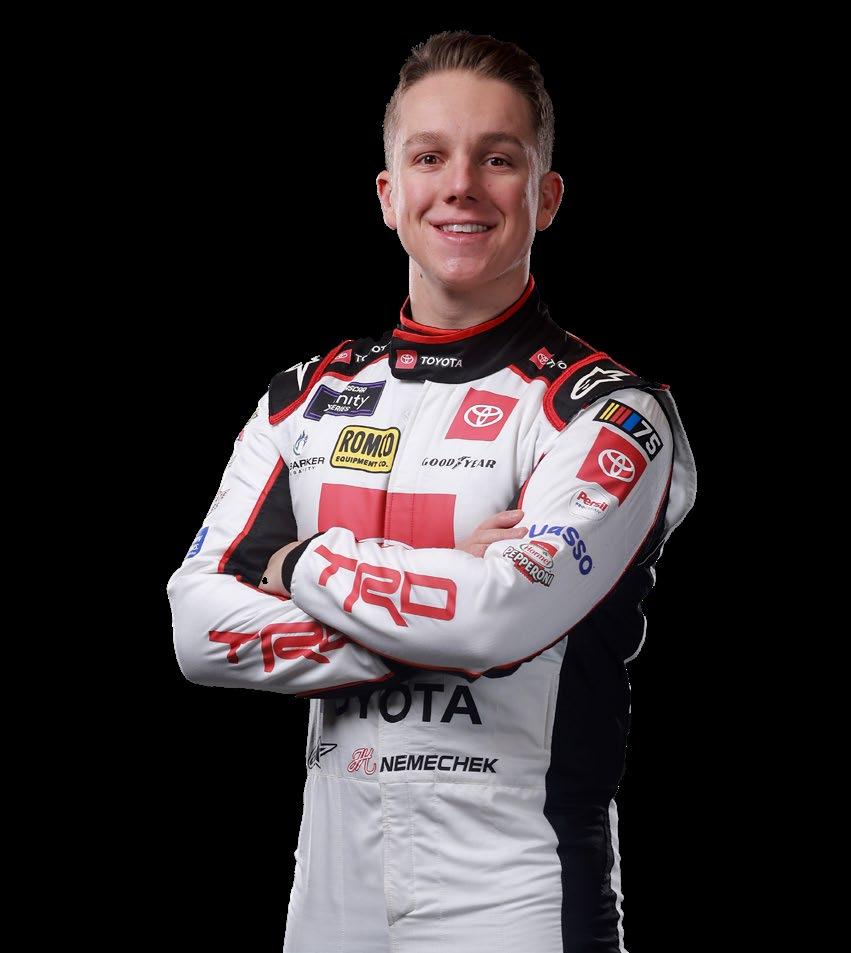
Now, he’s working his way back up, and he’s in a good position to earn a second opportunity in the Cup Series –perhaps this time with Joe Gibbs Racing, the organization
for which he currently competes in the Xfinity Series but that also fields the Cup Series cars of Denny Hamlin, Martin Truex Jr., Christopher Bell and Ty Gibbs.
In a wide-ranging interview with NASCAR Pole Position, Nemechek discussed his unusual career progression, his hobbies outside of racing, his favorite tracks, the influence of his father – former NASCAR Cup Series driver Joe Nemechek – and racing in memory of his late uncle John Nemechek, who died tragically in a Craftsman Truck Series race at Homestead-Miami Speedway in 1997, just a few months before John Hunter was born.
I would say the surprise comes from almost revamping your career. I don’t feel like a lot of guys have gotten a shot to do that or they’ve kind of been written off when they haven’t won in different series or in a couple of years.
So being able to have the second opportunity to come back and show that I can win in the Truck Series, show that I can win in the Xfinity Series and hopefully end up in a top-tier Cup ride at some point in the future, I think the progression through the series and then kind of restarting almost has been kind of the biggest surprise for me compared to your conventional career path of trucks, Xfinity, Cup and then kind of staying there.
DO YOU FEEL LIKE YOU WENT CUP SERIES RACING TOO SOON WHEN YOU MADE THE LEAP IN 2020?
I wouldn’t say too soon. I feel like the situation I was in at Front Row Motorsports, I wouldn’t take it back and I don’t regret going there. I feel like it was a great opportunity for me to go and learn and to understand how hard Cup Series racing is, but I wouldn’t say too soon. … You can say “too soon” from the standpoint of just taking an opportunity when it presented itself rather than trying to wait for a top-tier ride, I guess you could say, with an organization that has proven that they can win races – but I don’t feel like I jumped too soon.
WHAT DOES IT SAY ABOUT YOU THAT YOU WERE WILL ING TO GO BACK AND RUN TRUCKS AND XFINITY AFTER HAVING HAD A FULL-TIME CUP SERIES RIDE?
It was taking a gamble on myself. When you have won in everything that you’ve pretty much sat in as a driver, and then you go and you don’t win, you start to question yourself if you can do it. There’s some self-doubt there on, “What am I doing? How
can I win?” and different things of that sort, but I am the type of person that I will do whatever it takes – however many hours it takes being put in from the work side – to go out there and succeed.
I think being able to have the opportunity from K.B. (Kyle Busch) and Toyota/TRD to come back (to the Truck Series), it all made sense to me. It was a gamble that I had to take. If I had went to KBM (Kyle Busch Motorsports) and couldn’t win a race, then obviously that was probably the wrong gamble, but we were able to succeed really fast – I think the third race of the year we had won. That kind of paid off from just showing that we could win and were fast and were one of the guys to beat every single week.
WHAT’S IT BEEN LIKE CARRYING ON THE LEGACY OF YOUR UNCLE, JOHN, AND HAVING HIS NAME?
It’s been unique. There’s a lot that I don’t necessarily know about John, and I had never met him. So, just hearing stories and different things of him, he was a competitor, but he was also a prankster and a jokester and all kinds of stuff behind the scenes, and pretty much everyone loved him when he was around them and whatnot.
So, I’m enjoying being able to carry on that legacy. I think it means a lot to my family to continue that on and go out there and do some things that he didn’t have the chance to do – like winning in the Truck Series and different things of that sort – so it’s really, really neat and knowing that he looks down on us and hopefully is smiling up there is really kind of heartwarming.
HOW MUCH INFLUENCE DOES YOUR DAD HAVE ON YOUR CAREER AND HOW OFTEN DO YOU GUYS TALK?
He has had a huge influence on my career. When I drove for him, he was a boss, a mentor, kind of everything under the sun – a team
owner. Since kind of moving away, we still chat about racing and different things of that sort. He’s not as heavily involved as he once was.
He’s kind of let me grow on my own, which I’ve been very thankful for, but at the same time, he is still there if I have questions or different things, and he’s still not afraid to pipe up if he sees me do something wrong or dumb or make a move that I probably shouldn’t have, but I feel like being able to chat with him – just from his experience side and some of the things that he’s been through in his racing career – definitely still helps out.
WHAT DO YOU ENJOY OUTSIDE OF RACING?
A little bit of everything, to be honest. I love being on a bike, mountain biking, road cycling, love being outside. We’re big into wake surfing, being on the lake, just kind of enjoying life.
HOW CONFIDENT ARE YOU THAT YOU’RE GOING TO END UP WITH A FUTURE CUP SERIES RIDE, ESPECIALLY WITH MARTIN TRUEX JR. AND DENNY HAMLIN BEING NEAR THE END OF THEIR CAREERS AT JOE GIBBS RACING?
I don’t know. I thoroughly hope that I can slot in one of those seats or a seat in the Cup Series at some point, but I feel like it has to be the right opportunity for me. I like where I’m at right now in the Xfinity Series at Joe Gibbs Racing and with Toyota, but I do feel that my goal is to be back in a Cup Series car in the near future — to be able to go out and try to win races and championships.

I feel like I have the talent and determination to do so. I just have to have all the stars align and help build a program around myself and slot into a great car and great team. Who knows where that’ll be or how that’ll happen? But I feel like the future will take care of itself. I just have to focus on this year and winning races.

Corey Heim is making a name for himself as one of the most promising young prospects in NASCAR. The 21-year-old racer from Marietta, Georgia, has emerged as a consistent front-runner and championship contender in the NASCAR Craftsman Truck Series.
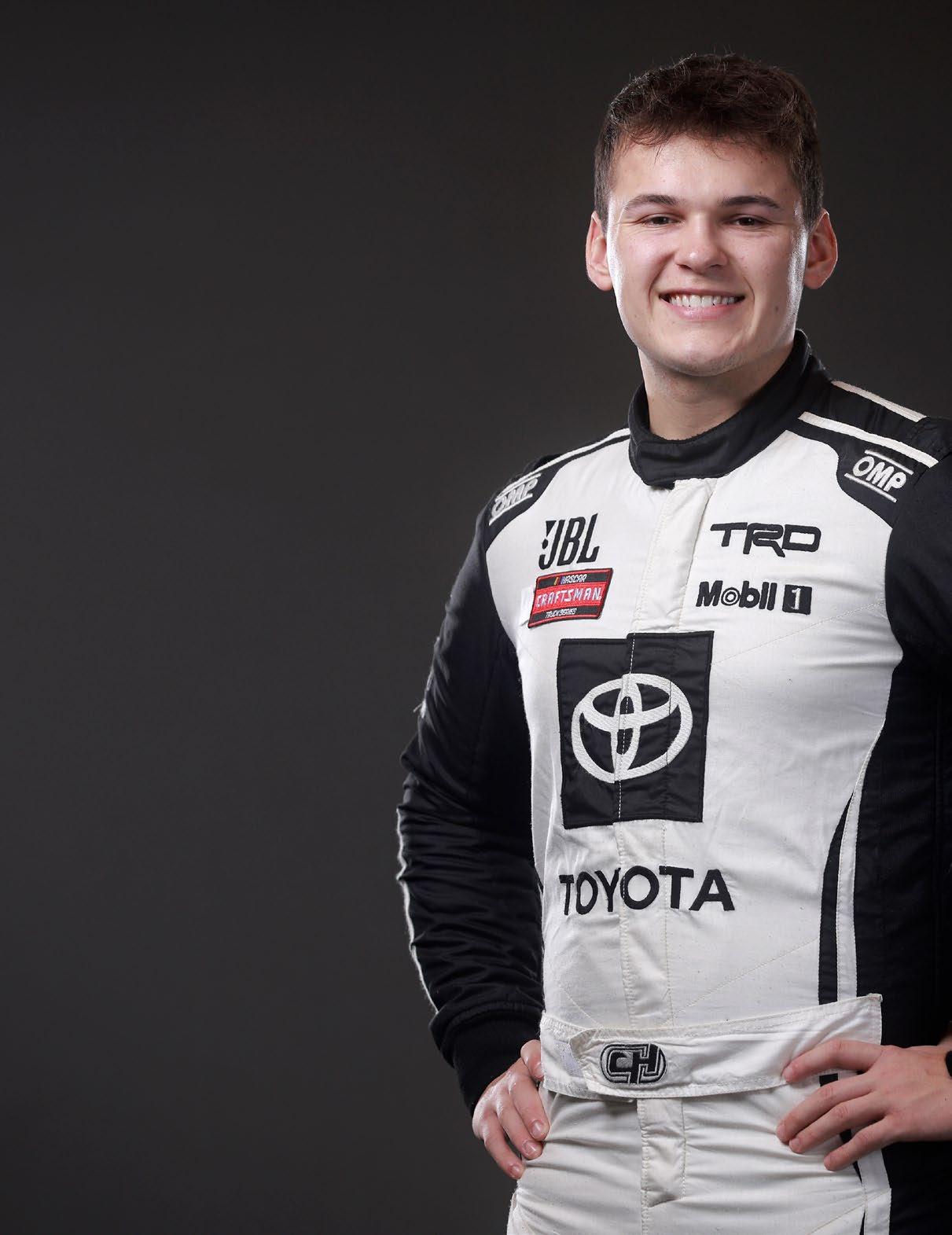
Now wheeling the No. 11 Toyota Tundra for Tricon Garage, Heim recorded 10 top-10 finishes in his first 12 starts this season, including a victory at Martinsville Speedway in mid-April.
Heim is part of the Toyota Driver Development program and previously drove for Kyle Busch Motorsports and Venturini Motorsports.
Many garage area insiders expect Heim to be among the Championship 4 when the Truck Series returns to Phoenix Raceway in November.
The young driver recently took time to discuss his season, evaluate his new team and share his expectations for the playoffs.
WHAT HAS THIS SEASON BEEN LIKE FOR YOU?
It’s been up and down at times. Recently, we’ve had really good speed every weekend. To start the year, I didn’t know if we’d get to that point, just being with a new team, new crew chief and a new spotter. I didn’t know those guys at all. I didn’t know what the future looked like for us.
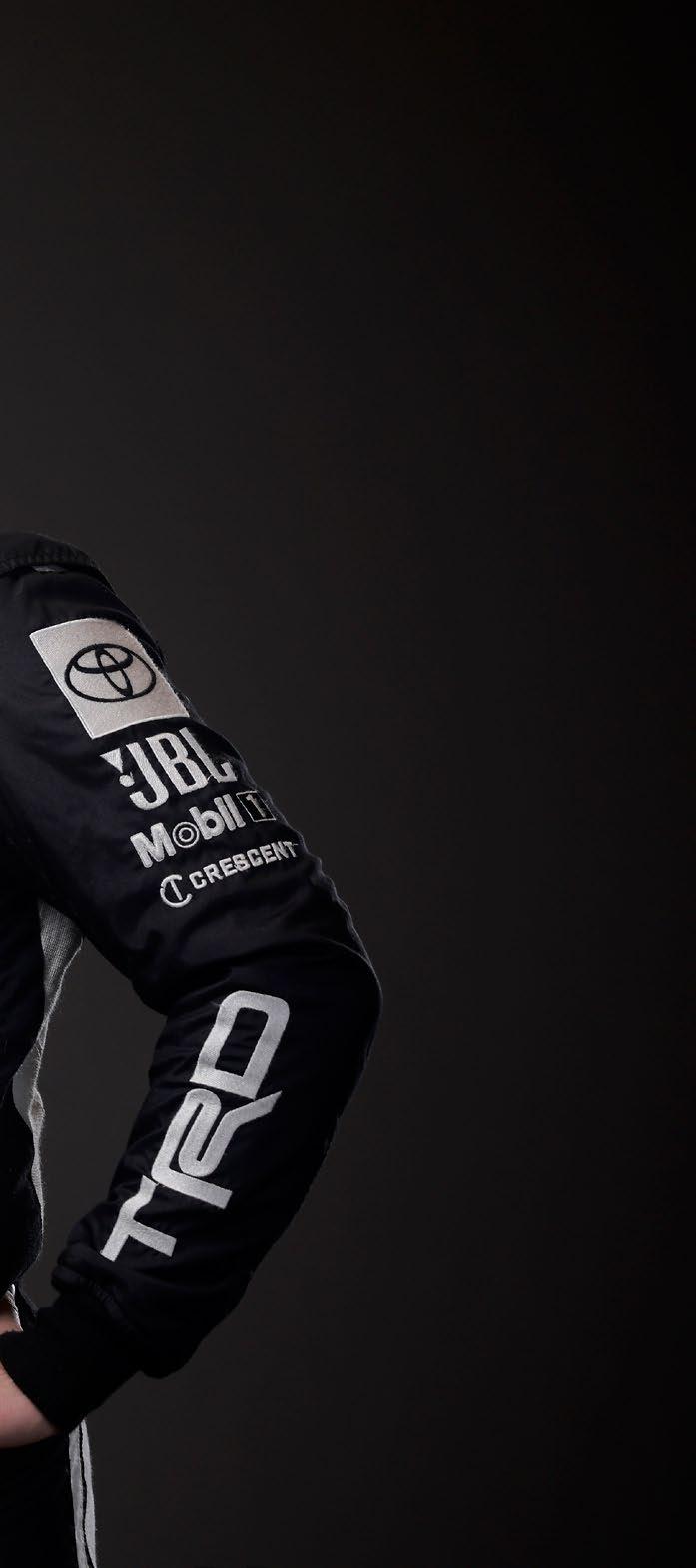
As the season started going along, months started clicking by and I started seeing a lot of bright spots on our team. We’ve gotten to the point where I feel like we’re one of the trucks to beat.
WHAT IS IT LIKE COMPETING FOR TRICON GARAGE?
It’s been different. Coming from KBM last year, it’s a different kind of vibe. KBM is very oriented in what they’ve been successful with in the past. Tricon is more innovative and they’ve been very open to change just because the last couple of years haven’t been as good as they wanted.
With (crew chief) Scott Zipadelli coming in from Hattori, having a lot of success, they’ve been open to what he wants to do and the changes he wants to make. They’ve been good so far. I like how open they are.
WHAT’S AN EXAMPLE OF SOMETHING THE TEAM HAS BEEN OPEN TO CHANGING?
Really, it’s just anything. From the aerodynamic side, they’ve been consistent every week with what they’ve brought to the track. It’s been good, but it hasn’t been over-the-top. They’ve been open to change. We’ve been able to tell the chassis guys we need to make improvements here or there, and everyone’s come together in agreement. It’s come together for the better. Sometimes, it’s hard to see the light at the end of the tunnel when you’ve run good with something but not great. You don’t want to go backward. But everyone trusts each other and it’s a good mutual decision to keep getting better and going forward.
WHAT’S THE BIGGEST DIFFERENCE BETWEEN WORKING WITH KBM – A CHAMPIONSHIP-WINNING TEAM – AND TRICON, WHICH IS CHASING ITS FIRST TITLE?
It’s just being open and innovative. KBM brought really fast trucks, but we just ran the same from the start to the end of the year. We were fast and in contention, but we never went out and dominated a race.
With Tricon, they’ve been innovative and they’ve made changes to become a championship-caliber team. We’re going in the right direction. It’s something I’m not used to. We’re making changes every week. I’ve learned to like that and enjoy the fact that you don’t know what you’re going to have. Everyone is investing the time and effort into it, and everyone hopes it’ll be good. Nine times out of 10, it has been good.
WHAT’S IT LIKE TO WORK WITH TEAM CO-OWNER DAVID GILLILAND, WHO’S A VETERAN RACER HIMSELF?
He’s very in tune with what we’re doing. He still steps in the truck and he did so this year at Charlotte. That helps him understand what other drivers are doing, and how he can coach us and improve our team on a weekly basis.
He’s worked with Cup-level talents like Ryan Preece. Being able to hone in on that and understand what made them successful, he can go back to younger drivers like me at Tricon and understand what makes a successful driver. David is definitely really involved and I appreciate that from him. He’s a team owner who’s really involved and invested, and you can’t ask for more from his part.
YOU’VE RUN A FEW XFINITY SERIES RACES THIS SEASON FOR SAM HUNT RACING, FINISHING 10TH IN YOUR SECOND START AT ONE OF THE TOUGHEST TRACKS IN DARLINGTON. WHAT’S IT BEEN LIKE TO GET YOUR FEET WET IN THAT SERIES?
It’s been a wake-up call for me a little bit. It’s not that I’m lacking anything on the preparation side or anything like that, but it’s so much different than the truck and I didn’t really understand that. When I’m watching it, I expected it to be different, but it’s a lot different. It’s a lot of fun.
The Xfinity Series races have more longer runs and more dynamic racing. With the trucks, we struggle to have long runs because of the short stages or there’s a lot of cautions. It’s fun to move around (the track) and see where everything trended. I feel like I learned more in my first two starts than I have in any other two starts that I can narrow down.
WHAT WOULD IT MEAN TO YOU TO WIN THE CHAMPIONSHIP?
It would mean everything. Me being out at Gateway was a humbling experience, but it helped me understand how much this means to me personally. When you sit at home for a weekend and watch someone else in your truck, it’s a humbling experience. It’s really telling on what happens when you’re not there. With everything I’ve done this year, I feel like I deserve to run up front every week and contend for this championship. It’s created a lot of reflection, but I feel like we’re good enough to make a run for it.
WHAT DOES TOYOTA’S SUPPORT MEAN TO YOU?
It means a lot. I started with them in 2020, but we didn’t get started until the summer of that year due to COVID. Ever since, I started working closely with them and it’s been amazing. They supply everything you could possibly need. Every morning, I go workout and I meet with the staff – my nutritionist, my sports psychologist, my physical therapist. Everything you could possibly need to succeed as a professional race car driver is there.
The opportunity is present, and I feel that I do a good job at taking advantage of that. I’m doing everything I can to set myself up for success on any given weekend. Outside of that, working with the upper levels of Toyota and being able to have them put me in a good spot this year. After KBM and the relationship there collapsed, I feel like I was a little lost about my future. But they did a phenomenal job at getting the new team set up. It was a slow start, but TRD has done a good job at building a successful race team. It’s been great.
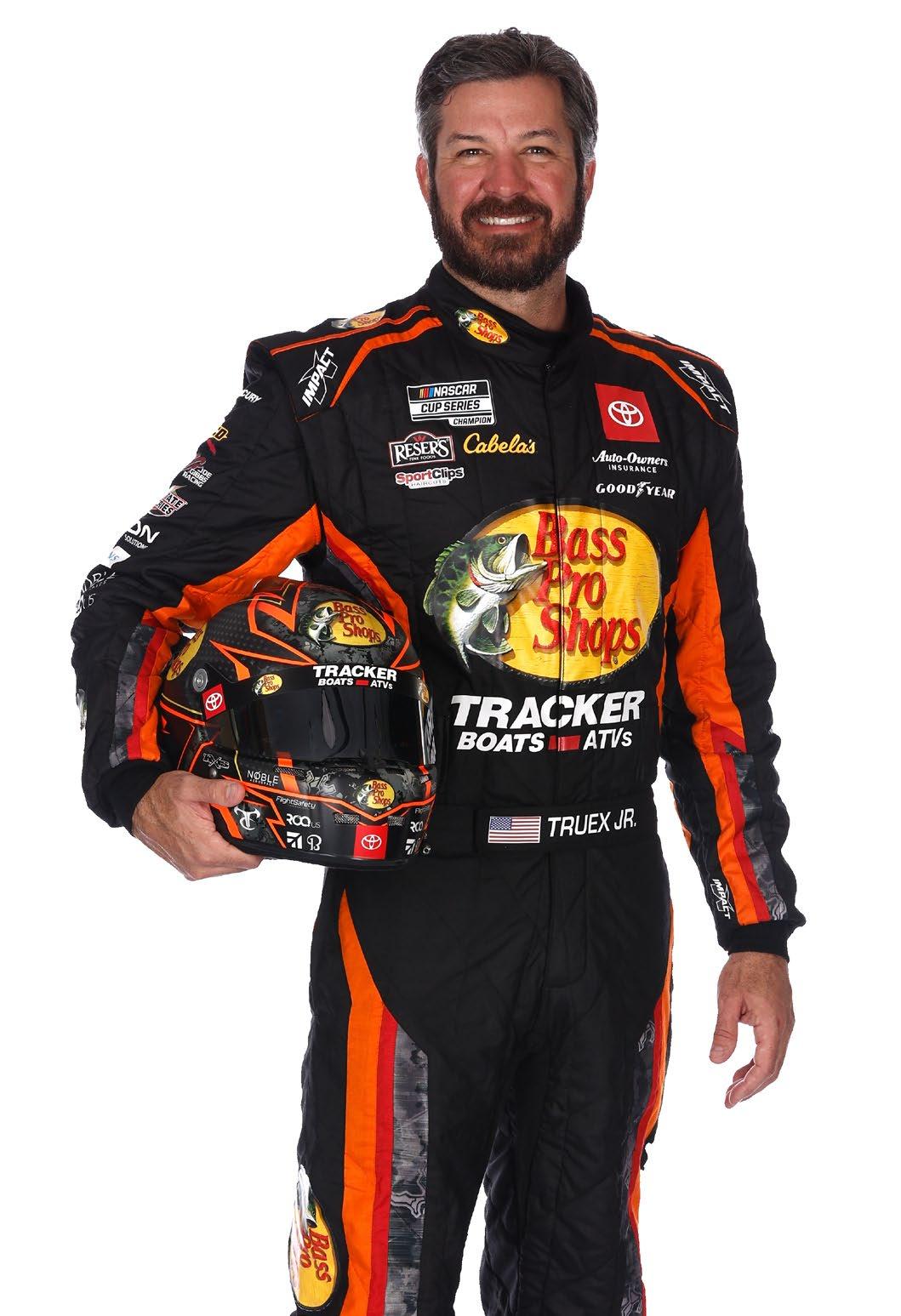
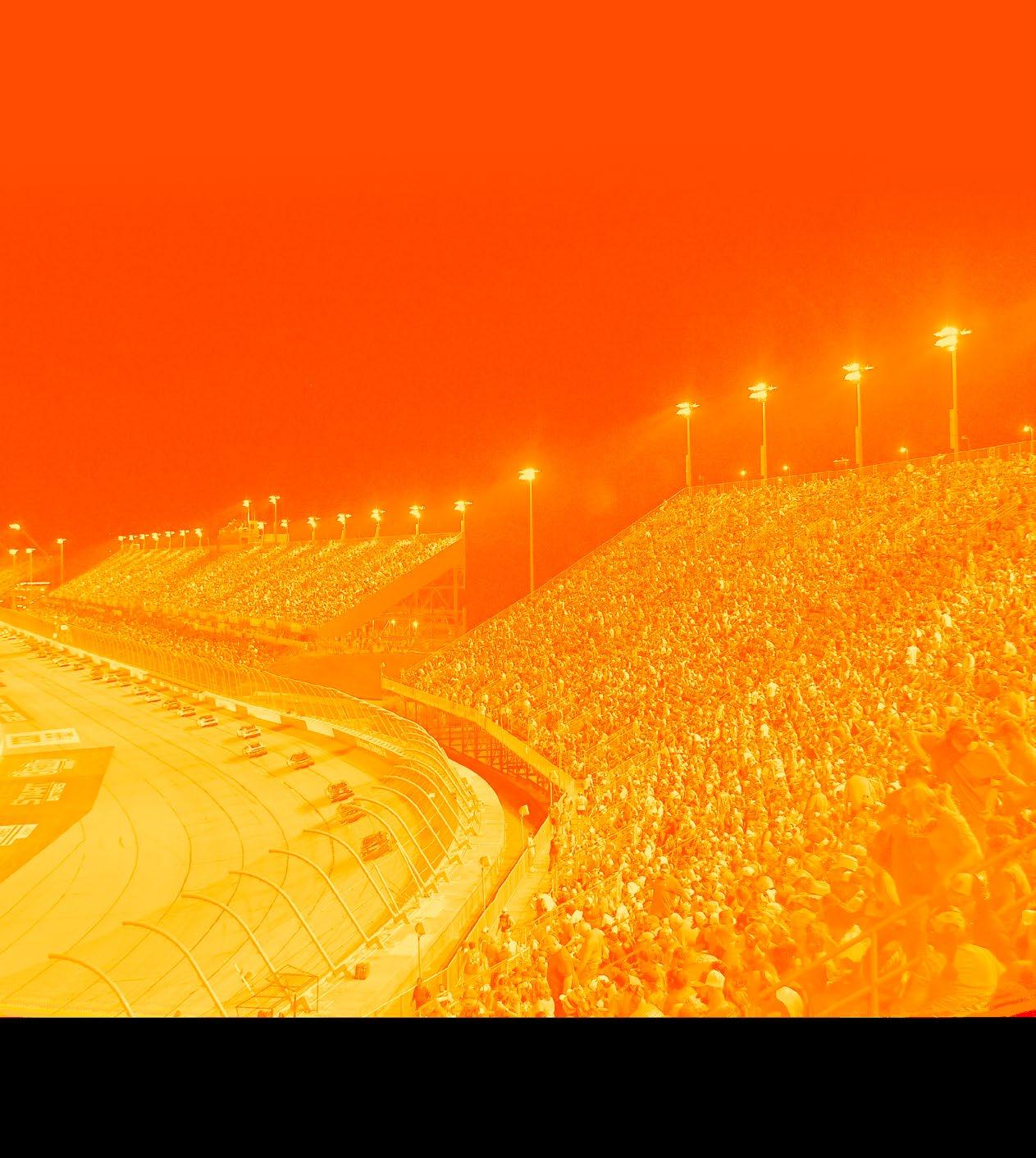


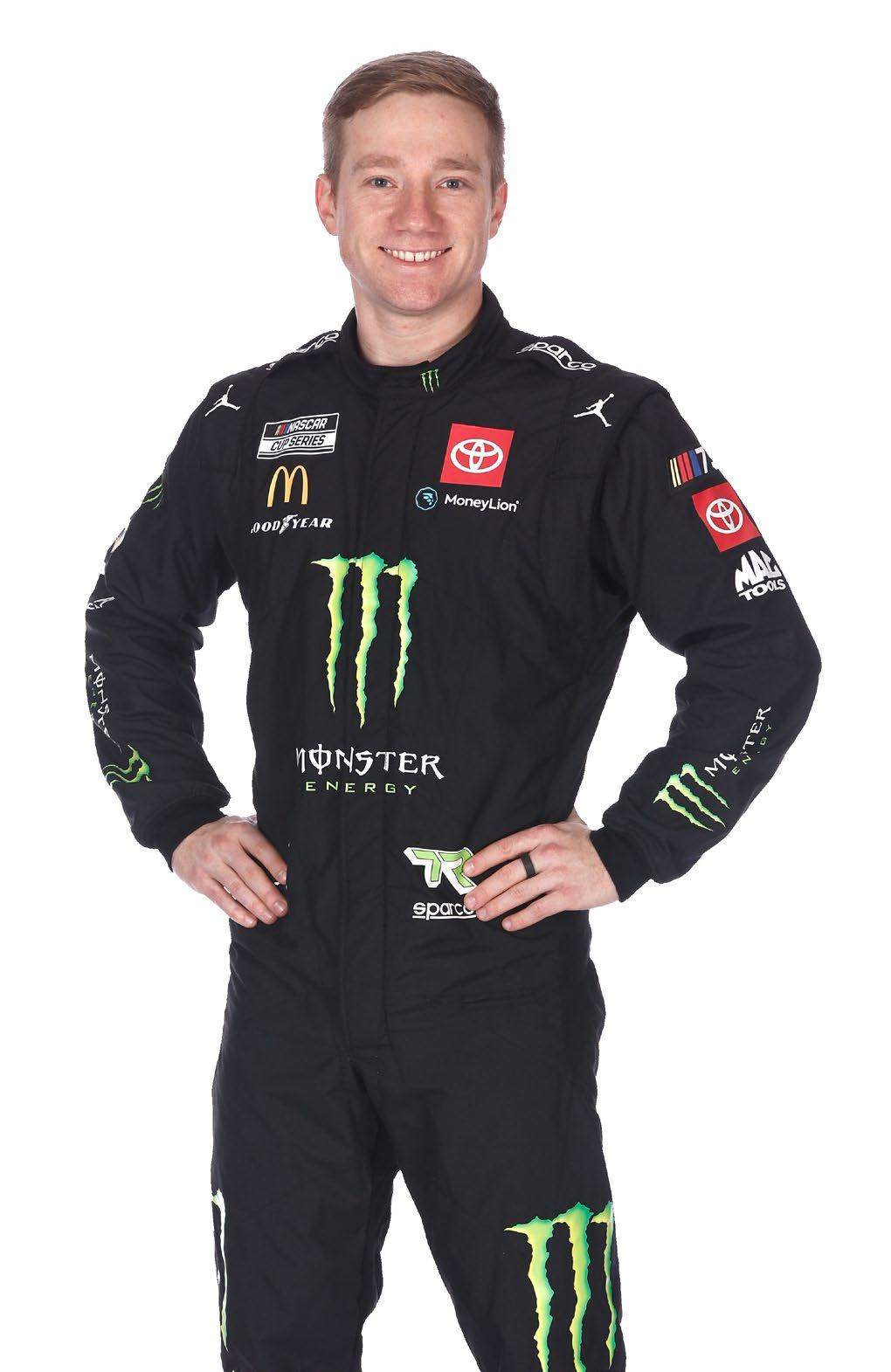

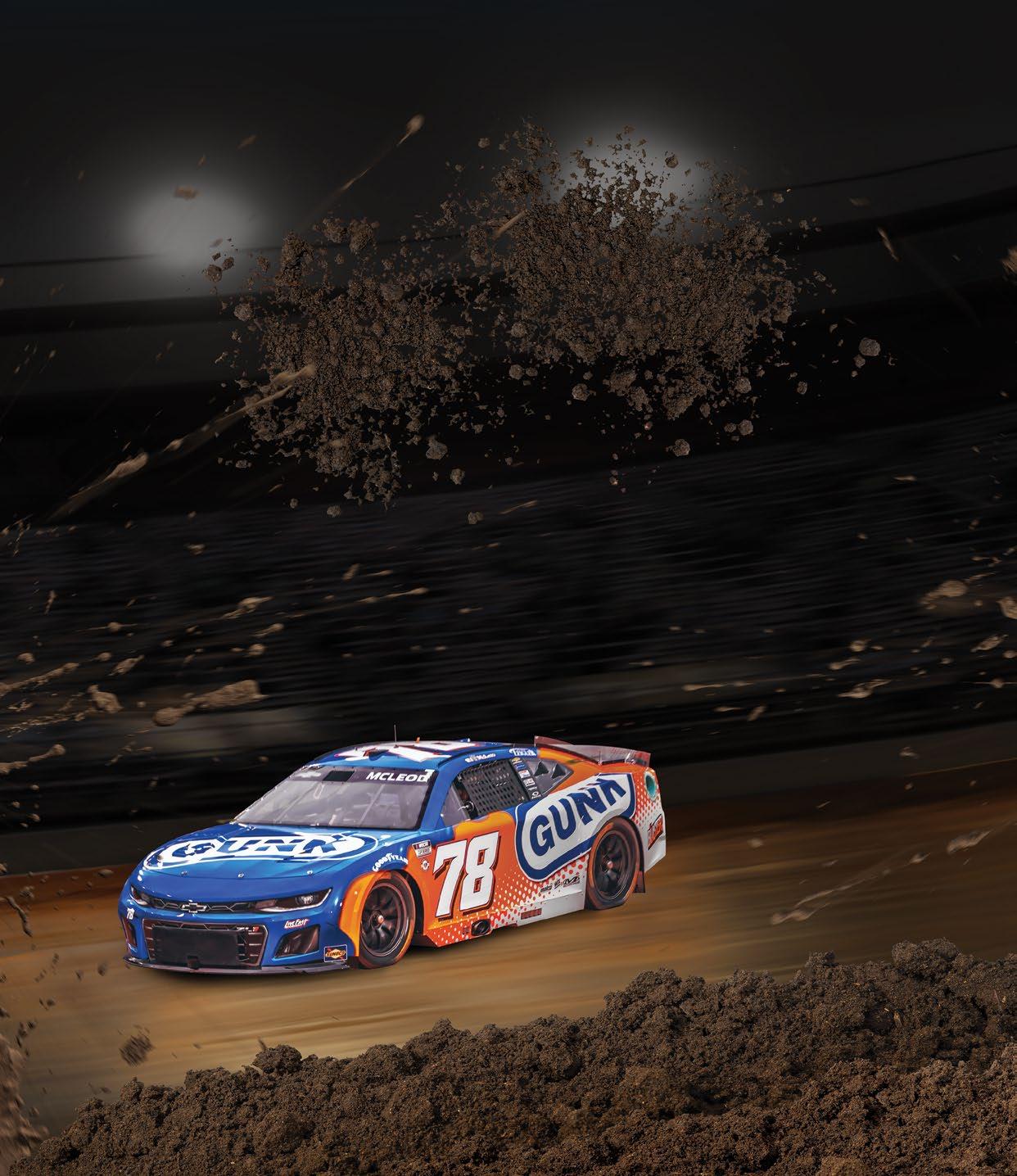

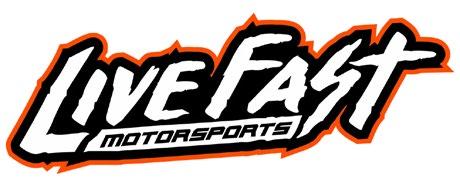




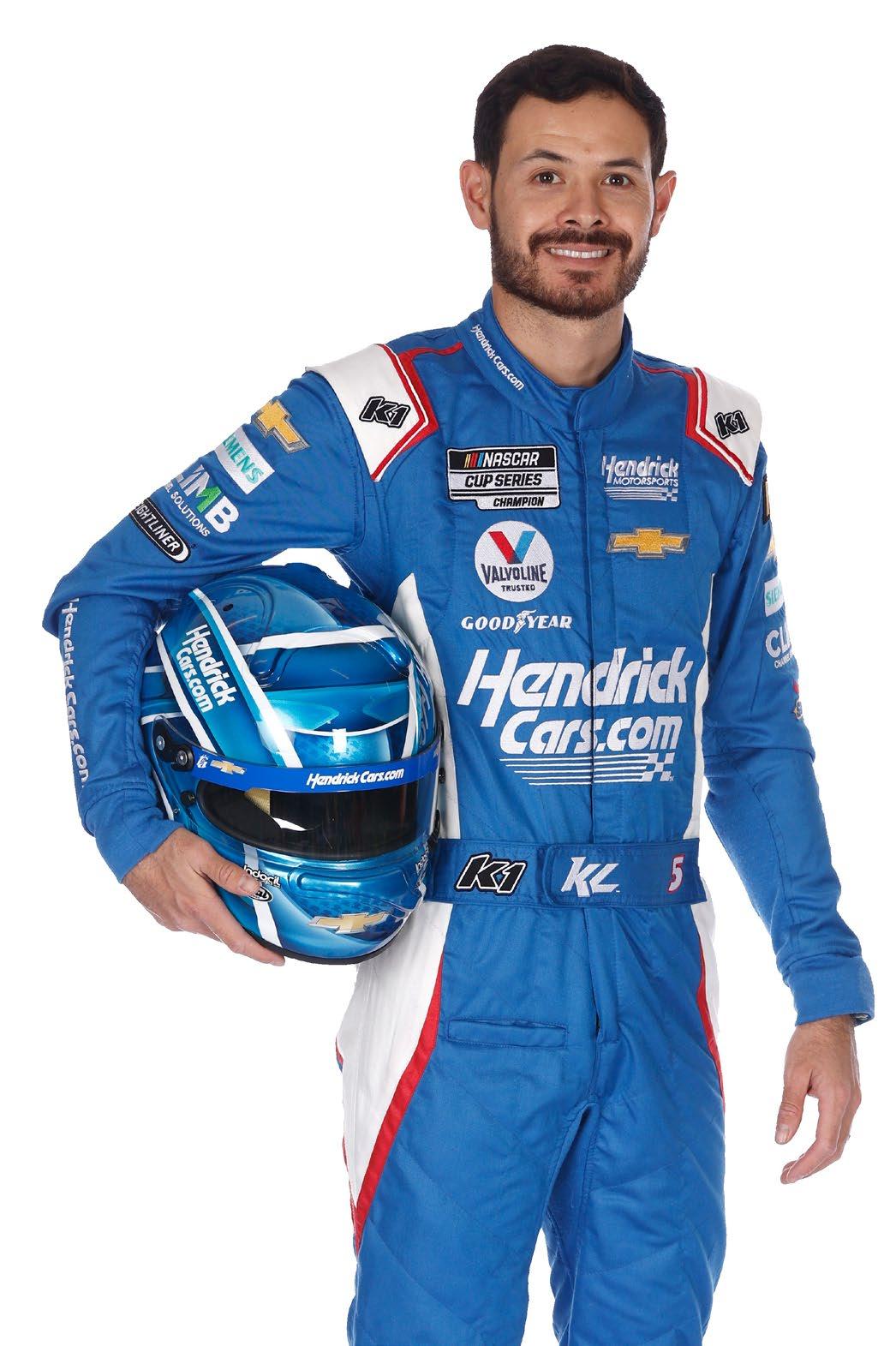





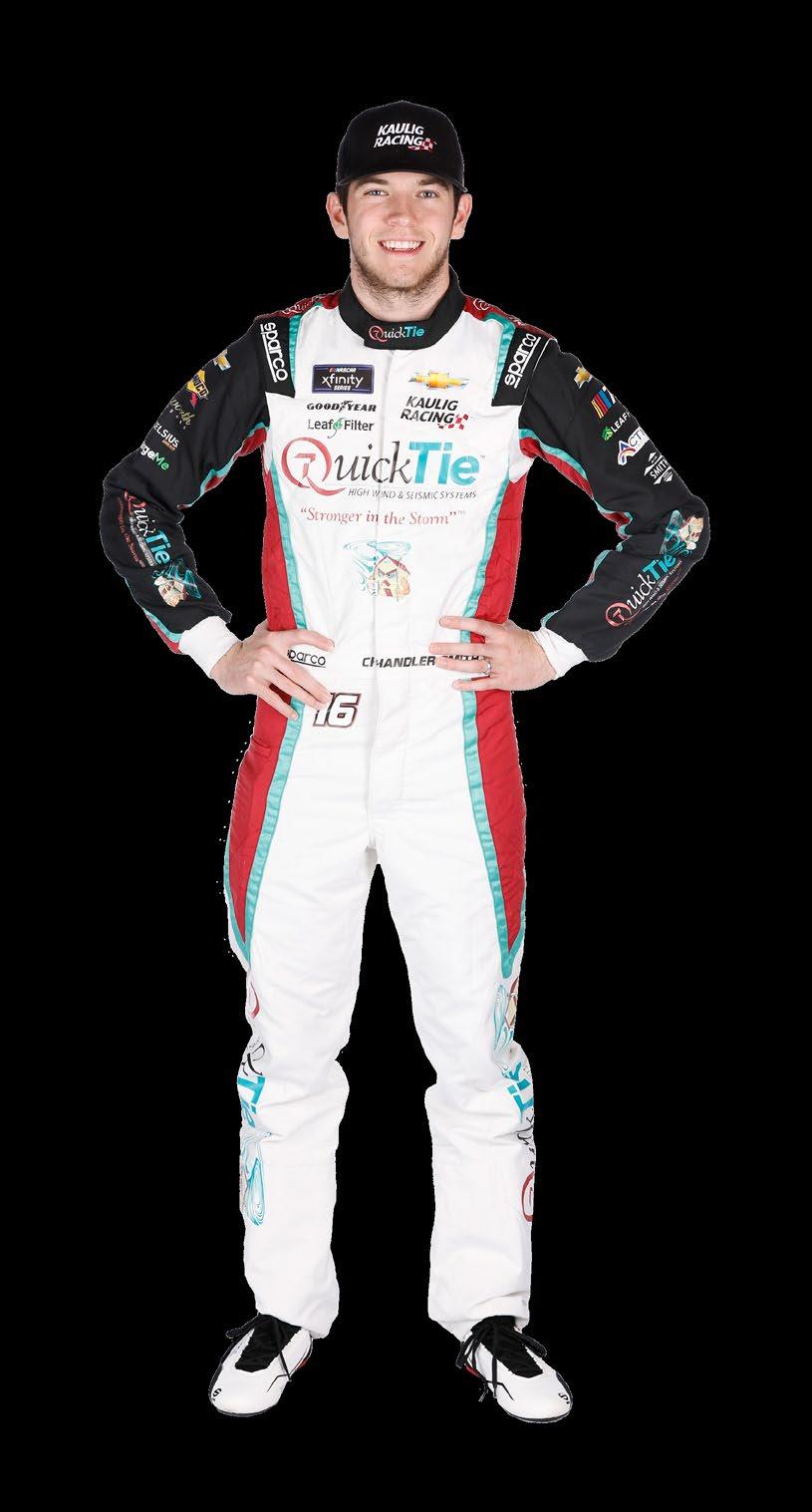

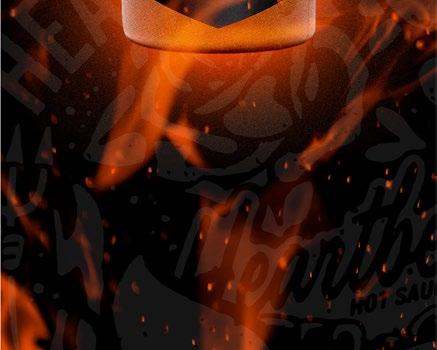
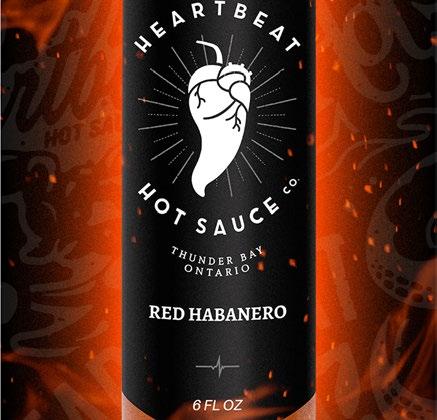


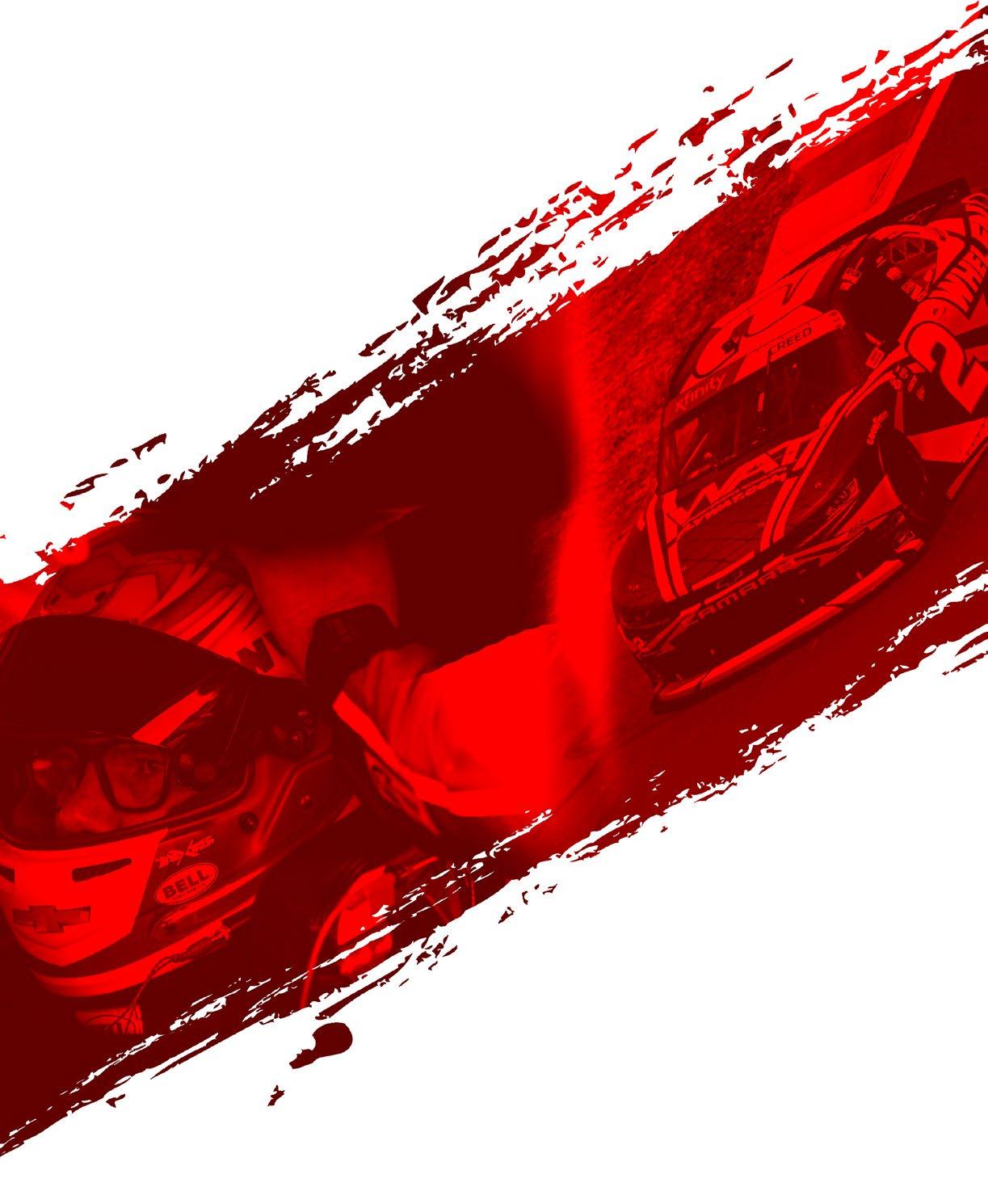

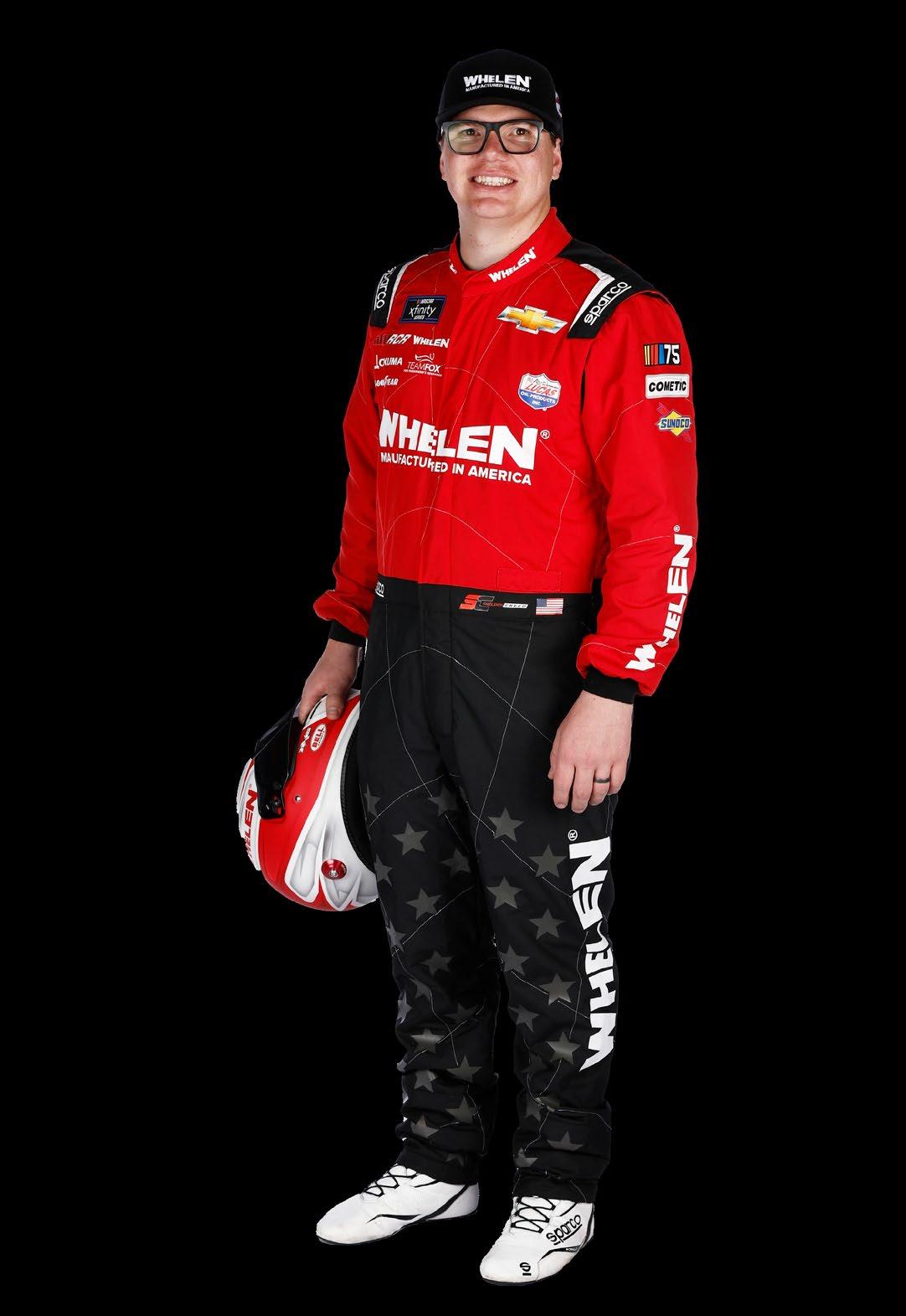

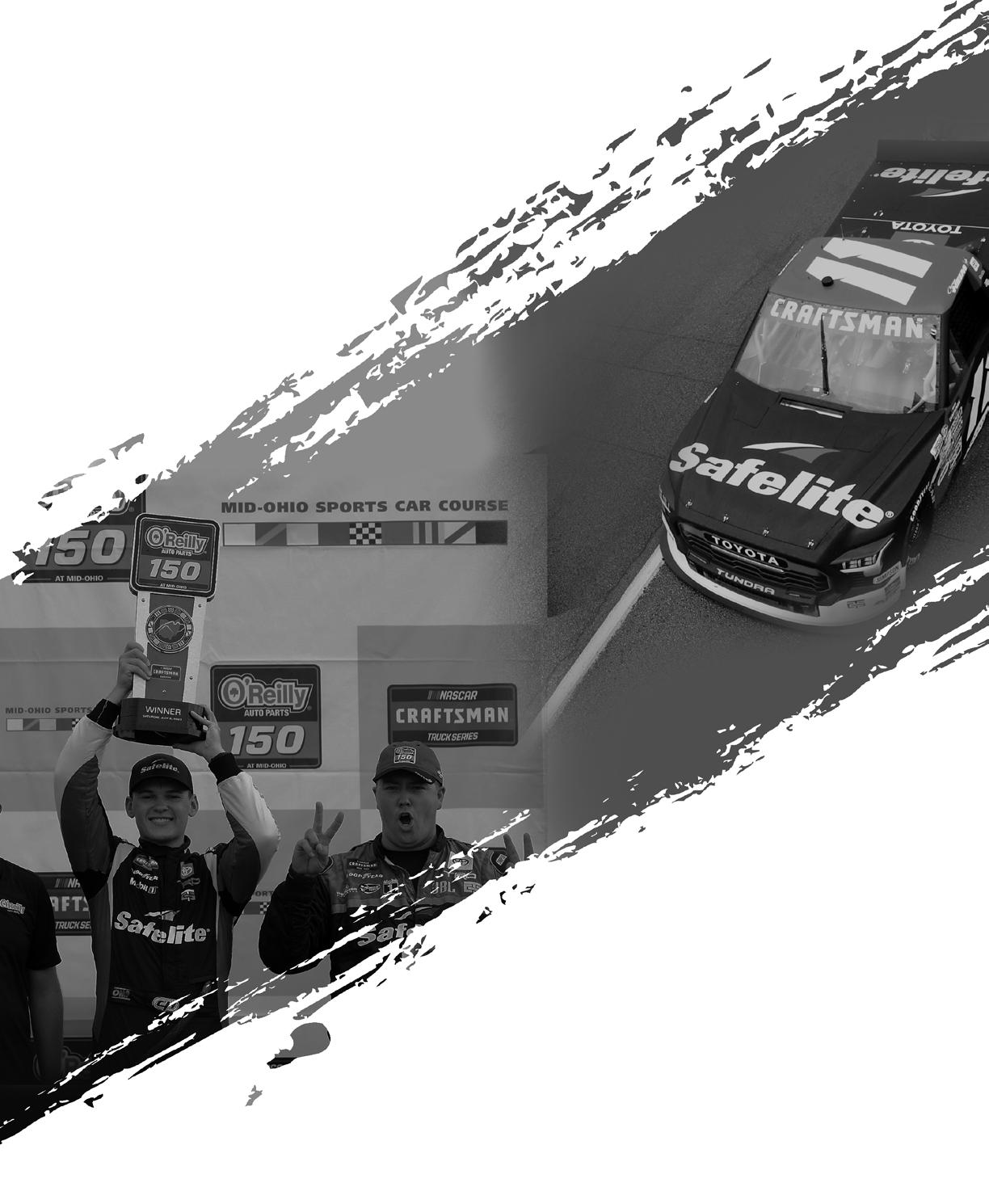

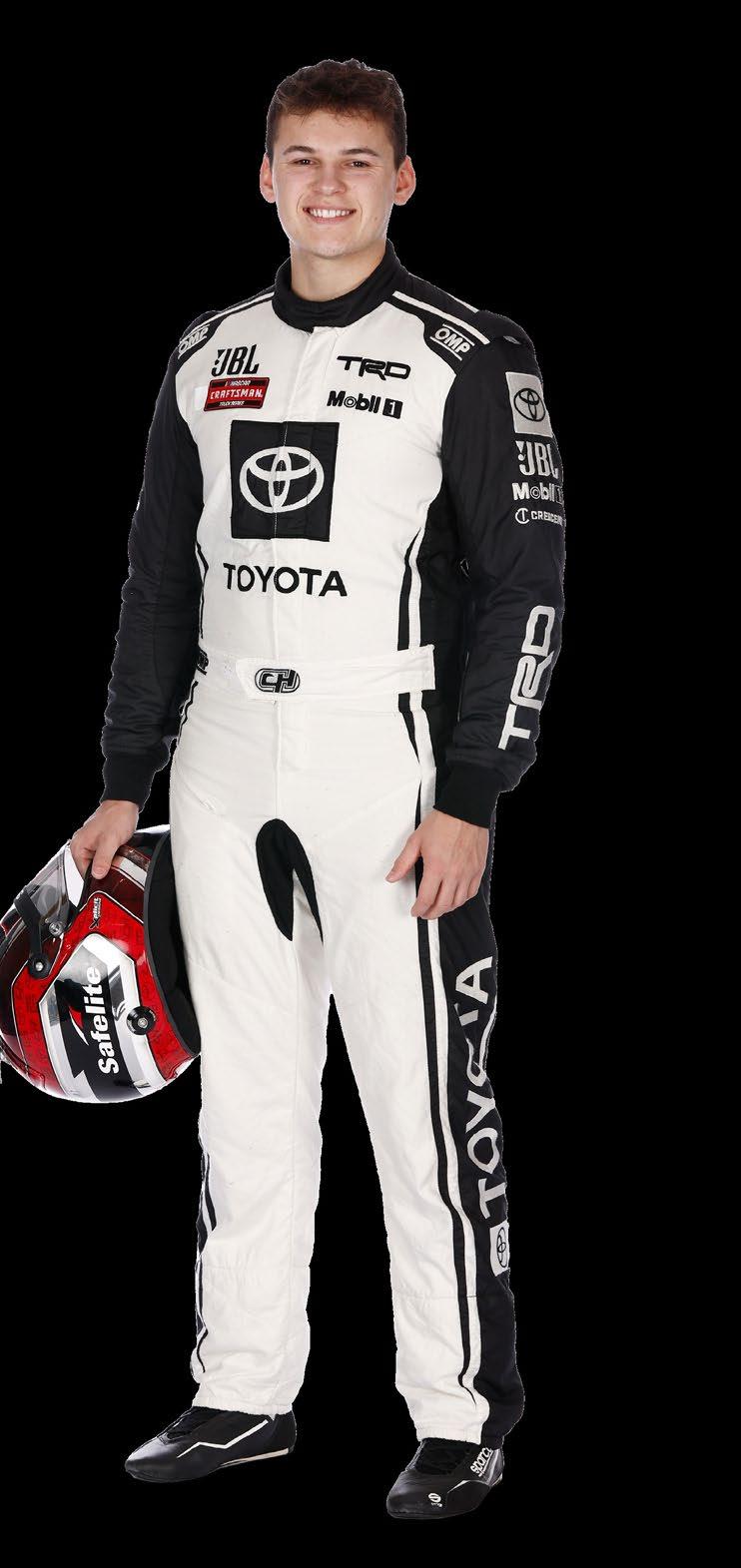

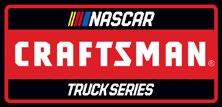
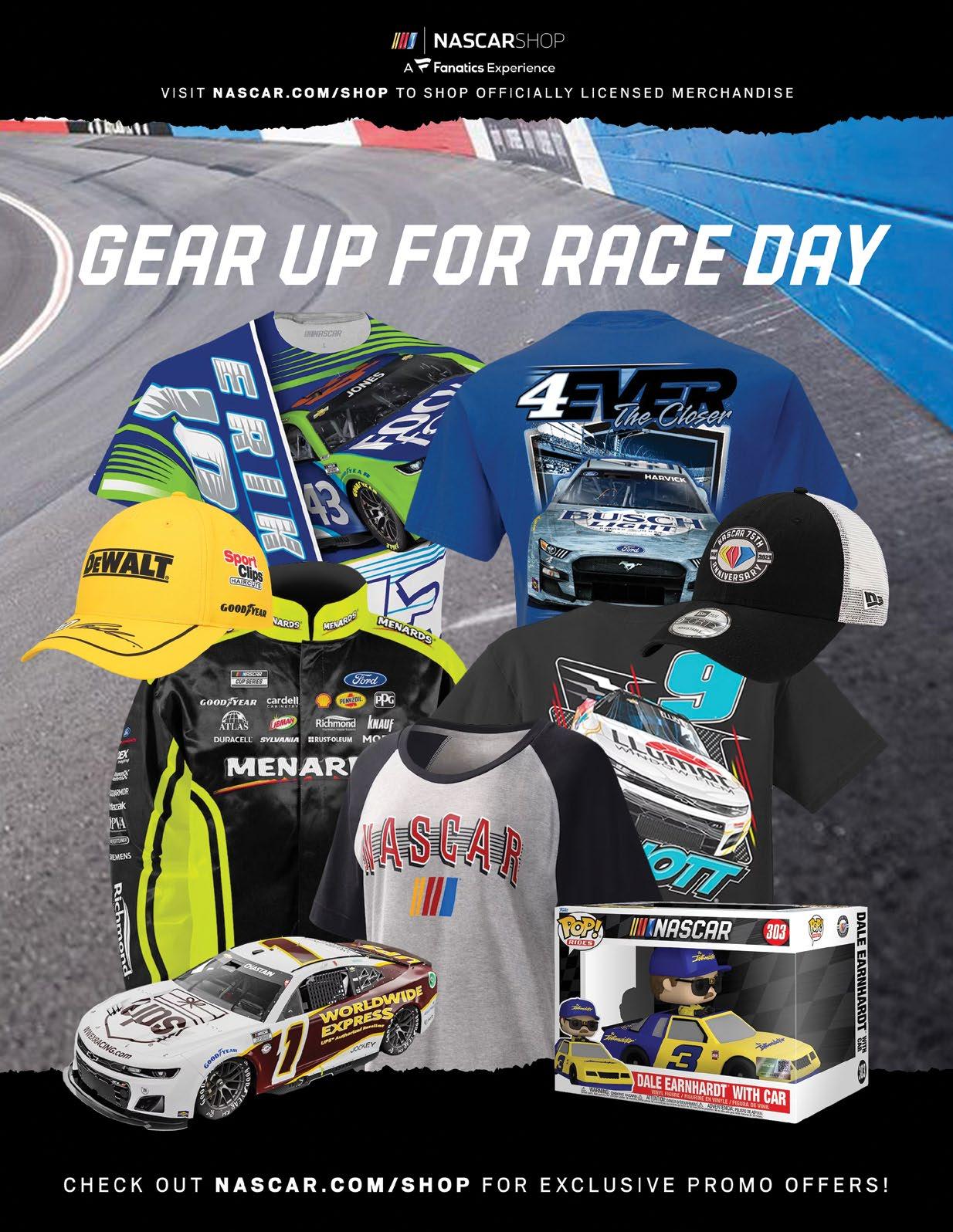
FOLLOWING THE SUCCESS OF THE MEGApopular Slime Licker®, Candy Dynamics is excited to announce the release of its new Slime Licker® Squeeze! With the same delicious tartness as the original Slime Licker® line, the Slime Licker® Squeeze™ brings a new consistency. Unlike their namesake, the 70g Slime Licker® Squeeze™ comes in three flavors: Blue Razz, Cherry and Green Apple. Each display contains 6 Blue Razz, 3 Cherry and 3 Green Apple tubes. Sour candy lovers will love the way the Slime Licker® Squeeze™ paints their tongue and parents will be happy to see the colorful smiles coming from their kids!
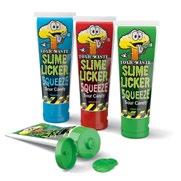
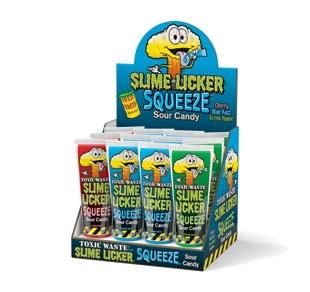
WWW.TOXICWASTECANDY.COM
OOEY GOOEY BUTTER CAKES ARE a must-try for anyone with a sweet tooth. Whether enjoyed as a prerace treat or as a post-race reward, Ooey Gooey Butter Cakes are the perfect way to satisfy your cravings.
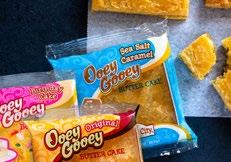
Originating in St. Louis, the bottom layer is a delicious buttery yellow cake, while the top layer is a rich mixture of cream cheese, sugar, and egg. With eight different flavors available, there’s something for everyone to enjoy.
So why not treat yourself to the deliciousness of an Ooey Gooey Butter Cake? Head to your local convenience store and grab a stack for race day – keep them for yourself or share with your racing friends.
WWW.PCBAKERY.COM
KUBOTA’S LINE OF COMPACT TRACTORS IS RATED NO. 1 FOR DURABILITY AND OWNER EXPERIENCE IN THE U.S.*
The Kubota L Series is durable, reliable and built with the power and versatility to mow, haul, plow, dig, grade roads and more thanks to a long list of performance matched attachments. The series features Kubota diesel engines ranging from 24.1 to 47.3 HP with DT or HST transmissions and are simple to operate. Start making the most of your land today with the Kubota L Series. *AWARD BASED ON 2021 PROGRESSIVE FARMER READER INSIGHTS TRACTOR STUDY KUBOTAUSA.COM
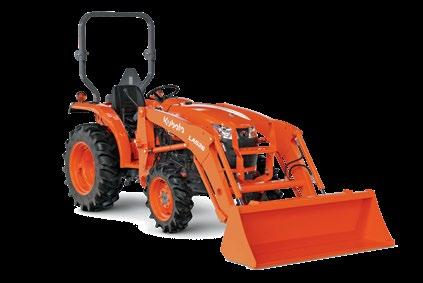

JOE’S CITRUS BLUE HAND
SINCE 1934, FRAM® HAS BEEN A TRUSTED BRAND WITH A LEGACY OF manufacturing industry-leading filtration products. From oil filters, to engine air filters, to cabin air filters, FRAM® has a product to fit your needs.
FRAM’s newest premium oil filter, FRAM Synthetic Endurance™, provides maximum durability, protection, and performance for up to 25,000 miles. FRAM Ultra Air™ engine air filter protects against dust, dirt, and other damaging particles for up to 4 years. FRAM

TrueAir™ cabin air filter’s dual-layered N95 grade media provides anti-bacterial and antiviral protection, keeping the air you breathe clean.
No matter what type of vehicle you drive or what road lies ahead, you can rely on FRAM®.
LEARN MORE ABOUT ALL THAT FRAM® HAS TO OFFER AT FRAM.COM
Cleaner is a waterless hand cleaner specially formulated with d’Limonene solvent. This solvent is derived from nature’s fruit to give you a completely safe way to clean and condition the hands. This amazing hand cleaner contains lanolin, petroleum jelly, and skin emollients to keep the hands and skin pliable and feeling great. Its distinctive blue color and fresh citrus scent bring a new level of cleaning the smell of work off your hands.
Joe’s Citrus Blue is another fine product in the family of Joe’s Hand Cleaners which has been manufactured and distributed in the heartland of America for more than 75 years.
CHECK OUT ALL OUR FINE PRODUCTS AT WWW.JOESHANDCLEANER.COM
WANNA GO FAST? THE XPEDITION EBIKE WILL LECTRIFY THE WAY YOU GET AROUND.

THE LECTRIC XPEDITION IS OUR MOST CAPABLE EBIKE TO DATE. THIS cargo eBike was designed to be the ultimate transportation solution, allowing riders to tackle even the most daunting of hills while holding up to 450 pounds. The XPedition is perfect for a wide variety of riders providing power to cover 150 miles on a single charge. Our all-new Lectric PWR™ programming paired with a 1,310W peak motor, dual-battery and twist throttle makes for a truly robust and enjoyable riding experience. Whatever your transportation needs, the Lectric XPedition is ready to take on the experience with you! Ships free and fully assembled to your doorstep.
SHOP LECTRICEBIKES.COM
WHETHER YOU’RE HEADED TO THE jobsite for a day of hard work or to the great outdoors for some fun and excitement, Aluma has the trailer to get you there.
Aluma offers a complete line of durable, lightweight and maintenance free aluminum trailers. Choose from a comprehensive offering of utility and recreational trailers, including ATV trailers, motorcycle and snowmobile trailers, versatile utility trailers and more. Aluma trailers are also perfect for hauling your classic car, truck or performance vehicle and make it easy to load and offload.
Special features and accessories such as side racks, stake pockets and various tailgate options add versatility and convenience. Aluma trailers are built in the USA and sold through a nationwide dealer network.
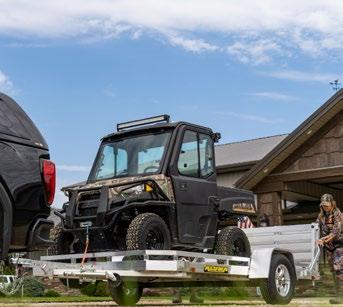
ALUMAKLM.COM
ROUST YOUR TASTEBUDS AND RING THE alarms, these spicy pickles pack a punch! Brined with arbol, jalapeño and habanero peppers, these pickle chips finish with a strong snap and an even stronger kick.
SNAPPY CLASSIC DILL PICKLE CHIPS
EVERY PICKLE LOVER UNDERSTANDS THAT DILL PICKLES ARE THE benchmark for a pickle brand. That’s exactly why SuckerPunch’s Classic Dill Pickle Snack Pack delivers a big dill flavor with a fresh, crisp crunch.
SNAPPY SWEET BREAD & BUTTER PICKLE CHIPS BOX
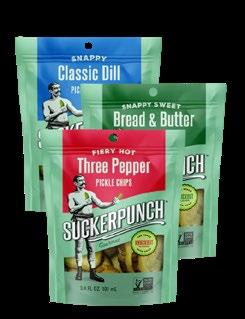
THERE’S NOTHING BASIC ABOUT A SUCKERPUNCH BREAD & BUTTER Pickle, especially when it comes chip cut and fresh-packed in an easy graband-go package! A little sweet, and a little savory, this pickle features bold flavors and snappy texture.
BUY SUCKERPUNCH ONLINE AT SUCKERPUNCHGOURMET.COM OR AT YOUR FAVORITE LOCAL RETAILER.
THIRTY-FIVE YEARS OF CREATING CLEANING PRODUCTS AND ACCESSORIES HAVE BROUGHT US THIS amazing package. Combining the No. 1 voted Hard Water Spot Remover of 2022 with the power of the Bring It On Drill Brushes, cleaning just became less of a chore.

The Bring It On Cleaner can remove the most stubborn hard mineral buildup from most of your hard surfaces, including windows and glass, tile and grout, fiberglass and porcelain, tubs and sinks. Now, add the power of the Drill Brushes and cut your cleaning time in half.
Drill Brushes are amazing for home use, but don’t forget these reusable brushes can be used for all your auto interior. Use them on your dirty floor boards and mats, stained seats and sticky cup holders. Even use them on your rims.
BRINGITONCLEANER.COM
K-Seal is a one-step permanent multi-purpose system for coolant leak repair with more than 9 million bottles sold worldwide to date. It permanently repairs leaks in the head gasket, block, radiator, heater core, freeze plug and water-pump casing.



Trusted by professional mechanics, technicians and motorists alike, K-Seal is suitable for use with all water-cooled engines, including cars, motorcycles, commercial vehicles and heavy machinery.
No need to drain the system or worry about what type of antifreeze is in the cooling system; just shake, pour and get back on the road!
LEARN MORE AT KSEAL.COM
NASCAR POLE POSITION
AN OFFICIALLY LICENSED
PUBLICATION OF NASCAR
23110 STATE ROAD 54, SUITE 293
LUTZ, FL 33549
EMAIL: INFO@AE-ENGINE.COM
WEB: POLEPOSITIONMAG.COM; AE-ENGINE.COM
THE CREW
PUBLISHER: CRAIG BARONCELLI
COMMERCIAL
VICE PRESIDENT: DAVID WATSON
DIRECTORS: MARK MORALES, ROWLAND GEORGE, RICH ALLEN, ARNOUT KOK
CONTENT
CREATIVE DIRECTOR: JOE RABUCK
DIGITAL MEDIA DIRECTOR: NICOLE COOPER
DIGITAL CONTENT DIRECTOR: JOSH MULL
EXECUTIVE EDITOR: ERIC ESTEPP

COPY EDITOR: KEITH WALTZ
EDITORIAL: CODY WILLIAMS, MATT SMITH, JOSHUA LIPOWSKI, CHASE HOLDEN,
TANNER SHUTZE, GREG MATHERNE
SOCIAL MEDIA: JOEY STONE, PAIGE MARTIN, EVAN LIU
CONTRIBUTORS: JARED TURNER, KEITH WALTZ, BEN WHITE, JOSEPH WOLKIN, DUSTIN ALBINO
STAFF ASSISTANTS: AIDAN ANDERSEN, ETHAN ANDERSEN, SHOGUN
CONTENT CREATOR ACADEMY: COLE FETTERMAN
SPECIAL THANKS TO: ANDREW ENGEL (NASCAR)
A.E. ENGINE SPECIFIES THAT POST-PRESS CHANGES MAY OCCUR TO ANY INFORMATION PRESENTED IN THIS PUBLICATION AND TAKES NO RESPONSIBILITY FOR GOODS OR SERVICES ADVERTISED.
NASCAR® IS A REGISTERED TRADEMARK OF THE NATIONAL ASSOCIATION FOR STOCK CAR AUTO RACING, INC.
MAIL ORDER: TO RECEIVE A SUBSCRIPTION TO NASCAR POLE POSITION MAGAZINE, SEND A CHECK OR MONEY ORDER FOR $30.95 TO: A.E. ENGINE, 23110 STATE ROAD 54, SUITE 293, LUTZ, FL 33549. PLEASE INCLUDE YOUR RETURN MAILING ADDRESS AND AN EMAIL ADDRESS AND MAKE THE CHECK PAYABLE TO A.E. ENGINE.
ONLINE ORDER: SUBSCRIPTIONS AND INDIVIDUAL COPIES CAN BE ORDERED ONLINE AT POLEPOSITIONMAG.COM.
DISTRIBUTION: IF YOU ARE A BUSINESS OR AN ORGANIZATION INTERESTED IN DISTRIBUTING COPIES OF NASCAR POLE POSITION MAGAZINE, PLEASE CONTACT CRAIG BARONCELLI AT CB@AE-ENGINE.COM.
SALES INQUIRIES: IF YOU ARE INTERESTED IN ADVERTISING OR WOULD LIKE TO BECOME A FIELD REPRESENTATIVE, PLEASE CONTACT DAVID WATSON AT DKW@AE-ENGINE.COM.
We were at Daytona International Speedway for the Firecracker 400 on July 4, 1984. We had a great engine and a great No. 43 Pontiac with Mike Curb Motorsports. It was a great day because the president of the United States, Ronald Reagan, had flown in to be with us for the race. He even gave the command to start the engines from Air Force One, which I thought was pretty cool.
Robert Yates built us a strong engine. We honestly didn’t have the fastest car, but we had the smartest driver with Richard Petty behind the wheel. And that’s not a bad reflection on Cale Yarborough, our closest rival in the race.
The race distance was 160 laps around the 2.5-mile track. Coming down to the end of the race, we had a pit stop and got out first. Cale also pitted but was able to run us down in the closing laps. We changed rightside tires and Cale, in Harry Ranier’s Chevrolet, changed right sides as well. We got off pit road ahead of him and that gave us an advantage.
We used stopwatches in those days as far as lap times. We didn’t have computers then. I saw Richard was slowing down a little bit. He liked for me to give him a lap time on every lap. I radioed to him to ask if he was OK. He said, “Yep. Keep giving me lap times.” So Cale ran us down but didn’t pass us. He was on Richard’s bumper and at that point, we had about seven to go.
With three laps to go, Doug Heveron crashed going into the first turn. That meant having to race back to the caution flag, as we did back then, according to NASCAR’s rules. Richard hit the gas and caught Cale off guard a little bit. Cale did pass him on the backstretch but Richard got side-by-side with him on the low side in the fourth turn. They touched a couple of times, either Cale hit him or Richard hit Cale – not sure which – before they got to the start-finish line. Cale wasn’t able to draft by because their bumping had slowed his momentum.
Richard beat him to the line by only a couple of feet. It was quite a scene on pit road. We were all jumping around and celebrating. Richard had to go another lap to get to the checkered flag.
Ralph Salvino, an executive with STP, had been telling me during the weeks leading up to that race how great it would be if Richard could win his 200th race at Daytona. He already had seven Daytona 500 wins there and it was the perfect place to get his 200th win. With a lot of help from some great crew members around me, I was able to win 50 Cup Series races during by 23-year career. That win in 1984 with The King certainly tops the list. But let me say that the car we used that day was a Petty Enterprises Pontiac and Dale Inman, Richard’s longtime crew chief, certainly deserves a lot of the credit for that win.
Veteran Shopping Benefits: Honorably discharged Veterans can shop tax free at shop myexchange.com, and Veterans with service-connected disabilities enjoy in-store military exchange and commissary shopping privileges as well as access to select MWR resale facilities.
It Matter Where You Shop: Tax-free shopping and military-exclusive pricing save you money while 100% of Exchange earnings goes back to support Soldiers, Airmen, Guardians and families. In the last 10 years, your Exchange benefit has provided $3.5 billion in earnings for critical military Quality-of-Life programs.
The Army & Air Force Exchange Service provides tax-free savings with exclusive pricing for every member of the military community. shopmyexchange.com/vets shopmyexchange.com/relevancy

aafes.media/vets
The Exchange is a Department of Defense Organization






